[photo courtesy NASA]
Blue Moon
Maybe the Man in the Moon has never been thirsty, but if he were, things are about to get better for him. According to NASA, there is water, not only on the dark side of the moon, but on the sunny side, too. Not much, still about a hundred times less than what’s in the Sahara, but perhaps enough for one man. Now that we are planning to send the first woman and the next man to the lunar surface in 2024, it is best they get some training in diplomacy in order to establish “a sustainable human presence there by the end of the decade.”
However, if go the old fashioned route, colonizing the moon as has been done on other continents, fighting and tripping over each other to get at the resources — because the thought of such economic opportunities is indeed grand — then the life of the Man in the Moon will be in great danger indeed.
Do we dare recall a few things from our history? Let’s give it a shot.
[Blue Moon over Central PA — All Hallows Eve — 10.31.20]
Colonizers have never played fair, not anywhere, not in Australia, not in Asia, neither in Africa, nor the Americas. Just ask the Native Americans, or the Aztecs, or the Aborigines, or any people so overcome.
We hope to have fixed it all with Indigenous People’s Day, — finally reaching a moment in our history where we say no to serfdom and yes to common effort, working together to treat each and every human being with dignity and rights —but we still have a ways to go on that and so we keep working.
Why am I writing about all this when I promised you a Blue Moon?
Well, my fear is that the news about water on moon will be met by corporations across the earth wanting in on the pirate’s booty, looking to get their hands on whatever the moon has to offer — minerals, water, even just moon dust probably has a value here on earth — and in so doing they will exploit the moon as they exploit the earth, without regard to the effects on humanity, on the environment, or on the interactional activities between the moon and earth since something that can cause the oceans to rush in and out each day is obviously packing some serious mojo.
Before we muck up the balance on yet another planet in an effort to cash in on its resources, there should be a few ground rules, or maybe moon rules, that will result in fair access to lunar resources that benefit The Commons and support all of humanity, not just a few corporate interests.
For example, we should not think of the moon as a possible landfill for earth’s waste. Instead, let’s adopt policies of sustainability, policies that do not deplete the moon’s resources in a few decades or even a century, basically the opposite of how we’ve done things here on Earth. We’ll need much more than a Youtube tutorial to adopt such a system. Since we’re starting from scratch, why not adopt the UN’s Sustainable Development Goals at the beginning of this ride and not after the fact which always leaves us destined to play catch up.
[Blue Moon over Central PA — All Hallows Eve — 10.31.20]
I suggest universal legislation as a way to make exploration of the moon fair and equitable for all. (I can hear businesses groaning already — not more legislation!) International treaties can help avoid the worst scenarios such as in the Amazon, Colorado, and California, which happen to all be burning right now.
Most importantly, just because you can do something — smart or stupid — doesn’t mean you should. Foresight makes infinitely more sense than hindsight where overuse of a resource that belongs to all of us — think mining, extraction, excavation, digging, dredging, and/or despoiling — is an abuse of power and ultimately an unsustainable use of that resource.
In these situations, rather than the tragedy of the commons, let’s apply the rule of the commons.
What if we approach the Moon as a common resource shared by all, serenaded in all cultures, the light on all lovers’ paths, the aspiration for dreamers, the home of one man that entertains the dreams of all men?
And when we finally find Mr. Moon, let’s be diplomatic and democratic — because he was there first, and it is his house.
pam lazos 11.8.20
***
This year I joined the Board of the Global Water Alliance in Philadelphia and have gotten to see first hand just how extensive a reach the GWA has. So many of our GWA partners are writers, educators, academics, and leaders in their fields in addition to being Water Warriors and Chantel Victoria Bright is all of these.
A first generation Liberian-American, she knows the woes associated with a lack of access to clean water, especially as it impacts young girls, and has written this delightful book — Janjay — to shine a light on the problem because only light can eliminate the darkest parts of us. Chantel has dedicated Janjay to “all the little girls around the world who travel long distances just to provide clean water for their families.”
With Janjay, Victoria Bright is “teaching Children through literature about environmental health risks associated with drinking water access in developing countries.”
I’m going to let Chantal tell you her own story:

On my normal one-hour commute to work while standing on a crowded London Underground train, I started typing on my mobile phone, what would become the beginning chapters of my first children’s book entitled, Janjay.
Janjayh is set in the small West African country of Liberia, the birthplace of my parents. When my parents were growing up, Liberia was safe, economically prosperous, and to the outside world—a model African country for newly formed decolonized African nations. But, behind the image, was internal rumblings of conflict between the minority elite Liberians—who had run the first independent Black republic since 1847 and the majority oppressed Liberians. After the 1980 coup d’état, and assassination of the sitting president in 1990, the country would undergo fourteen years of war—killing and displacing hundreds of thousands of people and destroying the basic infrastructure such as electricity and water sources.
I was born in America, but I spent the first few years of my life living in Liberia before the conflict really began and my family fled the country to seek refuge in the States during the early 90s. Returning to America seemed the natural choice for my parents because they had both pursued higher education in the U.S. Even though I grew up in America, my heart was always in Liberia. I returned in 2006, after the end of the conflict, to discover the once developed capital left in shambles. I was drawn to the impoverished neighborhoods and children –particularly young girls who I witnessed to be smaller than the buckets of water they towed on top of their heads or carried in their arms often while wearing school uniforms. I think this is when it all began for me. The passion for wanting to help improve access to safe drinking water in developing countries. But how?

Over the years, I took part in civic engagements on access to clean water, attended events, volunteered with charities, dedicated my studies to water security. I always found a way to include the message on the importance of clean water access. When I started penning (or digitally penning) Janjay—I really wanted to highlight the lack of safe drinking water access. I wanted the story to be authentic to Liberian culture, so I incorporated local language. I wanted to move away from the narrative that only poor communities lack access to clean water because that’s not always the case, and also dedicate the story to girls around the world like Janjay who travel miles only to help provide clean water for their households. But water access is such a serious and heavy topic. How could I appeal to children who are unfamiliar with these circumstances without drowning (excuse the pun!) the story in technical knowledge? Most importantly, I still wanted to preserve the dignity of girls who face these issues as a part of their daily activities. So, I decided to include a great deal of humor and showcase the main character as a smart and adventurous girl who came from a middle-class family of four (because yes—these families face the same challenges) and describe Janjay’s life in Liberia like any other kid around the world. Whether children live in a small village in India or a big city like London; they all still more or less enjoy the same things. Janjay likes to read, eat her favorite dessert—papaya pie—and play with her friends. The only thing that sets her apart from children in the so-called ‘developed world’ is that she has the added responsibility of collecting water for her household. The plot centers on how one day Janjay finds herself distracted by afternoon fun with a friend, which causes her to neglect her duty of collecting water for the family. She later discovers the seriousness of her actions and learns a life lesson about disobedience and the important role she plays in her family.

Lack of safe drinking water access is not exclusive to low-medium income countries. Environmental injustice still exists in more economically thriving countries such as in the U.S. I know first-hand, because I was one of the kids in Philadelphia who attended schools where I had to purchase bottled water if I forgot to pack it. While children in Philadelphia are not walking miles to collect water from wells, some Philadelphia students can’t drink water from the drinking fountains at their public schools because of lead contamination. Today, Flint, Michigan still doesn’t have clean water and unfortunately it is not the only other city in the richest nation in the world to be without safe drinking water access.

Janjay was published in 2017and the success captured the attention of the U.S. State Department-Africa Regional Services Nouveaux Horizons. The book has been translated to French, Janjay, La petite porteuse d’eau. The French edition of Janjay ismarketed in French-speaking Africa, Haiti, and distributed to American embassies to support programmes.
When I wrote Janjay I set out to deliver three key messages. First, offer representation of Black characters in the children’s book industry where diversity is lacking. Second, bring awareness to clean water access. And finally, demonstrate how women and girls are traditionally responsible for water supply in the household.

The sequel to Janjay—Janjay goes Upriver is set to be released in the early part of 2021. This time, with a little less humor, a lot more drama, and with a focus on sanitation and access to toilets.
Chantal Victoria Bright is writer, blogger, and academic. She is a first-generation Liberian-American. Due to the civil wars in Liberia, her family sought refuge in the United States where she grew up in Philadelphia, Pennsylvania. She holds a master’s degree in Environmental Management from the University of Pennsylvania and a bachelor’s degree in English and Political Science (dual course) from Seton Hall University. She is pursuing a PhD in Water Security and Environmental Peacebuilding in Liberia at the University of Manchester in the United Kingdom.
Twitter: @channi_v ; Instagram: @channi_v; LinkedIn: chantal-victoria-bright524; www.chantalvictoria.com;
Purchase Janjay here
Illustrations designed by Adebayo Dare
Thanks for reading!
pam lazos 10.12.20
***
[Photo Credit: Pexels.com]
It’s good to know there are eco-warriors out there providing content for free on some of the most pressing environmental issues of our time. From time to time, Mark Harris reaches out to me with some timely piece about how to improve our environmental footprint. Thanks, Mark, for today’s piece on solar panels. Take it away!
A Homeowner’s Guide to Benefitting from Solar Panels
Eco-conscious living is a growing concern among Americans, with nearly three-quarters of people surveyed saying they are worried about the environment. As a homeowner, one step you can take to support a healthier earth is to install solar panels. This allows you to tap into a clean energy resource that doesn’t pump ozone-damaging emissions into the atmosphere. Solar panels also have practical benefits for you as a homeowner, from safeguarding against rising electricity rates to increasing the value of your home by 4.1%. Find out how to reap the rewards of solar panels for your residential property below.
How will solar panels benefit you as a homeowner?
Solar panels will lower your electricity costs. One study revealed that homeowners installing a solar power system can save roughly $7,000 to $30,000 over 20 years. Additional research shows that in America’s 50 largest cities, single-family homeowners would pay less for power if they bought a photovoltaic system outright than if they relied on current municipal energy sources. What makes this data so impressive is the fact that it’s based on the assumption that homeowners will make a full-price investment in solar panels—which you may be able to avoid.
One option for installing affordable solar panels is to take part in the Federal Housing Authority’s Energy Efficient Mortgage program. With this initiative, you can finance eco-friendly updates with your FHA-insured mortgage. Such an energy package can cover other improvements, as well, like your HVAC system or insulation. To qualify, the home improvements must be cost-effective, as attested to by a qualified home energy rater, auditor, or assessor.
What type of roof do you need for your solar panels?
Before you jump on the solar power bandwagon, your current roof must be assessed for photovoltaic panel compatibility. The material, pitch, size, and orientation are all factors to consider, as is the amount of shade versus sun your roof sees on a day-to-day basis. Most roofing materials can accommodate panels; according to Solar.com, popular and appropriate options include composite or asphalt shingles, tile, metal seam, and tar and gravel. Slate or wood roofs are problematic, on the other hand, because of their brittleness.
Your roof must also be large enough to accommodate sufficient solar panels to meet your energy needs. Its pitch is another consideration. An angle of thirty degrees will save you about $1,094 per year if you are living in New York, for example, compared to $979 per year with a pitch of only five degrees. These numbers will vary depending on where you live. For instance, if you’re further south, solar panels will result in greater savings because you have the advantage of more sun exposure, thanks to a location closer to the earth’s equator.
What does the installation process look like?
The first step of solar panel installation is an engineering site visit to assess the suitability of your roof and the permits required. After ordering the equipment, the installation team will get to work. First, they will put in the electrical wiring that connects each panel to your home’s general power system. Specialized racking is then secured to the roof. The panels are subsequently installed, followed by the inverters, which take the direct current energy created by the panels and transform it into usable alternating current energy. You can find your certified solar panel installer using this online search platform; just plug in your zip code.
While the process will require some research and time (installation alone can take a few days), once you’re all set up, you’ll benefit from the energy and money savings of solar power for years to come. You will also have the mental comfort of knowing that you are doing your part to reduce your carbon footprint and create a more environmentally conscious future.
Want to read more about Mark’s work. Check out his website at Awareness Toolkits. A few other links that Mark likes: fast food chains going green and a composting share site.
Thanks for reading!
pam lazos 10.3.20
***
[Fruits united for a plastic-free life]
Plastic-Free Life
I think I’m just one of those people that needs a mission. This week I decided that if I’m ever going to even approach a Zero Waste Life, I need to find ways to buy things with less built-in waste. The problem with that is I don’t have gobs of time to search the world for such items so why not coax the world into providing them for me?
I thought I might try something locally, like writing to my grocer and asking him/her to reduce single-use plastic usage and see if together we can’t make a small dent in some of this plastic craziness.
Here’s the letter if you want some ideas to do the same thing in your town:
Dear Mr. or Ms. Grocer:
Our world is awash in plastic — literally. If you don’t believe me, you only have to google the Great Pacific garbage patch to see just how this 5-mile stretch of a plastic island is choking wildlife and suffocating the habitats and breeding grounds of the ocean dwellers. Why should you care, you may be asking yourself now, since you are running a grocery store, not a marina, and how the heck does an ocean garbage patch affect you and your store anyway?
Well, allow me to share a bit of information. The world uses about 4 trillion plastic bags a year while about 150 million tons of plastic is produced for single-use, and 8 million of those tons ends up in the ocean. Holy crap of a waste stream, that’s a lot of plastic!
You, as the provider of food for the masses, are in a unique position. The products you deem worthy of putting on your shelves are the ones people choose between to buy. If you removed single-use plastic from the equation, there’d simply be less of it out in the world post-purchase. I, and many others, would be thrilled if you were to remove the plastic from my zucchini and broccoli, from my squash and carrots, from my cauliflower and all the other veggies that have found themselves enmeshed in a prophylactic living situation.
I don’t believe that wrapping vegetables in plastic improves the taste or quality of the product, and if it’s the possibility of contaminants — people do sometimes sneeze and cough when shopping — being transferred from person-to-product while the vegetables sit there, waiting for someone to purchase them, then you really don’t need to worry too much about that because: a) everyone knows you need to wash your veggies before you eat them; and b) that’s what our immune systems are for. Maybe I’m overstepping here, but perhaps you could just display things in the same manner they came into the world: naked, the way God intended.
I understand there will be some people who prefer the plastic wrap, and for them — at least during this plastic phase-out period — you might want to leave a few bags around to collect the stray lemons and beets, and to catch the fish juice so it doesn’t drip all over the milk. (Actually, I think we might always need to have some plastic around specifically for the drippy meat products because that just makes good sense.)
For the rest of us, a few reusable bags for our vegetables would be great, allowing us to bag and bag again without waste, something we’d probably all willingly pay for if it meant one less turtle would end up with a straw stuck up its nose. Oh, and speaking of straws, can you just eliminate those plastic ones and only sell reusable ones? The turtles will be thrilled.
I know you have a lot on your plate and this seems like such small potatoes in comparison, but think about it. As the provider of foodstuffs, you wield great power. I just ask that you use it wisely.
On behalf of the planet, I thank you for your kind consideration.
Want to start a movement? Writer to your grocer and ask for a little help here. Perhaps we can remove single-use plastics from our environment one grocery store at a time. The turtles, and your children, will thank you.
pamlazos 5.10.19
***
Impermeable Surfaces
If asked “What is the biggest threat facing humanity,” what would you say? Wildfires? Extreme Weather Events? Floods? Mass migration? Drought? Climate change? Mass Extinction? Our refusal to deal with our big issues? Ennui? If I had to pick, I’d say impermeable surfaces makes the top ten list.
“Really?” you reply, somewhat incredulous. Let me explain.
Impermeable surfaces, a/k/a impervious surfaces do not allow water to pass through them so when you combine superstorms with a whole lot of asphalt (or macadam, depending on where you’re from), you end up with a whole lot of property damage like:
Hurricane Katrina (New Orleans, 2005) – 2.5 billion in water infrastructure damage;
Tropical Storm Sandy (New Jersey and New York, 2012) – $3billion in damage to NYC’s water/wastewater treatment plants alone.
Hurricane Harvey (Houston, 2017) – over $125 billion total costs with damage to more than 800 wastewater treatment plants and 50 drinking water systems.
You’ve probably noticed that climate change is among the hot topics in our 24/7 news cycle. I’m not going to go into whether it’s real — 99% of scientists agree that it is so why are we still questioning it (a convo for another day) — but the truth is, 100-year storm events are more frequent then every hundred years these days, likely due to climate change, and now they’re starting to bunch up on us as you probably noted from the three just mentioned.
In addition:
- In the last 100 years, the earth lost 50% of the world’s wetlands;
- Major port cities like Houston (founded June 5, 1837), and Philadelphia (founded October 27, 1682) were built on marshes, swamp, and forested land, areas that used to hold flood waters;
- wetlands and permeable surfaces provide $23 billion in storm protection each year in U.S. alone.
Houston has no formal zoning code, meaning developers get to build wherever and whenever. If you’ve ever driven in Houston, it’s one long traffic light, miles of pavement and highways and byways with nary an open green space in sight. So when it rains, and rains hard, the water has no where to go because the pavement is blocking its return to groundwater.
Instead, it skitters along the sidewalk looking for the low spots, ultimately finding the streams and rivers until those back up like a basement built in a flood plain without a sump pump and then where does the water go? Well, to the streets, of course. And that’s when it becomes an emergency.
Green infrastructure can help avoid this scenario because it can: control flooding; improve water quality; act as a wildlife nursery; provide buffering from winds and storms; provide recreation and tourism opportunities; hold onto carbon dioxide to slow its release into the atmosphere; and its nice to look at!
Want to move from impermeable surfaces like highways and driveways to pervious ones like rain gardens; green roofs; bioswales; retention basins; and pollinator gardens? Instructions abound on the internet or you can email me and I’ll send you step-by-step instructions.
Let’s keep water off the roads and in the rivers where it belongs. Where you can, switch out those impermeable surfaces in your yard for something green and growing. The benefits to you and the planet, over time, will be enormous.
pamlazos 4.10.19
***
When Fish Poop Feeds the World
If you or your kids have ever won a goldfish at a carnival, chances are you took it home and stuck it in a glass bowl where it swam happily for years. We had one live for six years until the little rascal finally called it quits. Soon after we brought the fish home, I noticed that the once clear water was becoming cloudy, then murky, and because goldfish are champion poopers, the water eventually looked like a bayou. The water got so cloudy that guests to our home suggested a GoFundMe page to “Save the Fishes.” The obvious remedy to our cloudy fish water was to clean the tank once a month or so, although the goldfish never really seemed to mind, a testimony to their hardiness and an important fact to squirrel away for later.
So what if you didn’t want to clean the tank so often, or better still, what if you wanted to put all that poop to good use? Well, lucky for you there is now an option. It’s called an aquaponics tank. What is aquaponics, you ask? Here’s the definition from the online dictionary:
aquaponics | ˌäkwəˈpäniks, ˌak- |plural noun [treated as singular]
a system of aquaculture in which the waste produced by farmed fish or other aquatic animals supplies nutrients for plants grown hydroponically, which in turn purify the water: thanks to its automatic recirculating system, aquaponics does not require much monitoring or measuring.
In the case of our little goldfish, while the fish waste sat at the bottom of the tank, breaking down into ammonia which converted to nitrites and then nitrates, it basically formed a cesspool in our fish tank. Instead of creating a cesspool, however, how would you feel about creating your own wastewater treatment plant? By using the fish poop to fertilize the plants growing in a tray above the tank you eliminate the need for outside water or fertilizers. Ingenious, really, since the fish need clean water, the plants need waste water, and no part of the system is dependent on rain water or pesticides to grow. Hallelujah! Totally organic food grown inside in a controlled environment that doesn’t put a strain on the soils or watershed with the overuse of fertilizers and toxic chemicals to control pests.
This solves two problems that have been growing steadily on mankind’s horizon: overfishing of the earth’s oceans and growing enough food to feed the approximately 7.7 billion people alive today (not to mention what to do with all the poop that 7.7 billion people generate).
Luckily, due to an increase in aquaculture, farmed fish production is on the rise and is a necessary part of our planning to feed the approximately 9 billion people who will be living on earth in the middle of this century, according to the Food and Agriculture Organization (FAO) of the United Nations 2018 report on world fisheries and aquaculture. FAO. 2018. The State of World Fisheries and Aquaculture 2018 – Meeting the sustainable development goals. Rome. Licence: CC BY-NC-SA 3.0 IGO.
According to the FAO, approximately “59.9 percent of the major commercial fish species that FAO monitors are now being fished at biologically sustainable levels, while 33.1 percent are being fished at biologically unsustainable levels — a situation that SOFIA 2018 describes as “worrying.” (The other 7 percent are underfished).” The sustainable levels are directly a result of aquaponics where total global fish production in 2016 was 171 million tonnes and 80 million tonnes was from aquaponics.
As part of my volunteer work with the Jr. League of Lancaster, our Girls in STEM committee is spearheading a pilot project to get aquaponics tanks into as many classrooms as possible in Lancaster County. Over the last couple weeks, we’ve installed five aquaponics tanks at two different schools in Lancaster County, one at the Stone Independent School, a hands-on learning high school in the City of Lancaster, and the other four at Fritz Elementary School in the Conestoga Valley School District where we put a tank in each of the school’s four second grade classrooms. A sixth tank is slated to be installed at the Lancaster Science Factory in February in conjunction with their post-construction expansion of the museum.
The high schoolers at Stone are creating a video about their experiences with their aquaponics tank that will then be used as part of the exhibit at the Science Factory, resulting in lots of exciting collaboration going on throughout this pilot project. If successful, we hope to roll it out to all the second grade classrooms in Lancaster County, an ambitious project that will require lots of grant money, but imagine the impact: a whole county of second graders with firsthand exposure to the importance of ecosystems, water conservation, plant systems and nutrition all with one in-classroom device. Plus, as an added bonus, the presence of fish in the classroom helps relieves kids’ stress.
The aquaponics system works on a timer so for fifteen minutes of every hour the pump circulates the waste up into the clay-filled tray where the plant material grows, depositing its bounty of fish poop and returning clean water to the tank. A light suspended from a bar that rises above the tank provides the UVs for the plants to photosynthesize the chlorophyll and the fish provide the fertilizer. We’ve stocked the tanks with some baby goldfish that will grow to be 3”-4” long because, as we’ve determined already, goldfish are a hearty bunch and prolific poopers. A couple of months of this process and voilá, organic herbs and vegetables grown right in the classroom.
Now, before you think that you can feed the world on what you’ll be growing, this is just a little ten gallon tank. The tray discussed above can support a few different kinds of herbs, some baby tomatoes and little peppers or other lightweight veggies, but don’t go looking to grow pumpkins or watermelons. Still, it’s a first step before we think about a bigger project like the one they have going on at Commonwealth Charter Academy where they are doing a lot more than growing a few tomatoes.
Want to grow fresh, organic vegetables that are easy on the planet? Go ahead and get yourself an aquaponics tank. You don’t need anything else but a few seeds and your little fishies!
pjlazos 2.4.19
***
The Holly and the Ivy
It’s the winter solstice, the shortest day of the year when it’s cold — well, it used to be before climate change; today it’s 55 degrees in Central, PA — and dark, and most of us schlepp off to work in the gloom and return home from work in the same, barely noticing the sun. We need something to help keep our spirits up.
[Outside at Longwood Gardens]
For centuries people prayed to [their] God [of choice] to bring back the light.
“The world is cold and dark,” they cried, “and we are scared.” The wolves howled and the icy winds blew and the people didn’t have the benefit of electricity to keep their night fears at bay. Instead, they were forced to take the low-tech option of sitting around the campfire and telling stories.
The Celts talked of the Oak King who ruled the summer solstice. When autumn passed on toward winter and the Oak King dropped its leaves and fell into slumber, he was surpassed by his twin brother, the Holly King who ruled the forest with his evergreen leaves and bright red berries.
Year after year, the brothers fought for control of the earth with each one taking the crown at the moment his power was the greatest — then losing ground each day thereafter until he was depleted, bested by his brother once again until the next solstice. Round and round, year after year, the brothers’ drama played out while the rest of us gained 55 seconds of light each day from the winter solstice to the summer, and lost it again from summer to winter.
So rejoice! The sun will soon return. In the meantime, enjoy all that modern man does to keep the night terrors away. We have gotten quite creative over the years.
And here’s a wish for a little snow.
pjlazos 12.21.18
We Are the World Blogfest
Okay, I’m a lawyer (don’t hold that against me) and an environmentalist, so this month’s entry for #WATWB is about the New York Attorney General’s office and their lawsuit against Exxon Mobile for fraudulently advising investors about the risks of climate change regulation and the methods by which Exxon was preparing for it. Hmmm, a story about a lawsuit doesn’t sound so feel good happy, you say? Well, read on.
According to the New York Times (fake news in some circles, but in my humble opinion, a newspaper with the highest, most reputable journalistic standards in the world) article, the lawsuit alleges that: “[Exxon Mobile] engaged in a “longstanding fraudulent scheme” to deceive investors, analysts and underwriters “concerning the company’s management of the risks posed to its business by climate change regulation.” In essence, Exxon did a little dance with the books, i.e., two sets, one with the projected real-time costs of climate change on the company’s bottom line, and another that it trotted out to investors. According to the New York Attorney General, the differences were significant.
By focusing on the company’s misleading information given to investors regarding the cost — ultimately to them — of climate change, rather than focusing on any number of environmental laws that may or may not have required Exxon to do something to help curb climate change, the Attorney General was able to use a century old securities law to assist in the fight rather than try to push something through the quagmire of current environmental policy that is as politically charged as a lightning rod and not at all likely to carry the day.
Sheer brilliance. And the lawsuit involves attorneys general from other states, too. This is the kind of checks and balances on power that the framers of the Constitution intended. The wheels of justice do turn slowly, but they turn. And the possible side-effect of slowing down the rate at which climate change could eventually change the face of the planet as we know it should make us all happy, too.
pjlazos 10.36.18
Once again, here are the guidelines for #WATWB
1. Keep your post to Below 500 words, as much as possible.
2. Link to a human news story on your blog, one that shows love, humanity, and brotherhood. Paste in an excerpt and tell us why it touched you. The Link is important, because it actually makes us look through news to find the positive ones to post.
3. No story is too big or small, as long as it Goes Beyond religion and politics, into the core of humanity.
4. Place the WE ARE THE WORLD badge or banner on your Post and your Sidebar. Some of you have already done so, this is just a gentle reminder for the others.
5. Help us spread the word on social media. Feel free to tweet, share using the #WATWB hastag to help us trend!
Tweets, Facebook shares, Pins, Instagram, G+ shares using the #WATWB hashtag through the month most welcome. We’ll try and follow and share all those who post on the #WATWB hashtag, and we encourage you to do the same.
Want to join #WATWB? Then click here to enter your link and join us and spread the joy!
This month’s cohosts are: Eric Lahti, Inderpreet Uppal, Shilpa Garg, Mary Giese and Roshan Radhakrishnan
And once you’ve written your posts, please link them here: https://www.facebook.com/1340888285958297/posts/1956422147738238/
Thank you!
***
[p.s. pre-script — apologies to all you #WATWB peeps. I must have checked the Mayan Calendar when I thought this month’s post was on the 24th! If you want to put this aside until the 31st and come back and read it on the real #WATWB Friday, feel free to do so. ;0)]
Home Sustainable Home
Well, the kids left for college this week — first time out of the gate for the youngest so it was emotional on many levels for all parties involved, but particularly we the parents who are now without young nesters to boss around, I mean negotiate with, and while that may sound like a dream to those who relish the quiet, I think I’m more of the parenting variety who extols the virtues of quiet yet thrives amid the chaos, embracing the crap out of it. So understandably, I’m a little at odds with the house today, and while I know I will inevitably get used to my kids being at college, I’m kind of thinking it will get a bit worse before it gets better
But, and it’s a big BUT, one thing which has improved beyond all my imaginings is the foyer with its zillions of pairs of shoes that could never seem to find their way to the shoe rack. It went from looking like this:
to this much more sustainable and inviting version.
What an evolution in a period of 24 hours! This may make it all worth it.
So while I sit here, waiting for my cell phone to ding — already I see my outgoing texts are not being answered with the regularity or frequency of which I’d hoped, while the incoming ones usually require some kind of effort on my part — I will leave you with this exciting little tidbit about my town, little old Lancaster, Pennsylvania (founded in 1729). It just so happens that Lancaster is one of the first cities in the world, that’s world, to achieve the gold standard in sustainability, garnering a LEEDs Certification status for the entire city! Oh yeah! We rock it! We rock it!
LEEDs stands for Leadership in Energy and Environmental Design and just the green infrastructure program alone (dedicated to keeping the stormwater out of the combined sewer system) is worth the trip. In order to get the certification, Lancaster has committed to sustainable practices and is tracking how it deals with “water, energy, waste, transportation and “human experience” – which encompasses social factors such as education, equitability, income, and health and safety.” Other cities recognized include Washington D.C.; Phoenix, Arizona; Arlington County, Virginia; Songdo, South Korea; Savona, Italy; and Surat, India.
As the population grows (7.6 billion and counting) and demand for resources becomes more acute, sustainability is the key to actually having a future. It’s not as hard as it sounds — the EPA mantra of reduce, reuse, recycle will help you get started if you want to “sustainablize” your own life. Hey, if sleepy little Lancaster can do it, so can you and your city.
We Are the World Blogfest (#WATWB) Friday continues with a whole contingent of writers and if you want to join the party go here.
Remember, keep it brief, keep it uplifting, and keep it real.
TGIF!
pjlazos 8.24.18
***
Okay, so I know the month is halfway over, but even a plastic free day is a plus, eh? Have a look at this guest post by my sister, environmentalist, educator extraordinaire, yoga instructor, dog rescuer, and now, advocate for a plastic-free world. Read on and remember, taking even one less plastic bag is a start!
Plastic Free July!
As the forefathers wrote in the Declaration of Independence, the unalienable rights endowed to men (and women) of this country are Life, Liberty and the pursuit of Happiness. Fast forward 242 years and we are seriously messing with those rights as we clamor for a faster, more convenient lifestyle, adding up to a seemingly disposable endgame for all. From our food system to our thirst to develop everything (land and products) deemed profitable, we are creating a world where the pursuit of happiness will be so much harder to attain because of the laissez-fare attitude with which we have treated the earth’s resources. A look at our everyday habits and a willingness to make some not so difficult changes can help us support mother nature in gaining some balance with her ever growing population of human tenants.
Enter Plastic Free July, a practical start to begin the healing. The initiative started humbly in 2011 by a group of office workers in Western Australia. Today they are independent non profit with a mission to build a global movement that dramatically reduces plastic use and improves recycling. Over 2 million people in 159 countries are choosing to be part of the annual Plastic Free July challenge, reducing their consumption of single use plastic in July and beyond.
Let’s take a quick look at why it’s so important to reduce single use plastic. Below is the Earth Day Network’s fact sheet on plastic pollution:
10 Shocking Facts About Plastic Pollution
| FACT #1 | 8.3 BILLION Metric Tons (9.1 BILLION US Tons) of plastic has been produced since plastic was introduced in the 1950s. The amount of plastic produced in a year is roughly the same as the entire weight of humanity. |
| FACT #2 | Virtually every piece of plastic that was ever made still exists in some shape or form (with the exception of the small amount that has been incinerated). |
| FACT #3 | 91% of plastic waste isn’t recycled. And since most plastics don’t biodegrade in any meaningful sense, all that plastic waste could exist for hundreds or even thousands of years. |
| FACT #4 | 500 MILLION plastic straws are used EVERY DAY in America. That’s enough to circle the Earth twice. |
| FACT #5 | Nearly TWO MILLION single-use plastic bags are distributed worldwide every minute. |
| FACT #6 | 100 BILLION plastic bags are used by Americans every year. Tied together, they would reach around the Earth’s equator 773 times. |
| FACT #7 | ONE MILLION plastic bottles are bought EVERY MINUTE around the world — and that number will top half a TRILLION by 2021. Less than half of those bottles end up getting recycled. |
| FACT #8 | 8 MILLION METRIC TONS of plastic winds up in our oceans each year. That’s enough trash to cover every foot of coastline around the world with five full trash bags of plastic…compounding every year. |
| FACT #9 | There is more microplastic in the ocean than there are stars in the Milky Way. |
| FACT #10 | If plastic production isn’t curbed, plastic pollution will outweigh fish pound for pound by 2050. |
Hopefully, the thought of plastic outweighing fish in the ocean by 2050 or the fact that every piece of plastic ever made still exists today, will catapult you into action. The Plastic Free July website has made it easy to start making changes in your daily routine. They’ve even made a Choose Your Challenge list and posted actions in order of ease and popularity as well as biggest impact so your plan can be well thought out.
I would like to leave you with some final encouraging thoughts. There are many people doing amazing things to help clean up our oceans and raise awareness about single use plastics. The Plastic Pollution Coalition, The Ocean Cleanup , 4Ocean and Surfrider are just a few of the groups that have made it their business to address this issue. So let the inspiration of Independence Day propel you to take action, so that future generations can have the same inalienable rights we have been gifted by our beloved Mother Earth.
stacey lazos 7.15.18
[photo credit Erin Lafferty]
The Ocean Cleanup
It’s estimated that there are about 5 trillion pieces of plastic trash in the ocean, swishing around with the current, meeting up with other pieces of plastic and forming groups like the Great Pacific Garbage Patch (located between Hawaii and California). This amount of plastic kills the ocean, kills the wildlife that lives in the ocean, and will eventually kill us fish-eating humans if we don’t do something about it.
Enter The Ocean Cleanup project that has been working on a way to relieve this impossible situation. Using advanced technologies and ocean currents, The Ocean Cleanup hopes to be able to capture half of the plastic in the Pacific Garbage Patch within five years and remove it to offshore facilities. The first system is going to be deployed in mid-2018. Wanna join in the fun? Contribute skills. Contribute funds. Or just contribute good thoughts. Let’s clean up the ocean!
Co-hosts for this month are Shilpa Garg, Michelle Wallace, Mary Giese, Dan Antion and Simon Falk, and the rules (okay, they’re just guidelines) are as follows:
1. Keep your post to below 500 words, if possible.
2. On the last Friday of every month, link to a human news story on your blog, one that shows love, humanity and brotherhood.
3. Join us on the last Friday of each month in sharing that news. Don’t worry if your story can cut it, we love all kinds of stories as long they transcend religion and politics, and take a deep dive into what it is that makes us human.
4. Place the WE ARE THE WORLD Badge on your sidebar, and help spread the word on social media. Tweets, Facebook shares, G+ shares using the #WATWB hashtag throughout the month are welcome.
5. Read and comment on each others’ posts, make news friends and keep the old (something about silver and gold) by getting to know your fellow #WATWB compadres.
6. To signup, Click here and add your link in the WE ARE THE WORLD Linky List below.
pjlazos 4.27.18
***
EARTH DAY 2018
The State of the Planet
and What You Can Do to Help Fix It
So here we are again, April 22, Earth Day, the one day a year that belongs to the “Mother of us all,” Senator Gaylord Nelson, environmentalist, conservationist, consumer advocate, small business proponent and a lover of peace founded the first Earth Day, held April 22, 1970, a “teach-in” to raise the nation’s awareness on environmental issues. About 20 million people showed up and Nelson’s efforts paid off, resulting in the creation of the Environmental Protection Agency on December 2, 1970 by then President Richard Nixon. It also led to the expansion of some of our most important national legislation like the Clean Air Act, (originally passed in 1963 and amended in 1970), and the Clean Water Act (originally enacted in 1948 as the Federal Water Pollution Control Act, and reorganized and expanded in 1972). Now, almost 50 years later, we’re still gathering, raising awareness, and trying to do right by Mom because that’s what kids are supposed to do, right?
According to the Brookings Institute, the UN, the World Health Organization, among other organizations, and good ole’ common sense, we need to do a little better, particularly when it comes to environmental policy. It’s no secret that the current administration is not a fan of the environment, preferring to focus on the economy and building borders, but I believe it’s safe to say that good environmental policy = good economic policy, especially with all the new technology out there waiting to be developed, so let’s get on that, people and save the planet while we’re making a few bucks.
In the interim, here are a few things happening in the U.S. and around the globe, like the good, the bad, and the ugly of environmental issues. I’ll let you decide what categories they each belong in.
- U.S. household water use, thanks to states like California who, probably thanks to climate change, always seems to be in a drought these days, has returned to 1990 levels.
- The Paris Climate Accord which hopes to reign in climate change, one of the biggest challenges of our lifetimes, is going strong, but sadly, without the presence of the U.S. who pulled out of the deal last year and is showing no signs of changing its mind.
- Plastics, that ubiquitous compound that has improved our lives on so many levels, is not going away any time soon. From a product standpoint, that’s good, but from an environmental one, it’s scary.
- Over 2.3 billion people don’t have access to improved sanitation (and are often forced to defecate in the open) while about 1 billion people don’t have access to safe drinking water. Think about that the next time you turn on the tap.
- The water burden is women’s burden and it results in all kinds of health and economic disparity.
- We are going extinct and we didn’t even know it, and it’s happening at levels that were last seen when we lost Tyrannosaurus Rex.
- Civility has left the building, just like Elvis. I don’t need to give you a link for you to see this one. Just walk out your door. We’ve are being horrible to each other and we’ve got to stop.
So what can you do to contribute? There are so many things, way too numerous to mention, but anything you can do to improve your little part of the world will help. As for me, I helped plant a rain garden with a group of high school students and some lovely homeowners who wanted to do their part for the planet.
Rain gardens look cool, they help water hang around for a while so it can seep slowly back to groundwater rather than rush off down the storm drain, they filter out toxins and pollutants from entering the streams and rivers so they improve water quality, and it’s another connection with your mother, earth, that is.
Earth Day is not just about bugs and bunnies, but people, too. We are part of the earth, just like the soil, the sand, and the air we breathe, and we need to replenish ourselves the same way we need to replenish our mother. So before you dismiss Earth Day as just some environmentalist fluff, remember, we’re all stuck together here on this tiny little globe so if Mom says go take out the trash, or clean up your room, or don’t throw your smelly socks on the floor for someone else to pick up, maybe it’s time to listen to her.
Make this Earth Day count.
pjlazos 4.22.18
p.s. and coincidentally, just found out that we got an award for our efforts. This is the third of four planned rain gardens this year. It feels great to be part of this awesome team effort!
***
Cleanup in Aisle 7
We’ve all heard the term nature abhors a vacuum, meaning nature makes use of all its spaces even if it’s just a space filled with air. We humans have interpreted it a little differently, sadly, and taken things all too literally. Every day we watch the world’s farmland giving way to more development, our forests (the earth’s lungs) being burned and converted to graze cattle and grow coffee beans, our very identities merged with artificial intelligence (thanks, Apple and Alexa), and the rules about what it means to be a human living on planet earth blurring more all the time.
Despite the rhetoric we spout to our kids about playing nice with others, we adults don’t always heed our own advice, especially if there’s something we want, but there are times — generally in crisis — when people of different mindsets do work well together (I hope that doesn’t mean we need an alien invasion to stem the growing tide of populism, but that’s a topic for another blog post.).
So what a delight to find that there are not only people but entire organizations working well together and on behalf of the environment. The William Penn Foundation in Philadelphia is pumping $42 million into protecting the Delaware River watershed, an enormous amount given over to an enormously important river. The Delaware River Watershed Initiative (DRWI) is a collaboration among 65 non-governmental organizations (NGOs), showcasing the power of partnerships.
The Delaware River provides drinking water for 15 million people as well as shipping for supertankers, fishing for the most enthusiastic fishermen, kayaking, boating, swimming, and other recreational activities. It houses industry along its shores, and preservation for some of its wetlands, all the while being the longest undammed river this side of the Mississippi. Having a coalition to keep the pollution in check, make recommendations for improvements, and monitor water quality, among other things, was the best thing that could have happened to the river. Great things can happen when we lead with science!
So three cheers for the William Penn Foundation. Your benefactor would be proud. Long may the Delaware River flow clean, clear, and unimpeded. Truth is, there’s a lot of work to do to get to clean and clear, but never underestimate the power of commitment.
Back when I was writing Oil and Water, I did my own research on oil spills along the Delaware. I’ll leave you with this little excerpt from the book. Enjoy.
pjlazos 4.16.18
PART TWO
The Delaware River, the longest undammed and only remaining major free-flowing river east of the Mississippi, also lays claim to the largest freshwater port in the world. The river flows three hundred and thirty miles from Hancock, New York, and makes a pit stop in the Delaware Bay before spilling into the Atlantic Ocean. It serves as the dividing line between Pennsylvania and New Jersey and services twenty million residents of the New York, New Jersey and the Philadelphia area with drinking water. Washington’s famous Christmas Eve ping-ponging across the river began and ended on the banks of the Delaware at Trenton, New Jersey. But the river’s abundance isn’t limited to battles, boundary lines and the provision of potable water. It’s a dichotomy in uses: heavy industry draws on her for its needs as do bald eagles and world-class trout fisheries. As evidence of the latter, about one hundred and fifty miles of this magnificent river has been included in the U.S. National Wild and Scenic Rivers System.
In the late 1800s, approximately one million Philadelphians lived within the boundaries of America’s third largest city, which boasted the second largest port in the country located in the Delaware Bay. The U.S. Army Corps of Engineers, the entity charged with assuring the river’s safety, dipped its long, federally-funded fingers into a bevy of construction, flood control, and navigational projects designed to improve, among other things, the river’s navigability. In 1878, before Philadelphia had electricity or the telephone, sixteen hundred foreign trade vessels arrived each year, and six thousand coastal trade vessels docked in the river’s port. Trade vessels have given way to supertankers: seventy million tons of cargo arrive in the river’s waters each year. From sails, to steam, to the supertankers, the Delaware River and its Bay have lent their banks and waters to the growth of the interstate and international commerce of not only Philadelphia, but also the nation.
At its deepest point, the Delaware is only forty feet, which means the river can’t abide a thousand foot supertanker between her banks. Roughly the size of three and a half football fields and bearing three million gallons of oil or other cargo, a ship that size has forty-foot drafts, and sits forty feet below the water line, as deep as the river’s most navigable channel. Low tide causes the water levels in the tidally influenced channel from the Delaware Bay to Philadelphia to drop as much as eight feet which would leave a thousand foot ship incapacitated, floundering like a beached whale.
When the Corps of Engineers began its first deepening project in 1855, the depth of the Delaware stood at eighteen feet. The Corps dredged down to the current depth of forty feet during World War II and maintained this depth by periodic dredging and removal of silt buildup in the channel to the tune of about 3.4 million cubic yards a year. Since 1983, the Corps has studied the feasibility of dredging the Delaware’s main shipping channel down to forty-five feet to better accommodate the world commodities market by making the hundred-and-two mile shipping route from the Delaware Bay to Camden, New Jersey, more accessible.
To do so, the Corps would need to remove about twenty-six million cubic yards of silt and sediment from the river bottom and continue removing another 862,000 cubic yards every year thereafter at a cost of approximately $311 million dollars. Cost notwithstanding, the Corps would need a place to put all that sand, clay, silt and bedrock. While federally owned sites have been identified, environmentalists contend that the detrimental effects to drinking water, aquatic and bird life, and the potential contamination from the disposal of dredged material outweigh the benefits. That story — small town need vs. corporate greed; environmental stewardship vs. environmental recklessness; the rights of the few vs. the rights of society — has existed since the dawn of creation, and, because of constraints of space and time, is a story best saved for another day.
Chapter Thirty-Eight
The Ryujin dropped anchor at Big Stone Anchorage at Slaughter Beach, Delaware, in the mouth of the Delaware Bay. The “parking lot” in the Bay was crowded this morning with a dozen supertankers waiting to offload their cargo onto barges that would take the goods upriver to Marcus Hook or Philadelphia Harbor or Becket Street Terminal in Camden, New Jersey. Once offloaded, the supertankers were light enough to make the trip upriver. Some had been waiting as much as a week while tugs and taxis cruised back and forth, bringing food and supplies to the waiting supertankers, crisscrossing the Bay like a checkerboard and leaving white caps in their wake. The great ships were parked far enough apart to allow them to spin on their anchors, a necessity when considering the vagaries of the weather. From the air it looked like a mechanical ballet: dozens of ships turning and gliding on their axes, a synchronized dance brought to life by the formidable forces of wind and tide.
The Ryujin traveled from the Arabian Gulf and had been parked in the Delaware Bay for the last week, awaiting the offloading of a million gallons of its crude oil onto a barge which would make it light enough to navigate the Delaware’s forty foot channel upriver to the Akanabi refinery in Marcus Hook. While waiting, the Ryujin took on skid loads of food, supplies and mechanical parts sufficient to tide her over until arrival at the next port. And since the suppliers were not interested in receiving credit for these transactions, the Ryujin carried vast quantities of cash to pay for those stores as well as armed guards to protect it. The ship’s superstructure housed a three-story engine room, a machine shop, steam turbine and diesel engines, a mess hall, living facilities for her Captain and crew, and a single cat who relished the job of keeping the mouse population down. Where the mice came from was anyone’s guess given that the ship had spent the last three weeks at sea.
Beside the Ryujin sat the Sea Witch, an engineless barge a third the size of the Ryujin, but with considerably less girth. Motored by The Grape Ape, a seventy-five foot, single-screw, diesel-powered tugboat, the Sea Witch sat, waiting to remove a million gallons of elemental crude oil from the Ryujin and shuttle it up the Delaware River channel for her. Afloat on a tidally influenced body of water, both boats were subject to the fickle, yet predictable, moods of the moon.
Named for the Dragon King of the sea, an important Japanese deity said to have the power to control the ebb and flow of the tides with his large mouth, the Ryujin wasn’t living up to its name today. It seemed that the ocean, the Bay, the moon and the tides were all in cahoots, as the Ryujin spun on its anchor at the wind’s ferocious insistence, and the Sea Witch tried to make amends.
The process of lightering was a tricky one. The tanks needed to be drained one at a time in a specific order, or the Captain would have an imbalanced ship with the bow rising higher into the air as each tank was emptied, a disaster in the making. Therefore, the Captain took great pains to ensure that the oil was skimmed off the top of each of the tanks in a controlled fashion, draining some from one tank, moving on to the next, and back and forth until the process was completed.
After several hours, Captain Heston Reed was barking out orders like a man possessed. There was nothing he could do until the barge, the Sea Witch, had tied on, an event that, despite tidal fluctuations, was close to completion. The fendering bumpers, which consisted of a large piping structure encapsulated by dozens and dozens of tires, and worked like a ball bearing in between the two vessels, were lowered into place, the black scrape marks from previous lightering operations still visible on both ships. With the fendering bumpers properly lined up, Captain Reed gave the command and the Sea Witch’s crew tied on to the Ryujin. The giant mooring ropes creaked and groaned as the crew cranked down on the winches, pulling them tightly into position. Satisfied that the ships had no visible gaps between them, Captain Reed signaled the operator of the Sea Witch and gave the go ahead to his own crew. The crew began the arduous process of lowering a dozen twelve-inch round, rigid rubber pipes down some twenty-five feet onto the deck of the Sea Witch. The pipes were attached by cables to small cranes. The cranes swung them into place, enabling the deckhands to make the mechanical connection to a screw coupling which was part of a larger manifold system on the deck of the Sea Witch and which fed into the barge’s holding tanks. The deck hands inserted the pipes and, using a special wrench and the sheer torque of their body weight, screwed the couplings fast. The rubber pipes originated from a similar manifold system on the deck of the Ryujin, and once Captain Reed and the Sea Witch’s operator were satisfied that all mechanical connections were secured, the transferring, or lightering process, could begin. Captain Reed personally checked each of the connections. The individual pipes were hooked to another, larger pipe so the ship and barge operators could control, via computer, which tank would give and which tank would receive the oil.
Captain Reed gave the signal and the Ryujin began offloading its crude, the oil flowing from its holding tanks through the manifold system and into the pipes that would carry it down to the Sea Witch’s manifold system. The rigid rubber pipes lurched forward as the sudden thrust of oil was released. Frank Charlton, the manifold operator, sat in the control house on the barge electronically directing the distribution of oil into the various holding tanks and taking great pains to keep the ship balanced.
“All right?” Captain Reed stepped into the computer room to ascertain for himself the integrity of the operation. There’d be hell to pay if someone made an error on his ship. Charlton nodded and turned briefly to acknowledge his superior officer. Captain Reed took a deep breath and the corner of his mouth twitched, but he did not smile.
“Let me know when it’s done then. I’m going to see about the pilot.”
“Yes sir, Captain,” Charlton replied without taking his eyes off the computer screen.
***
I Just Want to Say One Word to You…
Imagine sitting on a beach. It’s hot. You’re thirsty. So you pull one of those handy plastic bottles from your cooler, take a big swig and are instantly refreshed. Or maybe it’s been a long day and you’re on your way to meet your mates and hoist a few hefeweizen. Or your just got up and put the water on for coffee or tea. Then you eat, rinse the breakfast dishes, stick them in the dishwasher, take a shower, wash your hair, brush your teeth, maybe throw in a load of laundry and head off to work. (This is all assuming that you’re not one of the 2 billion people who don’t have access to clean water.)
What if I told you that with every one of those hydro-centric actions, you were also drinking or washing with plastic? That your tea, coffee, water, soda, beer, or other beverage of choice contains tiny bits of plastic so small you need a microscope to see them. That the water you shower or clean your clothes with is also awash in plastic. Well, first you’d call me a liar and then, when you read the data you’d be indignant, and finally, resigned and looking for a way to make sure it didn’t affect you personally by buying a water purification system or maybe moving to New Zealand.
Well, a water purification system probably won’t work and even if it did, it’s not going to help you control the 59 million other places you use or come into contact with water. The ubiquitous and handy little item that we call plastic has infiltrated our lifestyle so succinctly that it might someday be part of the human genome. Okay, maybe I’m exaggerating a teensy bit, but not when it comes to water. Recent studies have shown that plastic fibers were found in over 83% of tap water samples taken from at least a dozen countries around the world with the U.S. coming in first (“Make America Great Again!”) at a whopping 94% contamination rate. If you think that plastic is not an equal opportunity polluter then hear this — samples were taken at such erudite and lofty sites as Congressional buildings, the U.S. EPA headquarters, and the Trump Tower in New York City. Europe, bless their little recycling hearts only averaged plastic fiber contamination in 72% of the samples, but it’s hard to call that a win.
Plastic has not been found in just tap water. A small study in Ireland also found plastics in some well water samples, and natural springs in Beirut, Lebanon were at a 94% contamination rate. Remember all the hubbub about microbeads and plastic islands floating around the ocean? Well, it’s not just water and marine life that’s being affected by plastic, but also wildlife. As human beings occupy the highest rung on the bioaccumulation chain, it’s really only a matter of time until those nasty little fibers have entered our bodies as well, invading cell walls and generally creating chaos.
Microplastics are in fish, and honey, and the ambient air and seemingly everywhere we turn. Our clothes have plastics woven into them to make them last longer, wear better, keep us warmer, velcro us together, and there’s no denying that these have been terrific advances for humans because no one wants to go mountain climbing in wet wool when there’s Gore-Tex, but at what cost has it come?
One study suggested that 700,000 micro fibers were released with each load of laundry while another suggested that since the 1950’s, 8.3 billion tons of plastic have been produced with very little recycling to offset it. A staggering 91% of plastic is not recycled, a sobering statistic when we’re cranking out one million plastic bottles a minute and if you add that to all the car parts and phone parts and computer chips and circuitry and milk jugs and orange juice containers and fleece jackets and kites and car tires and all the other things we make, plastic accounts for half of all human waste.
Almost three decades ago when I was in law school and Editor-in-Chief of the Environmental Law and Technology Journal at Temple University, I wrote a paper entitled, “I Just Want to Say One Word to You … Plastics.” If you’re a movie buff, you know that it’s a line from the movie, “The Graduate,” (1967 – directed by Mike Nichols, starring Dustin Hoffman, Anne Bancroft, and Katherine Ross) about a young college graduate who begins an affair with an older woman and later falls in love with her daughter. The line is from a scene at Ben’s (Dustin Hoffman) graduation party where everyone seems to want to give him advice on how to be an adult. I used it as the title of my paper because that period of time marked the beginning of the burgeoning plastics industry and simultaneously the recklessness and throw away attitude with which we began to view the natural world. The paper called for a federal plastics recycling law which I felt was necessary to give a uniform structure to the process. With plastics recycling, unless you know where the product came from, you have limited ability to do something with it in the future. For example, a plastic container that once held kitty litter cannot in its reincarnated state become a milk jug. To my mind, a federal recycling law that required coding on all plastics made in the country would go a long way toward helping the nascent recycling business take hold.
Without making a long story even longer, the paper never got published. The next editorial board couldn’t figure out where it fit in the journal’s publication since it wasn’t hard core science, discussing the manufacturing of plastics recycling, and it wasn’t hard core legal, citing lots of case law and arguments for and against mainly (because the case law was tangential or non-existent). At the time, recycling was in its toddler years, and the problem of plastic waste was not in the forefront of people’s minds. The paper was basically a call for more regulation, something no one is ever keen on, and by that time it got nixed, I had already been graduated and accepted a job happily protecting human health and the environment so while I was saddened by the reality that no one would read my brilliant treatise on why we needed a federal recycling law, I let it go.
[photo taken at the HAAC 2017 Sustainability conference]
Fast forward twenty-eight years later — we still don’t have a federal recycling law and we are literally awash in plastic. One thing is certain. Money is needed to conduct additional research as the preliminary studies are just the wart on the witches nose. Sources and pathways to ingestion — mouth, skin, lungs — need to be studied and waste water treatment standards and technology need to be improved. AND, we all need to cut down on our use. Buy a stainless steel water bottle, store food in glass containers, don’t buy throwaway items made of cheap plastic like straws and other one-time use items. All these are good places to start. Otherwise, sometime in the future, we won’t be able to tell the humans from the artificially intelligent beings, and where will that leave humanity besides swimming in plastic?
pjlazos 3.25.18
p.s. How about the answer to the question of how many plastic bags the average American uses each year? 335!
***
Canto Della Terra
(Song of the Earth)
First came the men with the trucks, V8 engines and tires so big you needed a stepladder to get into the cab, walking around like they belonged here. From our perch on the hill we can see the farm that slopes away from our property, 100 acres of prime, tillable land, spreading out like a giant gaping yawn, the perimeter ringed with oaks, ash, poplar, locust. When we bought our house we thought we were in heaven, surrounded by acres of woodland and a great open space beyond. Our neighbors, all four of them, have similar lots. It was a child’s playground and our kids thrived. In the winter, we pulled snow saucers with the 4-wheeler on moonlit nights, laughing until we couldn’t breathe, my husband driving, the kids and I squealing with delight. We cross country skied and walked the dog when the crops weren’t in the ground. He ran with delight like a thoroughbred, chasing geese and squirrels and his own doggy bliss. We had picnics and parties, a tree fort and a zipline, and always privacy. Watching developments shoot up like mushrooms around the county, we never took a minute of it for granted. 
My neighbor called. “What are those trucks doing out back?” My neighbor’s a pilot who, among other things, flies body parts to hospitals slated for transplants. He’s not easily rattled, but his call meant he thought the trucks meant bad news for us. I hadn’t see the trucks at first. Tucked back at the top of a horseshoe opening in the field with trees on either side, our view is straight ahead until we actually walk out into the field. We love it because we’re mostly hidden, but clear cut the place and put up a development with 250 houses on half-acre lots and what have you got but an ugly view and decimation of a lifestyle. 
After an hour or so, the trucks left. I was not naive enough to think they were retreating, just regrouping. I breathed a sigh and started dinner. The next day while I was at work, the farmer came and talked to my husband. His son who had been farming the land for the last decade and renting the property from a trust had bought the farm. It was going to stay in the family and they were going to continue to farm it. Yay! No development! Ah, but life is not static and change it’s only constant. The farmer wanted a more productive farm, and the trees, some of them a hundred years old if they were a day, encroached on that productivity. And then there was the value of logging them. Let the breath-holding begin. 
Six a.m. a couple days later; headlights flooded our bedroom. Because we live in the woods, we don’t bother much with closing the blinds, another luxury. An hour or so later, the sound of chainsaws permeated the air, taking up all the space in my lungs, followed by creaking, groaning and a sound like thunder as 80, 90, 100 foot trees toppled over and died, over and over the pattern repeated.  With each crash I ducked, flinched, choked back a sob, another life snuffed, another owl habitat dismantled, another deer bed destroyed. More productive meant critter habitats decimated as was soon to be the buffer between us and the road a hundred acres away, between us and the world. What is the saying: One man’s trash is another man’s treasure. But how could such natural world diversity be relegated to the trash heap without so much as a second look, a backward glance, a prayer of thanks or acknowledgement.
With each crash I ducked, flinched, choked back a sob, another life snuffed, another owl habitat dismantled, another deer bed destroyed. More productive meant critter habitats decimated as was soon to be the buffer between us and the road a hundred acres away, between us and the world. What is the saying: One man’s trash is another man’s treasure. But how could such natural world diversity be relegated to the trash heap without so much as a second look, a backward glance, a prayer of thanks or acknowledgement. 
Winds of change, eh? Because of the open horseshoe configuration that funnels right to our house, there was always wind here, lots of it. The trees acted as a buffer. About ten years ago, we had a big storm and lost eight of our biggest trees. The oldest was 154 years old (we counted the rings). I cried then when we woke to a 75-foot treetop shoved up against our window — the blinds were closed that night and we had slept through the storm — and I cried now that they’d cut down more than eight trees in half a day. They’d been going at it for two days, the endless buzzing, groaning and crashing. I watch them fall and each time my heart felt a little heavier. 
Where’s the Lorax when you need him, although he seemed to fair no better with the Truffula trees. Like the Lorax, I will speak for the trees, but these are not my woods, not in the economic sense. Doesn’t it matter that I looked at them every day, listened to the Great Horned owls nesting in their branches as they called for a mate, watched in wonder as the snow coated the hemlocks and marveled again as the sun tickled the icy crystals and danced against a backdrop of blazing white. I know these woods belong to the farmer and I know it could be so much worse: a housing development or a strip mall. I know how lucky we’ve been to live in the middle of such a private paradise, hidden away from civilization, yet with the kids’ schools, the grocery store, civilization all within a mile or two in any direction. Yes, we’ve been lucky, but it’s not just for me that I grieve. 
The hedgerow that divided this farm from the next one over has been taken out at the knees. The birds who inhabited it by the hundreds were fluttering around the downed trunks and branches, looking for friends and loved ones like survivors of an earthquake. 
“We can always plant more trees,” my neighbor said. He’s right, of course, and the woods still exist. The farmer only took the bigger trees and left the rest to grow, but the boundary has been pushed back and there’s simply less of everything. It’s not been the first and probably won’t be the last time the hill has been logged, but these trees were my friends, like members of my family, sentinels standing tall and silent, giving us shade and music when the wind blew, and a place for the fox and the deer and the hawks to live, creatures who also needed a home and who we relished seeing. Where will the birds go now? Will the owls come back? Will we still see the family of deer walking past our backyard at dusk, or the red fox at night, looking for a meal? What about the baby raccoon that sometimes came up on our back porch to drink from the cats’ water bowl or sample their food. Was their habitat destroyed as well? 
As farmland and its attendant woods gets more regularly eaten up by development across the county, where the critters go now will be anyone’s guess. A diverse habitat needs room to grow just as humans need room to grow. What does such a culling do to the ecosystem, to diversity, to the balance of life? Once and done and the earth can absorb it, but over and over across the county, the nation, the world, one micro-system after another destroyed, at some point, you hit a tipping point and there’s no coming back. Is anyone even watching to see what that point is? 
It’s funny how quickly you get used to a changed landscape. From our kitchen, it doesn’t look all that different, just less dense. Then I walk the dog and see the stumps and logs and the ruts where the truck tires ran again and again, the abandoned hideaways of animals that used to live there, the bits that remain. 
I must remember to count my blessings. The dog can still run. I can still ski. We can still run the 4-wheeler. There won’t be a 250 cars parking in 250 garages behind my house. Still, the woods will be quieter, and so will our home once the sound of crashing and splitting and dragging is over, when the rustling of leaves in the wind has lessened and the critters have all moved away to places where the trees still stand, that is, until there are none left standing.
pjlazos 2.11.18
***
Here Comes the Sun
Since the fall equinox, the bringer of earth’s light, that heliocentric fireball we spend our days and nights circling has been getting more and more stingy with its gifts, about 55 seconds a day more stingy. The winter solstice, on December 21st, is the moment when the north pole is tilted farthest from the sun, giving the earth the fewest hours of sunlight in the entire year. This year, sunrise is at 7:16 a.m. in NYC and the sun clocks out at 4:31 p.m., giving us a whopping 9 hours and 15 minutes of daylight. It’s no wonder the ancients threw parties and held feasts at this time of year. They were coaxing the light back into the sky and hoping a good party would be the way to do it.
There are other stories of the season. Greek mythology tells of Demeter, the goddess of the earth, agriculture and fertility, and the mother of her adored child, Persephone. When Hades kidnapped Persephone and brought her to the underworld to be his wife, Demeter lost her mind and took her desperation out on earth’s inhabitants, causing everything to wither and die. The people were starving so they prayed to Zeus who intervened, sending Hermes to retrieve Persephone and bring her back to the land of the living. But Hades tricked Persephone who had refused all food or drink until this time, and knowing Hermes was on his way, he told Persephone she was free to go and handed her a pomegranate. Well, by this time, the kid was starving so she had a nibble. When Hermes arrived and said, “Let’s go,” Hades said, “Hey, what’s that on your tongue?” Turns out Persephone had six pomegranate seeds in her mouth which meant that for the rest of her life she would have to spend half of each year in the Underworld with Hades. So goes the myth of how we came to have the seasons. When Persephone was topside, Demeter was joyful and there was a bountiful harvest, and when Persephone was away from her mother, the world became dark and cold and desolate.
For years, people prayed to the sun, thinking it was an actual God and the source of their abundance. Without the sun, earth was in a perpetual state of night, a dismal place like the endless winter of Demeter’s dismay. Yet winter wasn’t all Demeter’s doing. Apollo, the sun god of the Ancient Greeks, the bringer of light to the earth and the one who tipped Demeter off to Hades’ abduction was also involved. Without Apollo, crops didn’t ripen and the earth didn’t warm. Apollo still took to the skies every winter morning, but his solar beneficence waned on those dark days as he streaked across in his gilded, horse-drawn chariot, holding his brilliant warmth back in solidarity with his fellow Olympian who was grieving her lost child.
The hieroglyphs of Ancient Egypt also portray early man’s fascination with and dependence upon the sun. The Egyptians prayed to Ra, the Sun God, the bringer of light. Over time, the Pharaoh, who the Egyptians believed to be a physical embodiment of the god Horus, one who “sits on high”, and Ra became inextricably intertwined — possibly because they both bore the symbol of a falcon’s head, but more likely because they both were bringers of light and wisdom to the Egyptian people — so much so that eventually, Ra, Horus, and the sitting Pharaoh all presented as one and the Pharaoh of Egypt became a god to his people.
Sun worshipping and pagan rituals weren’t even cast aside when the Catholics came to town, but were subsumed by the Church to assist with the pagan conversion to Christianity, a brilliant plan, really, and one that made subjugation more palatable and the pagans more pliable. One only need look at the Pantheon in Rome to see such brilliance in action.  In continuous use since the 7th century, the Pantheon was built by the Romans as a sacred place of pagan worship and later co-opted by the Catholics as a church dedicated to St. Mary. By replacing the iconography of ancient gods with that of modern day saints, the Pantheon stands as a testament to how pagan rituals informed and transformed modern religion.
In continuous use since the 7th century, the Pantheon was built by the Romans as a sacred place of pagan worship and later co-opted by the Catholics as a church dedicated to St. Mary. By replacing the iconography of ancient gods with that of modern day saints, the Pantheon stands as a testament to how pagan rituals informed and transformed modern religion.
The winter solstice, celebrated by the pagans as the day the sun stands still —sol, meaning sun, and stice, meaning still — was intertwined with the birth of Christ, a day that the world stood still. No one knows on what day Christ was actually born, but the first celebration of his birth was December 25, 336. By melding the two, christianity successfully co-opted a pagan ritual.
 With the advent of science and the discovery of the heliocentric nature of our solar system by Nicolaus Copernicus, and his theory’s later championing by Galileo Galilei, man’s perceptions changed again. That the earth revolved around the sun and not the other way around was considered blasphemous by the Catholic Church, and Gallilei went on trial as a heretic. He recanted to save his life (who can blame him?), but few believed the confession, and modern science forged ahead.
With the advent of science and the discovery of the heliocentric nature of our solar system by Nicolaus Copernicus, and his theory’s later championing by Galileo Galilei, man’s perceptions changed again. That the earth revolved around the sun and not the other way around was considered blasphemous by the Catholic Church, and Gallilei went on trial as a heretic. He recanted to save his life (who can blame him?), but few believed the confession, and modern science forged ahead.
Our perceptions are still evolving. That amazing, vibrant body comprised of hydrogen and helium, and a few other (about 9) elements, which form a hot dense mass capable of sending enough heat down to fire up our entire planet, our very own combustible source of energy and light, stands ready to be harnessed. According to NASA, the sun produces enough energy to supply the United States with 13 billion years of energy, and that’s in one second! It’s time we used it by developing environmentally beneficial, sustainable technology that’s good for mother earth and for us.
The good news is, the technology is here. Now if we can just get Congress to incentivize solar technology instead of giving all the tax breaks to oil and gas.
Happy Summer Solstice!
pjlazos 12.21.17
https://youtu.be/lcMtUwHepLg
***
We’ll Always Have Paris
Or Will Wee?
Can we just agree that nothing screams “civilized society” like a well-kept public bathroom. Costs. maintenance, vandalism, and the like have resulted in the dwindling of this precious amenity, but if society is to retain its sense of propriety, then public toilets are a must. Sometimes in the early morning hours, the urine smell at the entrance to my office in Center City Philadelphia is so bad that I have to hold my breath. Sheltered by a roof and sitting back from the street, this particular space offers a bit of privacy, and while I don’t condone peeing in corners, if you’re homeless, it’s the perfect spot. But it isn’t just the homeless who need to avail themselves of a public potty. When you’re touring a new city or just out for a day around town, eventually, you’re going to need a place to wee, and since most establishments follow the rule that bathrooms are “for customers only,” that leaves the public toilet.
Let’s start with what I consider to be the gold standard here in the U.S.: the public bathrooms at Bryant Park in NYC, a gorgeous 315-sq. ft. Beaux Arts structure which would be equally at home in a 5-star hotel, one that The New Yorker calls “the Tiffany’s of public restrooms.” The 25-year old bathroom recently got an upgrade and now it’s even more divine. 
Upkeep runs about $270,000 a year which covers over 14,000 roles of toilet paper as well as attendant’s salaries, and about $14,000/year for flowers (yes, real flowers!). Attendants earn between $25,000 and $30,000/yr., all paid for with private donations and sponsorships. They play classical music in the Bryant Park bathroom and any change to the lineup has to be run by the staff. In other words, the workers are invested. If you need to pee in NYC, Bryant Park should top your list. 
Other NYC public bathrooms include the ones across from Washington Square Park, also attended, also clean, and large enough to accommodate the masses, as well as the Loeb Boathouse in Central Park, an indoor bathroom servicing the restaurant,
but which isn’t for patrons only. The bathrooms at Penn Central are a little less glamorous, but well-used and much needed after a long train trip. None of these bathrooms share the opulence of Bryant Park, but opulence isn’t the defining criteria for people who need to pee — access is.
 A continent away, we have the communal toilets in Paris. In the glamorous attention to detail for which the French are known — or is it that everything seems more glamorous in French — as public toilets go, the French may have it all over us. Communal toilets in Paris were a product of the 19th century, a step up from the bed pan which, after use, was dumped out the window into the street or French drain. Disease was rampant and the average home was a hotbed of bacteria. It’s a wonder anyone made it out of the 19th century alive; today’s homes are sterile in comparison. As Paris became increasingly moderne, communal toilets, or chalets de nécessité, were built, and women — dames pipi — hired to monitor them.
A continent away, we have the communal toilets in Paris. In the glamorous attention to detail for which the French are known — or is it that everything seems more glamorous in French — as public toilets go, the French may have it all over us. Communal toilets in Paris were a product of the 19th century, a step up from the bed pan which, after use, was dumped out the window into the street or French drain. Disease was rampant and the average home was a hotbed of bacteria. It’s a wonder anyone made it out of the 19th century alive; today’s homes are sterile in comparison. As Paris became increasingly moderne, communal toilets, or chalets de nécessité, were built, and women — dames pipi — hired to monitor them.  In the 21st century, nearly everyone in France who enjoys the comforts of a residence also enjoys indoor plumbing. Sadly, it is this very luxury which may prove to be the downfall of the remaining dames pipi. About a dozen women, all immigrants, have sued the city to reclaim their jobs, caught in the city’s revitalization efforts which included charging people to pee. The company that bought the remaining public toilets 2theloo wanted to create an extraordinary bathroom experience for the average Parisian, whatever that might mean, and the dames didn’t fit 2theloo’s vision so they were let go. The dames pipi filed a lawsuit and lost and now Paris has to pay to pee. Not to make light of the plight of these noble women who’ve cleaned the public’s toilets for decades only to be unceremoniously dumped (sorry!), but what about the people who still have to wee??
In the 21st century, nearly everyone in France who enjoys the comforts of a residence also enjoys indoor plumbing. Sadly, it is this very luxury which may prove to be the downfall of the remaining dames pipi. About a dozen women, all immigrants, have sued the city to reclaim their jobs, caught in the city’s revitalization efforts which included charging people to pee. The company that bought the remaining public toilets 2theloo wanted to create an extraordinary bathroom experience for the average Parisian, whatever that might mean, and the dames didn’t fit 2theloo’s vision so they were let go. The dames pipi filed a lawsuit and lost and now Paris has to pay to pee. Not to make light of the plight of these noble women who’ve cleaned the public’s toilets for decades only to be unceremoniously dumped (sorry!), but what about the people who still have to wee?? 
Two decades ago as many as two dozen toilets in Paris were free, but no longer. So where do people go when nature calls for surely not everyone can pay? Perhaps it was when the lamp post fell on a cab driver after one too many dogs had peed on it, causing the base to erode and the post to fall, or maybe it’s the persistent smell of urine in the streets and alleyways, but whatever the reason, France needed a solution.  Paris’ current answer is the Uritrottoir urinal, a composting public toilet that also grows flowers and whose composted material may be used for fertilizers. It’s a truly sustainable product, beautifully well-appointed, well-tended, and a welcome relief if you need it, although I’m still not sure how women are able to use it given that it’s “open air.”
Paris’ current answer is the Uritrottoir urinal, a composting public toilet that also grows flowers and whose composted material may be used for fertilizers. It’s a truly sustainable product, beautifully well-appointed, well-tended, and a welcome relief if you need it, although I’m still not sure how women are able to use it given that it’s “open air.”
Other venues offer different solutions. For the city that wants accessibility, but doesn’t want to give up too much prime real estate, there are the beautiful, compact phone booth toilets such as the ones in Switzerland. 
Other options are the two-way mirrored toilets, practical and able to be used on any street corner. You can watch the world go by while you’re in there doing your business, an unnerving experience, maybe, if you’re worried about the two-way mirror failing. 
Of course, NYC has it’s on version of this cutting edge commodity of personal hygiene:
If you’ve ever desperately needed a bathroom, you know how welcoming the sight of any one of the above options can be. So perhaps it’s time to “give a shit.” Whether you’re here or abroad, November 19th is World Toilet Day.
To celebrate, why not do something to help alleviate the suffering of some of the over 2.4 billion people who don’t have access to a toilet?  Donate to a charity that builds public toilets, contribute to financing a micro loan to help a family add indoor plumbing to their living situation, educate yourself on the state of wastewater in your country and the world. Due to our combined efforts, maybe someday everyone will have a place of their own to wee.
Donate to a charity that builds public toilets, contribute to financing a micro loan to help a family add indoor plumbing to their living situation, educate yourself on the state of wastewater in your country and the world. Due to our combined efforts, maybe someday everyone will have a place of their own to wee.
pjlazos 11.12.17
***
[All photos by Arianna Rich — pictured: purple love grass plugs awaiting planting]
Spread the Purple Love Grass
Few things provide as much meaning in life as working in service to something you love. It’s no secret that I love working in support of bettering the environment, particularly as it relates to water.
This past weekend, the Jr. League of Lancaster (JLL), an all-woman’s organization committed to training and voluntarism, planted the first of what we hope will be many rain gardens in the City of Lancaster. Our first project was at the North Museum on the F&M College Campus in downtown Lancaster, redesigning, expanding, and rebuilding an existing, underperforming rain garden. 
Lancaster has a combined sewer system, a CSS, which means that sewage and stormwater all flow through the same pipes. Lancaster’s system, like many city systems built in the 1800’s, is old and undersized for the City’s growing population.
When it rains, particularly when there is a big storm event, the stormwater rushes into the sewage system at a rate that overloads the bacteria that treat (eat) the incoming sewage. The waste water treatment plant simply cannot handle the extra volume of water passing through its pipes so rather than sacrifice the bugs that live off the waste, the City opens the outfalls and allows the combined sewer and stormwater to pass through untreated which is called a combined sewer overflow (CSOs). Before wastewater treatment plants were built, dilution was the solution for “treating” waste. That practice was long ago abandoned do to health hazards.
Lancaster City needs to remove 750,000,000 gallons of rain water annually from its combined sewer system. In order to do so, Lancaster has initiated one of the most innovative and ambitious green infrastructure programs in the country.
The JLL wants to help. JLL contracted with LandStudies, a landscape architecture and stormwater management company to handle the redesign and plant acquisition portions of this project. In addition, project support was provided by the City of Lancaster and the Lancaster County Conservancy. F&M graciously agreed to house the project on F&M property and provided guidance and assistance from their Office of Sustainability from ground preparation to planting recommendations.
Rain gardens are an urban answer to the loss of natural wetlands caused by modern development, a critical piece of the stormwater management puzzle necessary to return our world to balance. Before asphalt, before concrete, before roadways and superhighways, before commercial and residential housing developments, before “impervious surfaces” — areas covered by impenetrable materials that thwart water absorption — before all of that we had wetlands. In the short-term, a rain garden mimics a wetland.
Think of the footprint of your house particularly after a heavy rain. The impervious surfaces — the roof, the driveway, the sidewalk — all block rainwater from being absorbed back into the ground. This can lead to flooding as all the water rushes off to the stormwater drains. The rain garden redirects that water and allows it to temporarily pond on the surface, like a little holding tank where the water can slowly seep back into the ground, helping to reduce flood risks.
When the rain garden is planted with a good mix of native plants they can act like sponges, filtering out pollutants, absorbing nutrients, trapping sediments, purifying the water, and assisting in groundwater recharge. These plants also provide habitat for birds who like to eat insects so there is less need for insecticides. The economic benefits — fishing, forestry, and recreational tourist activities — to downstream water bodies are important (think Chesapeake Bay). In addition, there is the social benefit of a rain garden to the community which comes together to create and care for it. So many sustainable benefits from one little garden!
JLL is in the process of creating a curriculum that will include all that’s needed to build a rain garden in your own backyard. What if you’re a school that wants to build a rain garden on school property or next to the playground? We can help with that, too. We’ll design the educational curriculum, focusing on STEM elements that can logically be incorporated into a rain garden. The package will include the science and technology as well as timelines, budget and permit information, and everything else needed to support the design and build process.
For each project, we would like to have a high school-aged group involved in the design and build stage. Our goal is to increase the interest of students, particularly girls, in STEM fields. Research shows that as early as 6th grade, girls lose interest in STEM subjects resulting in about 12 out of 100 female bachelor students graduating with a STEM major. By providing this hands on educational component, JLL hopes to not only stimulate, but retain these girls’ love of science, technology, engineering and math.
The JLL wants to be part of Lancaster’s new era of sustainability. Want to join us?
We just need a few good women! And yes, men are welcome, too.
pjlazos 6.18.17
***
A Drop of Life
The woman behind the podium said: “Who controls water controls life.”
We were at the International House on Chestnut Street on the University of Penn’s campus in Philadelphia. We had just watched a short film, part documentary, part drama, “A Drop of Life,” about a small town in India with a big water problem. The The award-winning film about the global water crisis was directed by the woman, Shalini Kantayya, a director and an environmental activist with a big heart and even bigger desire to alleviate some of the more intractable issues of our time through movie making. This was her second film, but I got the sense, listening to her rattle off statistics as if they were the names of beloved family members that Ms. Kantayya had been thinking about this long before beginning her film career. 
A self-described sci-fi fan who is perpetually inspired by a good story, Kantayya’s film had the sci-fi paradigm with its small group of rebels pitted against the monster conglomerate water company. The town’s citizens were literally dying for clean water while the corporation sold it to them a few cups at a time for more rupees than anyone could spare. And because of the new water supply, the old water supply had been turned over to the cows and was no longer safe to drink from. The people appeared to be doomed. More than that I don’t want to tell you because I want you to see this lovely film and experience its takeaways first hand — who controls water controls life, not just in developing nations, but everywhere — and if you don’t believe that, just consider what’s happened in the United States within the last few years:
Flint Michigan children have elevated levels of lead in their blood today because of the City’s cost-saving measure in 2014 to switch their water draw from the Detroit River to the Flint River which was 19x’s more corrosive;
Charleston, West Virginia where Freedom Chemical spilled crude 4-methylcyclohexanemethanol (MCHM) into the Elk River, contaminating the drinking water of about 300,000 residents in nine counties; and
The entire state of California which was required by Governor Jerry Brown to reduce their water usage by 20% to combat a severe, decade-long drought.
Those are just a few examples. The world is littered with more. Kantayya’s message is simple: “We’re on the edge of a storm,” and need to act now. It’s time to “think outside the bottle,” and remember that water is “a shared right that we are not just owners of, but stewards of.” Kantayya believes that a good place to start would be to end water privatization. Since 2010, the cost of water has risen 48% in 30 major cities, yet corporations continue to extract water for pennies on the dollar and soon supply will be unable to keep up with demand. Pushing the responsibility off to the states is, in fact, irresponsible because the states simply can’t afford it. Kantayya says it’s time to hold both the government and corporations accountable if we are to keep up with trends and changes in consumerism and an ever greater demand for water based on a growing population. For example, while it’s great that EPA protects us against 91 chemicals, there are over 60,000 chemicals on the market which means we’ve got some work to do.
So how do we make the leap? First we need innovation — like the water purifier created by the inventor of the Segway, or the poop straw that instantly purifies contaminated water, or an aquaponic fish farm. Next, we need to invest in our aging infrastructure, hundreds of billions of dollars worth to repair and replace broken pipes across the country. Third, we need a women’s movement because women are always at the heart of any movement on sustainability and history shows that when women get involved, change happens. Finally, we need to realize that sustainability doesn’t come at the expense of jobs, rather the opposite — $188 billion in water infrastructure will create 1.3 million jobs.
How will we change-averse humans deal with such sweeping changes in such a short span of time? It will be an enormous undertaking, but Kantayya has faith, hope, and tenacity, and encourages others to have the same. She described a scene from one of her favorite sci-fi movies, “The Empire Strikes Back.” Pursued by enemy fighters, Hans Solo flies into an asteroid field to lose them:
C-3PO: Sir, the possibility of successfully navigating an asteroid field is approximately three thousand, seven hundred twenty to one!
Han Solo: Never tell me the odds!
— Star Wars Episode V: The Empire Strikes Back
Defying the odds — it’s where Shalini Kantayya lives.
https://giphy.com/gifs/1HH6lJOzOXAY/html5
pjlazos 5.7.17
***
Posted first on the Global Water Alliance‘s “Blogs and Utterings” section of which yours truly is the primary contributor.
Wait, Before You Flush…
When our kids were growing up, the rule was no potty talk at the table. Of course, that just emphasized their need to tell fart jokes, their favorite topic, and then laugh hysterically. Now, in a strange twist of events, I talk about poop and it is they who want to censure me. If you’re a water junkie like me, global wastewater is a fascinating topic, and one covered extensively at the Global Water Alliance’s April 5th Symposium at the Wharton School of the University of Pennsylvania. Speakers from around the world brought their best ideas and biggest worries to the symposium: by 2050, there will be over nine billion of us on the planet who are all going to be thirsty — so much so that the World Economic Forum sees the lack of fresh water as the biggest threat to human survival. Yet, I left that gathering of activism, forward thinking professionals, and eager students with a well-reasoned hope: we will not only survive, but thrive as long as we get the messaging right.
The U.N.’s Sustainable Development Goal (SDG) 6.3 states: “By 2030, improve water quality by reducing pollution, eliminating dumping and minimizing release of hazardous chemicals and materials, halving the proportion of untreated wastewater and increasing recycling and safe reuse globally.”
A lofty goal by any standard and also courageous. Eliminate dumping? Halve the proportion of untreated waste? Increase safe reuse? It seems impossible given our current supply-side economics which inherently requires the continued creation, production, and consumption of goods. Therein lies the key to success and survival: change the way we think about consumption, including waste and wastewater. In doing so, the most pressing topics of our time, the ones that could literally bury us — whether in wastewater, plastic, or hazardous contaminants, or the fact that two-thirds of the world lives with some degree of water insecurity — could be the very things that save us by turning a losing proposition into a money-making one.
How does a species evolve? For centuries, it has been through the written word. Early on, only the richest among us got an education wherein they learned to read and write. Then those in power realized that an educated labor force was a more productive one and public education became the norm. A well-educated populace makes life safer, saner, and more egalitarian. Without the written word, there would be no wide-spread religion, no rule of law, no body of science, no way to transfer ideas from one person to millions, no handbook for living. Once we realized that, civilization thrived, but things have been going awry as of late. Hate, fear, and a mentality of lack are forcing our hand. We realize we can’t always be about consumption and overuse of the earth’s resources for the few who can pay to the detriment of the rest.
We also can’t sit back and wait for the “deus ex machina” defined as “an unexpected power or event saving a seemingly hopeless situation, especially as a contrived plot device in a play or novel.” The Greeks used this all the time to resolve their stories; write yourself into a corner and have a god come down from Mount Olympus to save you. But our earth in the balance is not just a story and no one coming to save us. In order to evolve a species needs to adapt, and with regard to water adaptation requires a global world view if we are to become better, bolder, more visionary beings, ones less insistent on domination and more persistently cooperative. What better way than to start with the medium that brought us all into this world?
Probably my favorite takeaway from the symposium was the term “resourcewater”. We have stormwater. We have groundwater. We have, or rather, had wastewater. And now we have resourcewater. And the truth shall set us free.
Think about it. How much of wastewater is truly “waste”? Waste, when used as an adjective, is defined as: “(of a material, substance, or byproduct) eliminated or discarded as no longer useful or required after the completion of a process”.
What we flush is being eliminated, but should it be considered discarded? Not if we are thinking clearly. When it gets to the wastewater treatment plant it goes through a series of processes designed to cull the solids from the liquids and to neutralize what is harmful and use what remains. Filtration, aeration, digestion, clarification, and a series of other treatments that result in a benign (according to National Pollutant Discharge Elimination Standards) effluent disposed of via an outfall into the river, and a remaining sludge that’s been picked clean by sludge-eating bacteria to make it farm-field ready. To that extent, we’ve always reclaimed a portion of wastewater, but we can do better and that’s where the “resource” water comes in.
Resources are defined as “a stock or supply of money, materials, staff, and other assets that can be drawn on by a person or organization in order to function effectively: [as in] local authorities complained that they lacked resources.” Nitrogen and phosphorous are sold as fertilizer and can be reclaimed from what’s in those sewer pipes whisking your toilet water away. Treated wastewater is safe and can be used to offset water scarcity. Under this scenario, wastewater becomes a treasure trove of commodities if you just know how to clean or reclaim it.
But in order to make it work, a few things have to happen, like keeping our waste stream free from those elements that could interrupt the flow of resources such as solids that are not biosolids, or pharmaceutical waste, or paper and other debris, like tampons and baby wipes, as all these items will ultimately effect the quality of the resourcewater; like sending a message that wastewater is actually resource water with many hidden benefits; and the most important, accepting that this type of resource renewal is the new normal. By changing our minds about how we reuse water, we can go from a 2-3% reuse rate to something far more sustainable (in submarines and on a spaceship the re-use rate is close to 100%) In doing so, we’ll assure ourselves and our progeny that the 366 quintillion gallons of water on earth — of which less than 1% is potable — will last as long as mankind does.
So before you flush, think of the four R’s of sustainable water use: reduce, reuse, recover and resource. When Tuesday night’s macaroni and cheese comes back as fertilizer for your summer broccoli and tomatoes you can take pride in being part of the circle of life. Do that and there will be sufficient resources for everyone.
We are the ones we’ve been waiting for.
pjlazos 4.21.17
***
Posted first on the Global Water Alliance‘s “Blogs and Utterings” section of which yours truly is the primary contributor.
Your Assimilative Capacity Has Been Reached
Given the rains in California last month, resulting in the evacuation of some 100,000 people due to concerns over the stability of Oroville Dam, you would think California’s drought problems were over, but you’d be wrong. While California is suddenly rich in surface water, the groundwater, or dinosaur water as some refer to it, has far to go before it will be recharged. That process takes years, even decades, and a few rains, big as they are, won’t do much to change things.
On an excursion, a few years back to Santa Fe, NM, I was struck by how dry it was even in late fall. Yes, the climate there ranges from arid to semi-arid, but should even the snow feel dry? For me, it accentuated what’s true for much of the western half of our nation: we’re running out of water.
The Ogallala aquifer, a ten-million-year-old fluvial groundwater deposit, provides water to New Mexico and seven other High Plains states and is the most important water source in the region, covering an area of 174,000 miles. Eighty-two percent of the people living in the High Plains get their drinking water from this aquifer system, yet most of the Ogallala is used for agriculture. About eighty percent of the food grown in the U.S. comes from this part of the country. No wonder the Ogallala is depleting at a rate fourteen times faster than it’s recharging. Factors such as population growth, and contaminants like pesticides and nitrates have contributed to its decline, and failure to recharge means not only less water but also degraded water quality. Recharge occurs through rainwater and snowmelt combined, a paltry one inch per year. With eight states utilizing one aquifer, at this rate of withdrawal and recharge the Ogallala will be depleted in a few decades and, once gone, there is no turning back.
The main barrier to more robust recharge is impermeability. Currently, the specific yield of the Ogallala — meaning what’s available for use — is 15%. The rest of the water is locked up in the unsaturated zone where it’s inaccessible due to impermeability. Until the technology is developed to move this water to the saturated zone, the high quality Ogallala, once used for drinking without either filtration or treatment, will continue to degrade. If a water body is unable to refresh, the water quality tanks, or to put it in scientific parlance, its assimilative capacity, the level at which the water can no longer cleanse itself, has been reached.
Here in the water abundant eastern states drought conditions last seasons, but in the higher elevation arid lands droughts can last for years, turning an acute issue into a chronic one. Without attention, chronic problems tend to become emergencies. While some inroads have been made regarding the impermeability puzzle, they have only achieved small scale relief. It is high time to focus our attention locally, in cities and towns and farms, before our most valuable global natural resource is beyond recharging.
The region is not without action-oriented cliff dwelling conservationists, who have practiced water frugality for centuries. Frijoles Creek, located in Frijoles Canyon, Bandelier National Monument, is about a forty-five-minute drive from Santa Fe. The Ancestral Pueblo people made their home near Frijoles Creek, a perennial stream which provided water for drinking, cooking, bathing and agriculture. The Ancestral Puebloans were drawn to Frijoles Canyon by the wealth of resources created by the creek. Wildlife attracted to a water source within easy reach made for good hunting and the abundant plant life allowed for a diverse diet. Without the tools and other structures which are the hallmark of the 21st century (indoor plumbing!), these dwellers depended on their immediate surroundings to meet their needs. The availability of water was imperative to the quality of ancient life, and Frijoles Creek, a permanent stream in the arid Southwest, was a gold, I mean life, mine. To preserve it, the ancient Puebloans practiced water conservation. The first inhabitants of Bandelier didn’t have dams or reservoirs. They conserved water by growing staples such as squash, beans, and corn in shallow basins or sloped terraces which minimized runoff, evaporation and subsurface drainage and maximized water efficiency. These folks recognized the value of water and thanked their gods daily for its blessings. Industrialized society has forgotten this. The ease by which we acquire water has blinded us to its value. Out of necessity, the Ancestral Puebloans developed water conservation methods. Out of reverence for that which gives life to this planet, we would be wise to do the same.
Our bodies are composed of 70% water which means we need it to survive. However, our use of water far outstrips this survival threshold. The average American family of four uses about 400 gallons of water every day, approximately 70% of that indoors and most in the bathroom. A bathroom faucet puts out 2 gallons of water per minute, about 200 gallons a month if you brush with a wide-open tap. In industrialized nations, freshwater withdrawals have tripled over the last 50 years to keep up with our demand for food, goods, services, and hot showers. Compare the water usage of an industrialized nation to that of an ancient tribe and even accounting for population growth you have two entirely different scenarios.
Perhaps if we had to pay more for water? Despite its ubiquitous nature, less than 1% of water is available for human use. The rest is salt water (oceans), frozen water (polar ice caps), or inaccessible water (groundwater trapped in an impermeable state). We need water to grow or produce everything we eat or drink as well as the products we use. Here’s a few facts about how much water it takes: a slice of bread – 1 gallon; chicken – 10 gallons; a cup of coffee – 2 gallons; 1 pound of corn – 50 gallons; 1 pound of eggs – 20 gallons; 1 pound of hamburger – 450 gallons; 1 sheet of paper – 3 gallons; a cotton shirt – 100 gallons; 1 pound of wheat – 60-100 gallons.
Anyone with a checking account knows that if you bounce a check the bank charges you overdraft fees. What if we metered water usage and charged users overdraft fees in a tiered approach? Start with a flat amount for a particular class of user and as the usage goes beyond that amount, the price increases. What if we account for the true cost of food on the environment? Even valuing water at pennies on a gallon, beef is 450 times more costly than bread. If you had to pay $30 for a hamburger to cover the water processing costs, would you still eat it? My guess is most people would switch back to more plant-based diets. The upside is less cancer, heart disease and a reduction of the general physical and emotional malaise that comes from eating an overabundance of processed foods. In a water-rich world — one we are no longer privileged to be living in — perhaps these factors don’t matter, but in our modern water-poor world, this concept makes sense. Further, simply conserving water will not be enough; it’s akin to using a band aid when you need a tourniquet. We need both: a more sustainable attitude and additional water sources. We needed feasibility research and development to explore regional water use solutions, especially in agriculture and manufacturing. Crucial speed-up adaptation is needed of more sustainable watering practices such as drip irrigation, overhead irrigation, soaking hoses, the use of water efficient crops, and water-wise planting. Using your purchasing power to buy products from manufacturers who commit to using less water during the manufacturing process (ideal is the concept of water-neutrality) would go a long way to delay if not halt the impending water shortage issues. The true costs of our lifestyle on the environment and the choices we make should be accounted for by each of us before our assimilative capacity is reached.
P. J. Lazos is an environmental attorney practicing in Philadelphia, and the author of “Oil and Water,” an environmental murder mystery about oil spills and green technology. Her work and travels have shaped her water-wise view of the world; she values her carefree access to clean, potable water, and envisions a world where everyone has that same daily experience.
p.j.lazos 3.14.17
***
World Toilet Day
I think that if Francois Auguste Rene Rodin (1840 – 1917) knew that one of his most famous sculptures, “The Thinker” had become the symbol of World Toilet Day, a day established to raise awareness of the need for global sanitation, he would be proud. Rodin took 22 years to take “The Thinker” from the first small plaster version to the first large cast bronze version, possibly without having a toilet himself. For while the prototype for the modern toilet was made in 1596 by Sir John Harrington, the godson of Queen Elizabeth I (who you just know had a toilet), toilets didn’t become the norm for a couple more centuries. With the improvement of the “ballcock” by Thomas Crapper in the late 19th century, and the advent of the industrial revolution, the commoners were “flush” with the improvements this new invention afforded them given that they no longer had to contend with late night trips to the outhouse.
Back in the late 80’s when I was studying criminal and civil procedure at the University of Athens (founded in 1837), I was amused to find that a such grand institution as the Athenian School of Law had something in common with 1 in 3 people on the planet. They had no toilets, at least not in the building we studied in, a grand artifice with cavernous rooms and 12-foot windows. What they did have were large holes cut out of a concrete floor that opened into a large metal pipe and led to who knows where — I don’t really recollect, but I do think it was something more than a pit. Each hole had its own stall, so privacy wasn’t an issue, but you certainly wouldn’t spend hours or even minutes in this kind of facility. It took a certain amount of leg strength to hover over the hole and hit the angle just right, and from the smell, I could tell that plenty before me had missed their mark, and while I would have no problem using this particular bathroom system even today, smell notwithstanding, I’m pretty sure I won’t be visiting the University of Athens when I’m, say, an octogenarian.
Even farther back in high school in the late 70’s – before terrorism or the Department of Homeland Security – one of my classmates blew a urinal off the wall in the boy’s bathroom using two sticks of dynamite, M-80’s, I believe, and flooded a good deal of A wing in the process. He called it a prank, despite its uber destructive nature, yet because it was the 70’s, he earned a suspension, not an expulsion. Today, I’m pretty sure he’d get jail time and probably a spot on some Department’s watch list. Also, if he knew he was adding to the fate of those unlucky 1 out of 3 people who don’t have a literal pot to piss in, perhaps he would have thought twice about the M80s.
We Americans are sanitation crazy. Today, I live in a house that has three toilets although I grew up in a house with only one. We have a love affair with our bathrooms, me included. We spend hours in them, brushing our teeth, washing our faces, using the commode, staring at our reflections in the mirror while we brush our hair or study our pimples, we luxuriate in the Jacuzzi tub, and on and on, while the 1 in 3 lack even the most basic sanitation needs. The statistics are compelling and more than a little sad. The 1 out of 3 number equates to approximately 1 billion (yes — nine zeros) people who are forced to defecate out in the open. 
Stop for a moment and think of the indignity of that and then cast your thoughts about the other issues, the increased risk of rape or sexual assault, the potential for violence perpetrated upon you when you are at your most vulnerable, and if even these things are not enough, the risk to human health since open defecation means humans are coming into contact with the feces they left the day before, or that someone else has left, increasing the risk of diarrhea, spreading disease in the soil and water, and from person to person by shaking hands because if you don’t have a toilet, you likely don’t have access to clean water to wash your hands afterwards, so every human contact becomes another opportunity to spread the germs. Over half of all cases of diarrhea – which, BTW, disproportionately effects children – are from a lack of access to clean water, sanitation and hygiene (WASH), and while everyone can get behind funding a water pump for a village because it’s good clean fun, toilets are like the poor cousin of the WASH world, garnering only a fraction of the funds, both public and private, that are available for access to water. Let’s face it. Nobody wants to talk about poop unless you’re a toddler and being potty trained and then maybe that’s all you want to talk about.
November 19th is World Toilet Day and this year’s theme is “toilets and jobs.” It almost sounds like a joke, eh, until you think about the 1 in 3. World Toilet Day began in 2001 and became an official UN International Day in 2013. I don’t know when they adopted “The Thinker,” but I do know that we should all do a little thinking ourselves about not only our own, but the world’s sanitation needs for what is more essential to a human being’s health and welfare than a place to go to the bathroom and a place to wash your hands afterwards?
So if you’re thinking about redoing your bathroom, think about the 1 in 3 and maybe send a bit of the money you’ve put aside to an organization that works to increase human dignity and human health, an organization that works to give the 1 in 3 a place to sit and pee.
***
[Fall in Lancaster County — photo by pjlazos. It has nothing to do with the post but it’s pretty]
If you’ve tuned into this blog before, you know that I have a group of friends from college — the Whales — so dubbed because of a beach house we rented for several summers running (see back story somewhere on this blog), and that as a group we like to do outdoorsy things like hike and kayak and camp and what not. Over the years our group has grown to include friends of friends, and because of our cohesiveness and delight in hanging out with each other, our children have grown up together, too. I refer to the kids as Whales-in-Training and it’s wondrous to watch them expand and change and follow their individual bliss. I especially love it when their bliss syncs with my own. So let me introduce one exuberant high schooler who thinks in terms of centuries, not seconds, who plays the trombone in the high school marching band because its challenging and they said a girl couldn’t do it, who runs track, who bakes like a banshee, and who is on the self-awareness fast track, traveling through life with all the wonder of a child while possessing the maturity of adults twice her age. Oh, did I mention she cares about the environment? (contented sigh)
A New Jacket
by Kelsey Bennett
My parents always complain that nothing is made the same anymore. I agree. Last year, I purchased a brand new jacket from a retail store. The second time I wore the jacket, I broke the lining of the pocket putting my hand in it. The solution: get a new jacket.
But wait… that jacket, as cheap and poorly made as it was, took a lot of resources to produce. It needed coal and oil to run the factory, cotton to make the garment, land to grow the cotton, water to hydrate the plants, fertilizer to protect the crop, and don’t forget all the transportation of the cotton and manufactured clothes. All of that to make one lousy coat.
Companies see the world in green, not green in terms of environmental consciousness, green in terms of money. We have evolved to think that we, as Americans, deserve anything we want. When we buy that cheap jacket we are feeding the hungry corporations that thrive off of our rash impulse buys.
This positive feedback loop continues to drive the production up and we keep buying into the system. The companies produce, we buy, the companies increase production and we increase buying and so on. A good, quality jacket will last a lot longer than one may think, but in America, people prefer to get a cheaper jacket every winter as long as it’s new. Companies realize this so the clothes we buy are not meant to last a season. The quality of our products has decreased. Why have a jacket made to last a lifetime when we will only use it for a half a year and then get rid of it?
The American lifestyle has become, “what do I want?” We buy impulsively whatever we crave or desire, and competition has nothing to do with quality. Americans devour resources and refuse to cut back, but instead, demand more and more. Then, other countries see America, and ask “Why can’t I have that?” We are greedy in our desires, a bad influence, like the older sibling who uses a naughty word only to hear their younger sibling repeating it later. We know better we should get a hold of our wastefulness, but instead we demanding more.
Worse, however, is that we believe we are saving the environment. That is what kids are being taught in schools. The upcoming generations thinks solar panels and windmills will save the world from global warming and other deadly sins. Ironically, they think this while wearing new clothes, holding brand new school supplies, and sitting in an air-conditioned classroom. Americans don’t know because we really haven’t been taught and we are having a hard time understanding the how’s and why’s of the ways humans are hurting Earth rather than helping it.
I hope my generation accepts responsibility and is prepared to change our ideas about what we value and what it’s worth. We are living in a very unbalanced time, a delicate experiment that is on the verge of going horribly wrong. One degree too many could do away with the barrier islands in North Carolina, wipe out crops in the west, flood Manhattan. The is a high cost to misjudgment. I hope my generation becomes aware of the impact that they have on the environment and how we need to choose science over sticking our heads in the sand or we may have to pay that cost. Our parents raised us enjoying quality family dinners, new clothes, an abundance of school supplies. These are good things, but they can no longer be throwaway things. We need to make sustainable choices so that there’s enough for everyone and for many generations to come. We can do this, one small choice at a time. Then there will still be hope for the Earth.
11.15.16
***
The Journey Continues
There are many kinds of people in the world, doers and dreamers, concrete and abstract thinkers, queen bees and worker bees, some that see the world as a challenge, a mountain to be scaled and conquered, others who view the hike up on a meandering, little-used trail as an adventure of self and world discovery, where the surprises at every turn are perhaps tempered by more than a few dead ends, none of which dampen their enthusiasm. I fall into the latter category, a seeker with a driving curiosity about life that ensures I’ll never retire simply because the world holds too many conundrums, puzzles, and unanswered questions. For me, the acquisition of wisdom and knowledge outweighs many of the material rewards life has to offer. That doesn’t mean we seekers don’t enjoy creature comforts and nice vacations, but money in itself is never the end game.
I have a teacher who says that unless you are 100% committed to yourself and 100% committed to mankind, you are not serving your purpose. It’s only then that all the parts of your Self are in agreement, fluid, working to fulfill whatever destiny it is you chose before you entered this world. If you do both, you are doing it right and your body, mind, and spirit will be in alignment. That doesn’t mean you won’t encounter obstacles, just that you are on the learning path that is best for your Soul. It’s when you do it wrong — too much of helping out mankind to the detriment of yourself, or too much of helping yourself to the detriment of others — that the dis-ease starts, creeping into your body the way spiders come into the house when it gets cold. We all know what being out of alignment feels like. The trick is learning how to live in balance so both you and the world can be winners. I call it the Seeker’s Service and it’s a great way to go through life.
My friends, Matt Lisle and Adrian Lievano have become quite adept at this seeking/serving paradigm. It all started when Matt and Adrian won one of the President’s Engagement Prizes and received a $100,000 grant — their idea was to treat water with the seed of the moringa tree — from University of Pennsylvania, which, as an institution, was interested in engaging students to find solutions to pressing societal issues. The idea behind the prize was to give budding entrepreneurs a way to work on their ideas without worrying about how to make money to live. Both Matt and Adrian had long felt that water, sanitation and hygiene, or WASH, was one of the toughest and most complex issues in the world today. Over 3 million people died each year from WASH-related problems while over one billion people didn’t have access to clean water. Armed with a B.S.E. from U of Penn and a course of study in mechanical engineering, Matt and Adrian traveled to Kenya to learn about water issues by experiencing the problems firsthand.
After spending a Fall in Kenya, making connections and working on their moringa project, talking to professors and leaders in the industry, setting up the connections to acquire the seeds, and putting many of the moving parts into place, even incorporating their company, Everwaters, Matt and Adrian realized that they were just getting started. Lots more research needed to be done before the moringa filtration system was ready to be converted to a large scale operation and, frugal as they were, at some point, the money they received from the President’s Prize was going to run out.
Matt and Adrian were brainstorming this past winter and came up with an idea for a water filtration kit using a ceramic filter and coconut activated carbon. The filter is made from coconut husks that are cut up and steamed at temperatures somewhere in the range of 600-1200 Celsius. The heating process leaves behind a highly porous substance of pure carbon. (The carbon in the Brita filter is also made from coconuts.) Matt and Adrian’s carbon filter has charged functional groups, little particles that allow the carbon to reduce lead as well as what filters usually do which is to reduce chlorine and other chemicals. They actually buy the technology for the filtration system from another company that has been in business for the past 180 years and is the same filtration system used by Queen Elizabeth! Using the revenue from the filter sales, Matt and Adrian hope to generate enough to continue their research into using the moringa seed and ultimately create a product that will be indigenous to Everwaters.
The name of the new filter is Cowa. The two entrepreneurs are hoping to launch a Kickstarter campaign on November 9 and will appear on a TV show — Make Me a Millionaire Inventor — on CNBC on November 10. Filming for the TV spot was completed in the spring. The filter is a timely thing for U.S., given, for example, the events in Flint, Michigan and the aging water infrastructure overall nationwide, and Matt and Adrian are hoping that there’s a good niche.
The filter kit will cost $49 or $59 on Kickstarter, discounted from $65 and $75 for the crowdfunding campaign, depending on whether it’s clear or translucent. The cartridge refill which needs to be changed every six months to a year is $39, discounted from $49. More information about what the filter does is available on their website at where you can sign up to receive information on the launching of the product.
Interested? Matt and Adrian are running an email referral campaign where you get points every time a friend signs up using your link. You get rewards at 5, 10, and 25 points – 25 gets you a free water filter. In this day of aging water infrastructure there could be contaminants in your drinking water that you aren’t even aware of and a Cowa — short for coconut + water — water filter can help. If you buy one today you’ll be part of the funding for the next generation of water treatment systems using moringa oleifera and won’t that be inspiring, just like Matt and Adrian?
p.j.lazos 11.4.16
***
Thirsty Burger
Consider the cow. It takes one gallon — 3.6 liters — per 100 pounds of body weight to water a cow and two gallons when it is hot outside. If Bessy is lactating, you need to double those numbers. However, that doesn’t account for the amount of water it takes to grow the hay or corn for Bessy to eat, or the gallons upon gallons it takes to butcher her and scrub the factory floor clean when the job is done. When you run the numbers, growing food is a water intensive business. If people don’t have access to water they don’t have food, and if it’s tainted water, the food will not be that stellar either. Worldwide, agriculture accounts for about 70% of all fresh water usage, and in water poor regions, residents may need to choose between taking a shower or growing their beans/greens.
From the moment you get up in the morning, water is an integral part of your day. Maybe the first thing you do is avail yourself of the bathroom and flush. If you have a low flush toilet you use 1.6 gallons of water (6.05 liters) and if not, it’s between 3.5 and 7 gallons (13.2 and 26.5 liters). Then you wash your face and brush your teeth. If you let the tap run wide open while you’re doing these things, you’re using 2 gallons per minute (7.57 liters). It goes pretty quickly when the water flows so readily, eh, but two gallons is a lot if you have to buy it at the grocery, carry it home, and store it in your house until you need it. And two gallons barely gets you through your morning toilette. If you’re conservation minded, which I hope you are, you’ll only turn the water on to rinse and spit.
Next is breakfast. Do you drink coffee? If you make a full pot, 12 cups, that is about 100 ounces. There are 2 cups in a pint (16 ounces), 2 pints in a quart (32 ounces), 4 quarts in a gallon (128 ounces). Cheers — your entire coffee pot uses less than one gallon of water (3.7 liters). But wait, there’s more. The coffee beans. They take water to grow, about 35 gallons of water (132 liters) per one cup of coffee. In fact, the world’s population uses an insane amount of water to grow coffee beans, accounting for 2% of crop production worldwide.
Are you having an egg with your coffee? Then tack on an additional 50 gallons (180 liters) of water to your daily total.
Off to work. Are you putting on your button down cotton shirt? If so, that shirt costs the earth 650 gallons (2,460 liters) of water in irrigating the plant, rainwater evaporation, and dilution of wastewater from fertilizers and manufacturing. Do you take notes at work? If so, do you use paper? It takes 100 gallons (360 liters) of water to produce 40 sheets of paper. That includes copier paper. Whoa. On to lunch. Do you have a sandwich? Well, one slice of bread takes ten gallons (38 liters) of water to produce or about 200 gallons (757 liters) per pound. The glass of milk you pair with your sandwich requires 54 gallons (204 liters) of water to produce while apple juice (for those of you who are lactose intolerant) has a smaller water load — about 17.5 gallons (66 liters).
How about dinner? One 12 oz. steak takes — wait for it — 1,300 gallons (4,921 liters). Prefer chicken? It takes 500 gallons (1,892 liters) for one pound of chicken. The number reflects feeding and watering the animal until maturity, slaughtering the animal, and getting it to market. Potatoes take 100 gallons (378) to grow. Corn accounts for 8% of the global water usage in agriculture although to be fair, this is corn that both you and Bessie will consume.
Granted these numbers are estimates and subject to some interpretation, but it’s clear that every day we each use thousands of gallons of water that we weren’t even aware of using. While we don’t all have to become vegetarians, there is a good case to be made for reducing meat consumption, not only for personal health and wellness, but for the health and wellness of the earth’s entire water supply.
So as you go through your day, keep in mind the hidden water choices you make from minute to minute. Ruminate on the small changes you can make to your life that will save a few drops of water in the moment and hundreds of gallons or liters over time. And enjoy that glass of water you’re drinking. It’s truly the only water-related item that’s exactly as it seems, unless, of course, you consider the water that is needed to make the water supply plant operational, and the water needs of the personnel that make sure that the water in your glass is safe, clean, and even healthy, and, well, you get the picture.
p.j.lazos 10.26.16
***
Water Wars
How’s this? In the future we will fight wars for water. Sound plausible or more like SciFi? Probably no one really thought we’d fight a war for oil, but then Iraq happened and that strange concept became part of history. Or how about this? Out of all the water on the planet, less than 2% is potable. Industry, agriculture, and little ole’ you have to make due with just 2%.
Until lately — think California drought, Louisiana flooding, and wildfires out west worsened by lack of rain — we’ve been lucky here in the U.S. Aside from some pockets of desert, the nature of North America is one of an abundant water supply which we’ve used to our advantage, freely, and without a care for where it comes from or whether it will run out. Flush toilets, indoor plumbing, and hot or cold water, delivered directly to your tap with the flick of a wrist are all part of the backdrop of a modern day, developed country.
At my last house, a 140-year old Victorian, there were two large cisterns under the pavement just outside the back porch. They held several hundred gallons of water. My husband believes that the house was built with indoor plumbing so it’s unclear to me why the need for such large cisterns. Their presence denoted a sense of water insecurity since rain barrels and sustainable gardening weren’t even concepts in 1876 when the house was built. It’s possible though that the town, a tiny suburb of Lancaster City (established circa 1729), didn’t have an entirely dependable water supply system at first, resulting in a need for water on hand, a condition which the cistern remedied.
My friends who live in Rome most of the year own a vacation home in Manciano, a small town of about 7,000 in Tuscany, Italy, where I spent some time one summer. At least part of the town dated back to Roman times. The town center of Montemerano spun round and round in a slow rise up the hill. Row houses lined either side of the street. At the top a small castle sat perched like a wedding cake. A modern day equivalent would be the mining town that springs up around the mine — a church and a bar on every corner, a couple schools thrown in for good measure. Manciano was a wonderful place to vacation but the proximity of the houses across the street made it tough to have any privacy at all. You could hear your neighbors cooking and snoring and calling their kids home for dinner.
At night we filled plastic water jugs and set them next to the toilet because the water system shut down at 9 p.m. each evening. If you got up to use the bathroom and needed to flush the toilet you filled the tank afterwards with water from the jugs. I say needed to flush because the rule was “let yellow mellow and if it’s brown flush it down.” That may sound gross to a developed country dweller, but it’s commonplace in water conservation parlance where water scarcity is an issue. At 9 a.m., the water came on again and you forgot the evening struggles, but, cognizant of the work it took in the night to keep things flowing, my friends unconsciously continued their water conservation practices throughout the day. Sublime.
September 21 is International Day of Peace. While access to water may not be the first thing you think of when you think of peace, I submit it’s probably because you haven’t experienced a water shortage, at least not one of any duration. Less peaceful was Saddam Hussein’s dam construction project in Iraq which diverted the water of the Tigris and Euphrates Rivers — the area known as Mesopotamia, the Cradle of Civilization, also the Fertile Crescent. In addition to agricultural uses, the dam project’s intent was to drain the ancestral lands of the Marsh Arabs as punishment for hiding Iraqi rebels during times of uprising. Definitely not peaceful.
So this week, or how about forever, conserve where you are and when you can. Be grateful for the flick of the faucet. Keep water plentiful. Keep water peaceful.
p.j.lazos 9.27.16
***
Slipcover the World
If given the choice, most people would not wash their hands with a pesticide even if it assured them a squeaky clean, bacteria-free experience. Yet every day in kitchens and bathrooms across America, people are unwittingly doing that very thing. Triclosan bears a chemical name too long to pronounce and while not as pervasive as say, air, it does seem to be everywhere. Since making its debut in 1972 as a surgical scrub in hospitals, it has gone viral, pardon the pun, showing up in an ever-expanding list of products such as hand soaps, shampoos, dishwashing detergents, toothpastes, underarm deodorants, cosmetics, toys, fabrics, utensils, bedding, trash bags and flooring, among other things. The ruse is if you’re healthy, Triclosan doesn’t boost your chances of staying that way; studies show no reduced risk of viral infection in an otherwise healthy household. Yet because of overuse, scientists worry that Triclosan’s effectiveness as an antiseptic agent in hospitals may be significantly reduced.
Triclosan, also known as Microban, Lexel 300 and Biofresh, to name a few, is an antimicrobial agent — a/k/a a pesticide — demonstrating success in killing microorganisms like bacteria, fungi and viruses. Without getting too technical, Triclosan blocks certain enzymes necessary for bacteria to reproduce, effectively stopping its spread. Sounds great until you realize that not all bacteria are bad (think yogurt), and that a “bomb the house” mentality is not always the safest or smartest way to treat a few rogue invaders on host organism shores.
In order for Triclosan to work effectively, 20 to 30 seconds of hand-washing is required, or as we tell school children, about the time it takes to sing Happy Birthday. Without that time investment, the positive effects are literally washed down the drain. The FDA and the CDC agree that the best way to stay germ-free is to wash with good old soap and water. Unfortunately, about 75% of liquid and 30% of bar soaps contain an anti-microbial which means you have to read labels. The Center for Disease Control (CDC) says Triclosan is present in 75% of the U.S. population’s urine samples and a Swedish study found Triclosan present in breast milk which is not surprising given that approximately 95% of products containing Triclosan are washed down our collective drains. Waste water treatment plants’ ability to remove Triclosan varies, depending on the process, but the removal rate can be as much as 95%. The rest ends up in surface waters in waste water treatment effluent, through stormwater overflows, and agricultural runoff. One study looked at the accumulation of Triclosan in biosolids (sewage sludge) and found that once the sludge was spread on fields it not only leached into the soil, but was transported to the nearest waterway as runoff with each subsequent storm event. It’s possible that over time, large quantities of Triclosan will pass through these systems and into our rivers and streams where, depending on concentrations, there is evidence that it could be particularly toxic to the algae feeding the aquatic ecosystem.
While touted as non-toxic to humans, the collateral effects still have not been quantified. Triclosan may be easily absorbed into the body where it can bioaccumulate in fatty tissue. Recent studies as well as one EPA study on rats suggest Triclosan is an endocrine disruptor which means it interferes with your body’s metabolic processes, lowering temperature and demonstrating a depression of the central nervous system. By mimicking, blocking or even altering concentrations of the hormones produced by the endocrine system which include estrogen and testosterone, the entire endocrine system may be affected, meaning thyroid, gonads, adrenal and pituitary glands which are essential to our natural growth and development.
Various studies also suggest that dioxins may be formed when Triclosan is heated during the manufacturing process, when it reacts with sunlight while in surface water, degrading it to form dioxin, chlorophenols and other compounds, or when combined with tap water to form chloroform, a human carcinogen. This ubiquitous and persistent environmental toxin becomes more dangerous as it bioaccumulates. Perhaps most important, microorganisms may be building a resistance to Triclosan. EPA is assessing whether there is a connection between the use of the pesticide and the declining effectiveness of some antibiotics. A 2005 study by the Norwegian Scientific Committee for Food Safety which focused a risk assessment on the use of Triclosan in cosmetics found its widespread use represents a public health risk because of the developing resistance to this chemical which is clinically important as a sterilization agent. And here we are washing our hands and faces with it, shampooing our hair and eating from plates soaked in it.
Triclosan is regulated by EPA when used as a pesticide, preservative, fungicide, or biocide in products such as plastics, fabrics, flooring and the like, and by the FDA when used as a food or drug additive. EPA requires registration of those products which means a manufacturer must review a product for efficacy so EPA can determine whether the manufacturer’s claims are true. The FDA has similar regulations for drugs, but not cosmetics. So when Triclosan is used in products like deodorants or hand soaps, there is no requirement to prove its safety or effectiveness. After a cosmetic is on the market the FDA can regulate it and if that cosmetic is proven unsafe the FDA can ask for a voluntary recall. Yet, should a compound which requires registration when incorporated into inert products be used freely in cosmetics and toothpastes without being registered?
I have long been a libertarian, pharmaceutically speaking. We eat organic food when we can, generally refuse the flu shot, only use antibiotics when it’s clear they are needed (and as a result, antibiotics work like a miracle drug in our house), and never buy antimicrobial soaps unless it’s by accident. My feeling is that if I allow my immune system to become fat and lazy, living high on the hog while the antimicrobial does all the work, when I really need my immune system to kick in, I’m going to find the “out to lunch” sign hanging on the door. There’s a term for this condition: “hygiene hypothesis,” proposed by epidemiologist, David P. Stracher in 1989, and it links the overuse of antibacterial agents to an increase in asthma and allergies. Apparently, allowing your body to mingle with microbes gives it a chance to test its mettle and develop some ninja-like, disease-fighting skills that keep all kinds of troublesome conditions away. In fact, studies show that kids raised on farms have fewer allergies and hay fever than those raised in more sterile environments.
Currently, scientists are warning us of a super virus that is immune to treatment as a result of our overuse of antibiotics. With all this microbe protection going on will there soon be super-microbes as a result of our overuse of antimicrobials and will our immune systems even know what to do with them? Even more intriguing, is it possible that some microbes can be our friends? Penicillin humbly began as Penicillium fungi. Had antimicrobials been part of our pharma-speak at the time would we even have penicillin? What’s all this have to do with soap, you ask? Everything. We’ve become risk adverse, adopting a prophylactic mentality, and it’s weakening us. You can’t protect yourself, your things, your family and everything you’ve got with a miracle soap or drug any more than you can slipcover the world. With such of plethora of chemicals in our potions and lotions, can our immune systems even spot a hostile takeover in the offing? I even found Triclosan as a listed ingredient in my husband’s deodorant where, according to manufacturers, Triclosan’s active ingredient continues to work up to 12 hours — that’s 12 hours of continued dermal contact!
The growing body of research on Triclosan reveals the potential for multiple human and environmental effects and possible bacterial resistance to this important product through overuse. What can you do? Read labels, ask questions, write to manufacturers and Congress and tell them what you don’t want in your household products: pesticide-laden soap standing guard on your kitchen counter. Skip the chemicals that would usurp your immune system’s authority. Let your body do the work.
Author’s Note: EPA began a comprehensive registration review of Triclosan in 2013, ten years earlier than the previously scheduled review. The review which will assess the risks to human health and the ecosystem, among other things, is ongoing.
Previously posted in a slightly different version under the title The Usurper.
p.j.lazos 9.12.16
***
When Chemicals Combine
It’s a tenet of the modern age that if you are alive and thriving on our planet, walking around in a “meat suit” — to steal a term from the TV show, “Supernatural” — you are likely composed of a cornucopia of pharmaceuticals, some of which you ingested internally and some which you just picked up along the way. No one knows how many chemicals are on the market today, but of the tens and tens of thousands, only a fraction of them have been vetted by the Society of Chemical Manufacturers of America, the Environmental Protection Agency, the Food and Drug Administration, or any of the other organizations with any kind of “jurisdiction.” If you ask the EPA what, say, arsenic does, they may tell you it’s a chemical with an atomic number of 33, that it’s commonly occurring in minerals, that it’s used in industrial settings for strengthening alloys of copper and lead, and as a semi-conductor, and in the production of pesticides, insecticides and herbicides, among other things. It can also be naturally occurring in groundwater, and problematically, long-term exposure can lead to such things as diabetes, cancer, and cardiovascular disease. Fine, good, glad to have that info. Let’s definitely keep arsenic out of our drinking water. But what about teflon? Or aluminum? Or dioxin? Anyone study those much? Know what the cancer risk is? The fate and transport? Whether it’s water soluble or the speed at which it travels to reach the ground water? The nine ways to Sunday I can die from it?
The answer is yes and no for these and a slew of other chemicals. It’s especially true for the popular chemicals like those used in plastics. More often than we’d be comfortable knowing, a full-blown risk analysis has not been done for the single chemical let alone when chemicals combine because: a) we lack the ability; and b) we just don’t care. Well, maybe b) is a little harsh but the bottom line for any corporation is black, not red, and testing usually costs more than the immediate payback which is why they employ risk analysts in the first place. Besides, it’s nearly impossible to check for all those possible combinations, meaning even the most diligent corporation is sometimes going to get its ass handed to it because it didn’t see something coming.
I am not against chemicals. They help grow crops, get rid of pests, purify water, cure disease, clean toilets, and many other things. Ever since we standardized chemical production in this county we’ve been pumping that stuff out like sweet gas ostensibly as a way to make life better, more efficient, longer lasting, more durable, better insulated, etc., and it’s worked, yes, but with little regard for the long-term implications. I’m sure the people who climb Mt. Everest today are much warmer in their Gore-tex than those dudes who wore wool that didn’t insulate well when wet. As an aside, Velcro was made by mimicking nature. Swiss engineer, George de Mestral pulled a few burrs off his dog in 1941 and in doing so, decided to have a closer look. He discovered small hooks on the burrs that allowed them to cling together and voila, a product that changed lives, especially for preschoolers. Similarly, plastic has revolutionized the food industry, as well as car, space, practically every industry imaginable. Today, we use plastic for things as diverse as car parts, sandwich bags and water bottles. Imagine going back to the tin lunch pail as opposed to a thermal lunch bag, or taking your water in a glass bottle!
So what’s a society whose total potable resource is less than 3% (1.69% is groundwater, and .76% is freshwater – the rest is salt) to do? On the one hand we need chemicals. On the other, they’re killing us, especially our water. It’s not just chemicals like pesticides, but also pharmaceuticals, and the stuff we dig out of the ground like radionuclides (from fracking), and our meat suits are having a heck of a time adjusting.
We are lucky here in the U.S. We have the topography and the various climates to grow food year round and we grow a lot of it with the help of pesticides. While there’s no question that pesticides cut weeds, bugs, heck, maybe even migraines, the chemical that’s keeping the beetle off your kale is “enriching” your soil and water in ways you don’t think about when you sit down to dinner. The “fate and transport” of most of these compounds is a big fat mystery. While there may be information on one chemical component, when these same chemicals combine it’s “a whole new world” to quote Disney.
First, let’s start with a short elementary school science lesson on the water cycle. Water does the same thing over and over: condensation, precipitation, accumulation, transpiration, and evaporation. In this scenario, it could take years, maybe even decades for those chemicals to reach groundwater, but they will eventually get there and when they do, other than it won’t be pretty, who knows? Since 50% of our nation uses groundwater for drinking — and bathing, and cooking, and growing crops — we want it to be as clean as possible. The EPA sets Maximum Contaminant Levels (MCLs) for certain chemicals for drinking water, but not all chemicals have been studied, especially not in combination.
Typically, pesticides are present in streams, but less common in groundwater. They also appear in shallow groundwater found in urban and agricultural areas as well as surface water. The deeper the well or groundwater, the fewer pesticides. While this is hopeful, it doesn’t mean we are home free. It could just mean that it’s taking the chemicals a really long time to get where they are going which is bad news because of their persistence in the environment. For example, DDT, a class of organochlorine pesticides was banned in the 70’s, yet still shows up, along with its byproducts, in streams and underdeveloped watersheds, disheartening because it’s evidence that chemicals travel in water like a college student on a semester abroad, “turtle-ing” their way from stream to further stream.
Since water by its nature is fungible and ubiquitous and the very nature of it is to circle the globe, eventually none of us will be immune. The radiation of Fukushima will make its way to the west while the industrialized fallout of the west will float east. Air is the same, not stagnant, but flowing.
So what to do? Buying or growing organic is a start and if you can’t do that look for products that use minimal chemicals. And tell your legislative representatives that environmental standards must be adhered to in trade deals. Rather than allow NAFTA, CAFTA, TPPA, and whatever else is coming to undercut our right to have clean air, soil, and water because of a lack of environmental controls, why don’t we make these other countries rise to our environmental standards as an integral part of any trade agreement? Then we can leave the world and its water in a more potable place than we found it. And the next generation will thank us profusely.
p.j.lazos 6.18.16
author’s note: According to USGS, from 1964 to 1993, the nation’s use of pesticides grew from approximately 540 million pounds to about 1.1 billion pounds, i.e., we used a LOT of chemicals.
***
[photo of Bethany Beach, DE]
World Environment Day
Welcome to World Environment Day, a day to celebrate stewardship of the Earth. We as Americans have so many natural resources that we often take for granted while other parts of the world are not so lucky. So what can we do to make our place a little cleaner, more livable, more sustainable, and demonstrate our gratitude for those resources we do have?
Positive action to protect your planet is what it’s all about on June 5th. Remember, it’s the tiny things that add up to big things in the end so make a few little changes that will last a lifetime and help to transform not just yours, but many lives in the process. In the interim, here’s something to think about: our amazing water and a novel idea that will help those who don’t have access to WASH, water, sanitation and hygiene.
Rupert Whiting’s got a plan:
An Open Discussion About Open Defecation
Open defecation is not a topic for polite conversation. Let me start by acknowledging that and may I apologize for bringing up the subject regardless. I have to. I do so because it is the avoidance of the conversation that contributes to the continuance of what is a totally unacceptable situation. It is our society’s unwillingness to talk about the reality that many millions of Indians still have to defecate in the open that masks the fact that it happens. In this series of articles we intend to not only lay bare some unpalatable and hopefully unacceptable facts of life in India but also to show how simple, cheap technology can address the problem and create lasting benefits that extend far beyond the bathroom.
A recent statistic supplied by WaterAid America in support of World Toilet Day (you know that there’s a problem when someone decides that we need a World Toilet Day) calculated that if all the people in India who do not have access to a safe and private toilet were to line up for one lavatory, that line would extend beyond the moon. That is a shocking statistic.
So where do these people do their business? The answer is in fields and on beaches and in mangrove swamps. This practice is not only degrading for the people, it exposes them to significant danger and exposes the entire community to unnecessary health problems. The time and energy expended simply seeking a private or fresh place to perform bodily functions is time and energy not spent improving their lives. Case studies show that when people are given access to lavatories they invest the saved time in more education, entrepreneurship and community building. The latent entrepreneurship that exists in these millions of people is astounding and all they need is support for something as simple as a lavatory to unleash it.
I have heard many objections to the suggestion that this is a problem we can (relatively) easily solve. An example is: Where will all this waste go? If it will end up untreated in the sea anyway why not just let it be placed on the beach in the process? The answer is that simple technology exists today to convert the human waste into water clean enough to bathe in within a few hours. That water can be used to irrigate crops or to make communities cleaner. It can be used for any purpose where there is not enough clean water today, including drinking if the people would accept it.
Therein lies the answer to another objection I have heard – that these people must be used to open defecation and it is therefore, somehow, acceptable to have it persist in 2015. That is absolutely not true. These people are proud people and they suffer the indignity every day. They may be too proud to drink water that was recently in their body and that is fine, there are many other uses for the water. Such pride might not be misplaced assuming that their current drinking water is safe.
Often their water is totally unsafe to drink and serious health problems arise. Infant deaths and stunting and malnutrition all occur as a direct result of dehydration caused by drinking contaminated water. One simple unit that costs under $10,000 can meet the needs of several hundred people and can provide enough safe water for their daily needs. The list of benefits for the people, the community and the environment is almost endless.
A third and final (for now) opinion debunking is the notion that the slum dwellers accept their lot in life and do not strive for personal betterment in the way of the western cultures. I do not doubt that Indians typically accept their lot in life with better grace than Europeans or Americans but I also question the notion that they would not accept an increase in living standards if offered – be that by a God or a by a fellow human being. They may not be calling for this very loudly but that does not mean that they would reject it if it were available. And it is available.
All of this aligns perfectly with Prime Minister Modi’s agenda to meet Ghandi’s vision of Clean India by 2019. The technology exists today to take away the biggest humiliation for millions of people and to begin to meet the United Nations goals for sanitation and clean water. The technology exists. Does the will exist to make this happen? It will be interesting to see if the recent drive for greater awareness of the issues translates into action or just more fund-raising.
Rupert Whiting is a business consultant with Six Degrees Consulting. He can be reached at rupertwhiting@gmail.com with questions about the technology and plans for deploying the technology in India in 2016-2019.
p.j.lazos 6.5.16
***
The Global Water Alliance’s 9th Annual Conference
This year’s Global Water Alliance (GWA) conference in April 2016 hosted a variety of thinkers, entrepreneurs, NGO’s, policy makers and regulators at the Fox School of Business conference rooms at Temple University. All right, just one regulator, me, but I didn’t go for that reason. I went for the fun, I went for the camaraderie, and mostly, I went for the KTS, the knowledge transfer session. Since its inception, the GWA has been a networking station and clearinghouse for all these groups who have at their core a passion for water and solving the world’s WASH — water, sanitation and hygiene — issues.
The presentations were as varied as the issues themselves and over the next several months I hope to showcase at least a few of them. For the first one, let’s talk about technology because innovation is the one thing that will move us off the precipice — read: brink of disaster — and back to level ground environmentally which, I believe, equates to globally if you do the math.
What do I mean by that? Well, it’s common knowledge that there are now seven billion of us drinking the water, breathing the air and using the soil to grow crops. But how much more can the planet support? Experts say the planet will top out at nine billion, but that’s a prediction and despite all their logarithms and modeling not much more accurate than the famous prognosticator, Nostradamus (and he was pretty spot on for a guy who lived in the 16th century) simply because there are too many variables. What if it’s 14 billion? 18 billion? We’ll be crawling over each other like ants.
Let’s assume for kicks that the experts are right and nine million is tops. We still need to make it sustainable. Only about two and a half percent of our water resources are potable. The rest is salt or marsh which means our water resources are stretched super duper thin and if all nine million of us are drinking and showering and watering our lawns at once, who knows? The thing about water — it just keeps going around in a loop of precipitation, accumulation, transpiration, evaporation and condensation.
What we’ve got is all we’re going to get, and we have to share it with every living thing, industry included, so we might want to establish some ground rules. I for one don’t like radionuclides in my water nor any other type of hazardous waste really, but that could be a personal preference.
Meet Rupert Whiting, President of ClearGold and Six Degrees Water
Here’s where the innovation part comes in. What if you could completely remove the waste stream from the water? Grey water is the after product of what you use for bathing and washing and laundry, everything but sewer water. What if you could make any water so clean that you could drink it? I know. Gross, right? In the event of a nine or fourteen million person planet we may have to. Rupert Whiting, President of ClearGold Water Restoration Company, Ltd., and CEO of Six Degrees Water Company has figured out how to make wastewater not just reusable, but potable. Hold the “eeeeewwww” and hear me out.
Whiting was originally on a quest to save the Ontario lakes, but thought it was more important to take this technology to the developing world. He asked the same questions others before him have asked, but where those questions were rhetorical to others, Whiting saw a different issue other than just access, and a business opportunity as well. For one, he wanted to know why women in Africa walk for hours to get water for washing and then throw the water away when they are done. This question more than anything fueled his entrepreneurial desire.
His companies have developed the technology to take wastewater and turn it into clean, potable water or “clear gold,” hence the name. Whiting maintains that if you employ his technological solution, you will hit all 17 of the U.N.’s Sustainable Development Goals and solve a big water treatment problem in the process. The current freestanding model looks like a giant box with a row of toilets on top, but it can turn waste into clean, usable water in 46 hours. The secret is using lots of bacteria — in India he uses Ganges River water which is loaded with bacteria. The oxygen is supplied in four separate bubbles at four separate stages of the process. The device pumps water around and pushes oxygen into various chambers in a controlled bubble. There is no waste stream because 99% of the waste is organic and therefore, consumed by bacteria. In addition, there’s no separation of grey water from black water going in because they need all of the waste to fuel the alchemical process of turning wastewater into potable water. The apparatus breaks down modularly so it can be deployed anywhere. It’s not a “toilet in every household,” but a step in that direction and the wastewater treatment comes to you which saves time and money and is much safer than peeing in an open field. The water never has to travel more than 200 meters so the money that would have been spent to buy water or sanitation stays in the village where it belongs. Plus Whiting’s innovative design is cheap, relatively speaking, to provide.
Would he drink it? Yes, Whiting says he would, but he’s not going to sell it to people as drinking water, at least not yet. He’s going to sell it as a treatment option for wastewater that can then be reused as washing, agriculture, and the like.
Currently, Whiting is looking to do pilot projects in communities in India and South Africa where water is like gold. He recently received an award from Peter Diamandis, the Greek-American engineer, physician, entrepreneur, gazillionaire who gives away monetary awards for innovation, but that award is just a start. To get a project like this off the ground lots more money will be needed, but Rupert is not deterred. He knows that everyone should have access to clean, potable water, and he’s not going to quit until he fulfills his own personal mission of turning that vision into a reality.
Rupert Whiting can be reached at rupertwhiting@gmail.com with questions about the technology and plans for deploying the technology in India in 2016-2019.
Next up: An Open Discussion About Open Defecation by Rupert Whiting
p.j.lazos 6.4.16
***
The Seed Guys are back!
Water, Plants, Humanity and the Future
by Adrian Lievano
Check out our crowdfunding campaign on Indiegogo, ‘Water, Plants, Humanity and the Future’ in partnership with the Millennial Train Project.” This 10-day trip will take us across the country, spreading the idea to use plants to clean water.
“A company’s journey, led by two recent college graduates, to use plants to solve the global water crisis by following key 5-steps”
The entrepreneur: passionate, unrelenting, courageous, and, arguably, insensible at times when it comes to believing in their ideas and visions–a friend of mine likes to think “entrepreneurs all have a weird tick,” something that bothers them so much that they start a company to solve it. My Co-Founder [of Everwaters], Matthew Lisle, and I definitely have a tick: 3.4 million, mostly children under the age of five, across the world die each year because of contaminated drinking water; it kills more than malaria, measles, and AIDS combined per day.
If you look at history of the United States, a doctor, John Leal, in 1908 decided one day to pour chlorine, without the approval of local authorities, in Jersey City’s municipal water supply. With over 200,000 people depending on it, a mistake would cost thousands of lives; fortunately, this tick to clean contaminated water proved a success. Dr. Leal revolutionized water treatment in the United States and, almost immediately, he decreased infant mortality by 74% and total mortality by 43%–that means 7 out of 10 children under the age of five were now being saved practically overnight.
There is a reason water is deemed the “elixir of life,” but we have another problem: it’s 2016 and 783 million people still lack access to clean, affordable drinking water, a problem we solved in 1908! I ask myself everyday: “If we’ve solved this problem at home, why does it still exist, and arguably, worsen with time, abroad?” Our company, Everwaters, has a tick, or belief, that we can solve this global crisis.
Enter Moringa oleifera(MO), colloquially known as the “Miracle Tree.” This tree cleans water–yes, a plant can turn dirty water into safe, drinkable water.
People in the Sudan have long used the seeds of the Moringa tree to coat their vessels to clean water and, for over twenty years, researchers in many countries have explored the water purification abilities of Moringa seeds. Our company is taking this research out of the lab, integrating with a novel business model, and pioneering plant-based water treatment technology to provide “clean drinking water, for everyone, for life.”
Think of us as the Brita of the underdeveloped world. Everwaters creates a plant-based, household water filter that removes microbes responsible for water related illnesses, such as cholera, typhoid, etc.–these are the microbes that are responsible for 3.4 million deaths per year, but fortunately, our “Miracle” is here.
So, what? We have plants that clean water, do we travel around the world and tell everyone to grow it? How do we achieve widespread adoption to combat this global crisis? Through this article, I’ll explain our company’s journey, all the challenges we faced, and future vision of where we see plants and water creating a healthier world for all. Through our story, we’ll provide aspiring entrepreneurs with a simple 5-step process to identify a market-problem and develop a suitable business plan to solve it.
For starters, is there to a better way to understand a problem than jumping headfirst? After all, it’s all about the journey. As two aspiring entrepreneurs eager to understand the water crisis, we began our adventure by booking a flight to Kenya.
Step 1: Defining the Problem–Real Market Research
During our two month stay in Kenya, in addition to the occasional elephant crossing the road and zebra grazing in the backyard, we had one goal in mind: “define the problem; speak to as many people about their water problem.” During the occasional candle-lit dinner–power went out on Thursdays–we all sat around, drank tea, and had a real heart-to-heart: many mothers, like our friend, Mamamwangi, walk for hours every day to fill an empty jug from the local well. If walking is too strenuous, many gather water from a local trench, which is shared by local cattle and goats.
The containers are unclean and heavy, and when it rains many prefer to collect and store rainwater at home. By storing them, however, in open containers at home, the water gets infected and provides prime real estate for mosquitos to breed. To make matters more difficult, most families earn about $60/month; they spend about $40 on school fees, and the remaining $20 is used sustain their homes and put food on the table. Given that competing solutions cost $40, some even $90, the problem is clear.
Step 2: Research–How are people currently trying to solve the problem? How can successful solutions in other industries complement our company’s goal?
Existing solutions are impractical for most families to purchase, and after further interviewing, this is the main reason why many prefer to stick with rainwater or water from the local trench and spring.
The World Health Organization, USAID, and the United Nations agree that a simple, affordable, point-of-use household filter has the highest potential of acceptance and prolonged usage in the underdeveloped world. By combining an in-depth understanding of the problem with further industry research and recommendations, we came to the conclusion that our plant-based “Brita of the developing world,” at the right price, may best be suited to solve this problem.
After we develop the most basic version of our product, or minimum viable 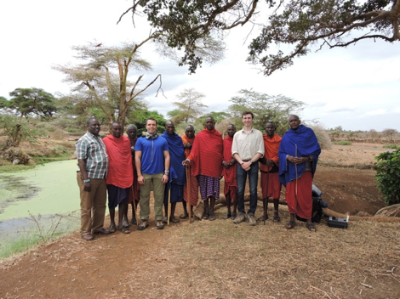 product(MVP)–we designed a CAD model–we went around asking our friends in both urban and rural communities for their opinions.
product(MVP)–we designed a CAD model–we went around asking our friends in both urban and rural communities for their opinions.
This was critical during the development of our MVP. By obtaining their feedback on the initial design, we were able to modify certain elements of it to better suit our future customer’s needs. Companies exist to solve problems for a specific segment of people who deem it valuable to be solved, and in this context of urban and rural communities in Kenya, the same principal applies. Obtaining appropriate user feedback on an MVP was quite difficult: communities were 40 minutes away by car on a dirt road, language barriers made it difficult to ask the “right question,” and cultural norms were absolute musts in order to gain our customer’s trust.
At any company, trust between your customers needs to be established to obtain high-quality information about the problem and feedback about a potential solution. In order to gain trust, we visited their homes, invited our friends to lunch and dinner, and shared stories over the famous Kenyan beer, Tusker. During our conversations, we learned about other successful companies: M-PESA, a mobile banking platform used by over 72% of the population, M-KOPA, a pay-as-you-use solar company, and thought about ways to incorporate their successful programs with our product.
Step 3: Brainstorm–Every idea, good or bad, counts.
Once we understood the problem and its context in the urban  and rural communities, we had a brainstorming session: late night food runs, work-induced mania, the occasional office chair push ups, and 4:30 a.m. conversations about integrating a plant-based filter into a sustainable business model; we rolled up our sleeves and wrote down
and rural communities, we had a brainstorming session: late night food runs, work-induced mania, the occasional office chair push ups, and 4:30 a.m. conversations about integrating a plant-based filter into a sustainable business model; we rolled up our sleeves and wrote down
every crazy idea that came to mind on the office white board.
Our unfettered brainstorming session created a slew of ideas, some more applicable than others
-Use social entrepreneurship tools–this specific breed of entrepreneur has not one, but two ticks: profits and social impact
-Use the mobile banking platform, M-PESA, which over 72% of the population uses
-Sell crushed moringa seeds
-Hoverboards should be part of company culture
-Ask the government to grow moringa
-Market to a specific segment
-Remember Peter Drucker’s wisdom: “If it’s not measured, it’s not managed”
-Local service centers selling filters
-Abandon ship?
By setting the expectation that no idea is crazy enough, we produced a novel approach to integrating our filter in the local community: set-up users through a flexible payment plan via M-PESA, and distribute through local service centers. Bingo!
Step 4: Prototype–Iterate, Iterate, and create a solution to the problem, not a problem for the solution.
Once we had a comprehensive list of ideas to pursue, we made it a point to, in the least amount of time as possible, rule out or pursue suggestions—some call this being “lean.” To accomplish this, we drafted more lists of questions and surveys and took them directly to our potential customers. Customers are great at explaining their problems, but it is up to the entrepreneur to develop the solution—if Henry Ford asked his customers for a solution, they would say faster horses.
A great product sells itself, and through steps 1,2, and 3, we were able to iterate on ideas for a solution to a well-defined problem, market-segment, all within the context of competing solutions and business models. Many household filters we saw were solutions designed without the end-user in mind, creating an unpopular product that has never penetrated this underserved market segment across the world.
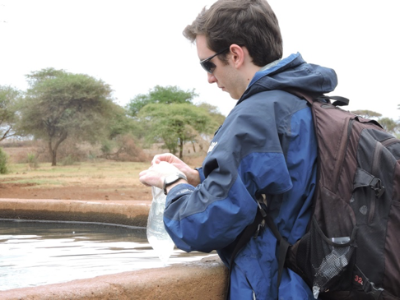 We knew what we wanted to make; we spent countless hours walking through local cities to find the supplies to make our MVP: PVC piping, moringa seeds, and some basic hardware. After some time, and bartering, we had the materials and developed a prototype for further testing.
We knew what we wanted to make; we spent countless hours walking through local cities to find the supplies to make our MVP: PVC piping, moringa seeds, and some basic hardware. After some time, and bartering, we had the materials and developed a prototype for further testing.
Our tests were negative, suggesting our technique was not working as well as we thought. The filtered water was unclean and we knew we needed to think differently. Dozens of tests were carried out, and it was at this point where a keen quote kept our spirits up:
“ Would you like me to give you a formula for success? It’s quite simple, really. Double your rate of failure.” -Thomas Watson, Founder, IBM
Imagine this scenario and all the possibilities for things to go wrong: within 6 hours, including a 4-hour drive on a one-lane road from Loitokitok, a city southeast of Nairobi, Kenya, we had to stop at three different natural springs and collect three water samples. After driving for 4 hours, we passed off the water samples to a local motorcycle driver and prayed the samples were delivered in time; it was late, and all of our tests were invalid.
We tried, and tried, quickly discarding hypotheses and identifying ways to correct our previous mistakes. Many of my entrepreneurial friends call this scenario the major slump of the company’s lifespan: you either push threw it, a/k/a pivot, or perish. Because of the failed experiments and difficulties with logistics in Kenya, we decided to cut our trip early and fly back to the United States to recreate our experiments—this was a tough and expensive decision: we were bootstrapping, but we took a leap a faith and decided it was necessary.
During this iteration phase, teams need to establish hard, fast deadlines. With goals and milestones in the short and long term, and ways to track the progression of them, startup companies begin to foster a culture of execution, accountability, and can then adjust to better position future deliverables on a timely schedule. Our team struggled at first, but by agreeing on deliverables and deadlines, we were able to prioritize our tasks and quickly iterate on experiments, filter designs, and business models.
With deadlines, well-defined deliverables, and water testing at a nearby facility in Philadelphia, we showed significant improvement.
Wherever we were, with whatever resources we had, both product supplies and customers to interview, we made the most out of them by moving quickly to confirm or reject different hypotheses that we brainstormed in step 3.
Always think:
“What is the most important question I need to answer, and how can I do it with the least about of time and money.”
Step 5: Think Big–picture the company 5, 10, 20 years down the road
Our technology, business plan, and overall goal is to pioneer plant-based water treatment technology. In the long term, we see many uses for this technology: on an industrial scale, researchers claim that the technique, which we are refining, will produce fewer and more useful by-products and eliminate chemical traces that have raised public health concerns in municipal water supplies. By thinking 5, 10, 20 years down the road, we strengthen our message, identify short-term and long-term company goals, and provide a meaningful future that attracts money, talent, and other resources to fuel our efforts.
Take a page out of Peter Thiel’s “Zero to One,” and create the future: create a world, where if your company didn’t exist, we would all lose something very special.
Here is our example:
Our goal is to address the United Nation’s Sustainable Development Goals, which calls to end poverty, fight inequality and injustice, and tackle climate change by 2030. To accomplish these goals, we must address a fundamental issue: access to clean, affordable drinking water. Without clean water, children miss school, families are burdened by medical bills and high infant mortality rates, cascading to stifle economic prosperity and trapping billions in poverty and disease. At Everwaters, we believe water is life, and through social entrepreneurship, or market-based thinking and entrepreneurial capitalism in a social context, we will work to provide “clean water, for everyone, for life.”
So the next time you have a tick, think back to our story and how, regardless where you are in the world or what problem you are trying to solve, there are 5-steps to solve problems and get your idea off-the-ground: Define, Research, Brainstorm, Prototype, and Think Big. Our team is working hard to innovate and solve the global water crisis because we believe no one should die from drinking dirty water. We believe that every child should have the same chance to thrive and live a fulfilling life. Follow us on social media as we continue to develop our technology and distribute a plant-based household water filtration system to the whole world.
What problem will you solve? What idea do you have to change the world? What’s the hardest part about turning your great idea into reality? We’d love to hear your thoughts!
Currently Located in Philadelphia, PA, Everwaters is developing plant-based household water filters in Kenya with plans to expand to Tanzania, Uganda, East Africa, Latin America, India, and the United States. Since its Founding in June 2015, Everwaters has been recognized for its pioneering business model and technology, notably winning the 2015 Inaugural 2015 UPenn’s President’s Engagement Prize. Co-Founders, Adrian Lievano, CEO, and Matthew Lisle, CTO, are two recent Mechanical Engineering graduates from the University of Pennsylvania working to combat the world water crisis.
Editor’s note: You can find The Seed Guys on their website via the link above and on their Facebook page. And don’t forget about their Indiegogo campaign. Stop by and see how you can help them save the world!
p.j.lazos 2.11.16
***
[Lake Norman, SC]
I Wanna Be Sedated
So you go to the doctor because you have a nasty cold that you just can’t shake and she gives you a prescription for antibiotics and you take them for ten days and your cold goes away and you’re happy. Unfortunately, for your neighbors who share the same drinking water sources and waste water treatment plant (WWTP), your body didn’t absorb the entirety of that prescription and some of it just passed through your system and into the toilet so you flush, and off it goes to the WWTP where they are in the business of cleaning and clarifying and “slurry-ing” and reducing the waste to sludge and sending a purified water back to your tap. Or maybe you took your birth control pill again today, but not all of that stays with you so the WWTP gets the extra estrogen or progesterone which it also can’t process — the same way our bodies can’t process it all — and punts the leftover mess to the river, and since the earth has to clean Her own water, that doesn’t bode too well for the ground or surface water. Pharmaceuticals are not something the earth is used to absorbing, so, unsure of what to do, She just lets it pass. Generally, She can handle such things unless her cycle’s disrupted, or overloaded, or incapacitated, and this probably qualifies for all three.
[Minnehaha Park falls, Minneapolis, MN]
Let’s start with the premise that water doesn’t recognize boundaries. Add to that the fact that 96% of the world’s water is salt water, leaving a few mere percent for us to drink, and things no longer look as thirst-quenching and problem-free. For centuries before WWTPs were in vogue, humankind relied on water to clean itself, mainly through the processes of dilution and infiltration. Except for those really gross couple hundred years when poo and pee would literally run through the city streets, we mainly did our business at or near a water source and then that water source would disperse the contaminants over time and space. As our understanding of germs increased, so did our sanitation techniques and we realized that drinking from the same water source we pee in is probably not a great idea. Putting aside the fact that there are now 7 billion of us on the planet, one-third of whom do not have access to water, sanitation and hygiene (WASH), and who are probably using one water source for all their water needs, the industrialized, sanitized, first-world countries may soon have a potability problem as well if the drinking water that we do have is not only laced with industrial contaminants, but also contains drug residue. Unfortunately for us, it’s not just the contaminants we can see that are stirring up trouble, but the insidious contaminants our bodies have bioaccumulated over time, resulting in hidden, slower percolating problems to use a water metaphor.
The problems: 1) the WWTPs, bless their hearts, even if they are in compliance with their NPDES permits, don’t have the capability to completely remove the pharmaceutical residue so trace amounts end up in your water supply, and 2) remember the sludge? It’s often spread on farm fields because that’s one of the ways farmers fertilize their crops. That means there are two sources of drugs you didn’t order — one in your water, and one in your food — wending their way into your well-ordered universe.
The drug list is lengthy: caffeine, ibuprofen, acetaminophen, estrogen and progesterone, anti-seizure drugs, anti-inflammatory drugs, chemotherapy drugs, pain medications, allergy meds, and anything anyone takes ever, making its way back to your drinking water. Studies suggest it is becoming an epidemic. A recent U.S. Geological Survey (March 2015) study concluded that a synthetic hormone in birth control pills was causing some infertility in fish and by the time the third generation of fish originally exposed had matured, their fertility rate had dropped 30%, a number that doesn’t bode well for a world that is already struggling with species depletion as a result of overfishing. That same study found that BPA, an endocrine disruptor and chemical used in making plastics and resins produces a waste that survives the WWTP and lives on in the river, causing sex changes in fish along the Potomac River, and worse, that the exposed fish can pass down the effects to future generations. This is evolution, people, and mankind’s predilections for cheap plastic crap are having unintended consequences regarding the evolution of the our species.
We all know what starlings are, those beautiful little birds that you see when you’re driving home at dusk, gathered together in large numbers and putting on an aerial display of incalculable mastery and beauty. A study of starlings conducted by a Royal Society University Research Fellow at the University of York (Current Biology, July 2015) found that these birds exposure to commonly prescribed psychiatric pharmaceuticals resulted in slower growth, poorer immune response, and a marked change in foraging habits – they largely foraged all day rather than chowing down before dark, and if you ever wondered how those little birdies get through a cold winter’s night as my mother often did, it’s the chowing down that provides enough fuel to face a 10 degree winter’s night, so the pharmaceuticals may be affecting their survival rates.
Opinions abound but more research is needed because no one knows what the long-term effects are from exposure to various drugs even when the levels are tiny since years of bioaccumulation no longer equates with low levels. We need to open the dialogue to a wider audience and demand more accountability from the manufacturers requiring them to study the path of these drugs. It’s not like they don’t have the resources given the recent Dow/Dupont merger. Time to “science the s@*$ out of this” as Matt Damon says in the movie, The Martian.
What if the collective miasma in which the world now finds itself — climate change causing seismic weather pattern disturbances, terror groups, millions of refugees on the move, environmental degradation and species extinction at unprecedented levels, to name a few — what if it could all be linked back to an imbalance in hormones, like, what if everyone was PMS at once because of a pharma cocktail we didn’t even know we were taking? Is it so far of a stretch? So until anyone tells me any different, I’m going with pharmaceuticals in public water as a reason for all the crazy. Best be putting those kitchen knives away, people, while scientists analyze, adjust, conduct a few more studies, and hopefully figure it out. In the meantime, enjoy the Ramones:
p.j.lazos 1.3.16
✩✩✩
[photo of a flower on my back porch on Christmas morning. Last year there was snow.]
“Roughly one-eight of the carbon in your flesh, hair and bones recently emerged from smokestacks and tailpipes. We are not only a source of air pollution — we are pollution, and our waste fumes will henceforth be woven into the bodies of our descendants, too.
“Tales of a Warmer Planet” by Curt Stager
Sunday New York Times Review
From a Climate Change Christmas to a Hi-Tech New Year
It’s true, right? As far as I can tell, for most of us it was the strangest Christmas on record, the un-Christmas as I’ve taken to calling it. Here in Central Pennsylvania, the fog on Christmas morning was so thick you could barely see the farm fields surrounding us. Fog forms when condensed water droplets squeeze together as a result of air expansion. At some point — the dew point, actually — the air can’t hold all this water vapor and it condenses into liquid, forming fog. Apparently, the three days of on and off rain we had leading up to Christmas was just too much for the air and soil to handle. Driving across bucolic Central PA farmland with visibility limited to a couple hundred feet in any direction was like driving on the moon. The air was so dense and wet with dew that you could wash your hands just by holding them out the window.
[Christmas Morning Dew — photo by Arianna Rich]
According to NOAA, the National Oceanic and Atmospheric Administration, the three months from September through November of this year were the highest temperatures across land and ocean surfaces globally in the 135 years since they’ve been keeping records (1880-2015), and higher than last year by 0.38°F (0.21°C). How much higher was it? It was 2.29°F (1.27°C) higher than the 20th century average for land, and 1.51°F (0.84°C) for sea surface, averaging at 1.73°F (0.96C). Less than 2°F is not a big deal, right?
[A Trail in Climate Change Winter – photo by Morgan Eberly]
Wrong. And while we won’t ever know for sure, minds brighter than mine (economist William Nordhaus) have suggested that more than 3.6 degrees of warming is outside of any parameter studied in the last few hundred thousand years. A while change of a mere 2°F overall may mean nothing, what if 2.1°F was the tipping point? There’s no question that cities like New York, Boston, Philadelphia, and any other major city with a harbor, river or port alongside it will be at risk of rising sea levels. We’ve already seen what rising sea levels are doing to places like the Outer Banks in North Carolina, swallowing shorelines and valuable beach front property, or in New Orleans and New Jersey where residents are still digging out from hurricanes Katrina (yes, ten years after!), and Sandy.
Climate scientist and author of “Deep Future: The Next 100,000 Years of Life on Earth” Curt Stager, described in his New York Times editorial a world where the continued burning of fossil fuels will usher in a new era of crazy similar to what happened 56 million years ago when the Earth went wonky, spewing carbon dioxide into the air and oceans, causing global temps to rise 10°F, decimating species, changing the landscape, and making sure everyone had a really terrible, horrible, exceptionally bad day. (“Tales of a Warmer Planet”, NYT, Nov. 28, 2015) Two things: this scenario lasted a VERY LONG TIME; and if we were to do it again, sea levels would rise over 200 feet (not 20, 200). That would be followed by cooling temperatures in a period of “climate whiplash” which could see temperatures drop while sea levels continue to rise, truly a challenging situation from any viewpoint and one that could last up to half a million years.
So even if that apocalyptic version of the future doesn’t happen, the Earth, gotta love her, is not so quick to clean up our messes, and she abhors the idea of hiring a housekeeper. Perhaps she’s trying to teach us a lesson. It could take tens of thousands of years to ditch all the excess carbon in the atmosphere and that’s with switching over to the clean, renewable energy sources pronto. So what’s a hip, tuned-in, eco-friendly 2015-ster to do?
Look, it’s the last day of the year, too late to be pointing fingers and frankly, it’s just not helpful. Instead, let’s get together and solve this whole big messy mess. How can you do this if over 190 countries and even more dignitaries who were present at the Paris climate change talks are still working out the details? Here’s a few ideas. And remember, “the longest journey begins with a single step,” “be bold and mighty forces go with you,” “it is for each of us to decide what to do with the time we have been given,” yadda yadda yadda, and my personal fav, thanks to every mom who ever lived: go clean up your room.
Start with changing your template of usage. Americans on average use about 700 pounds of paper a year (source: EDF). In the U.S., we use 68 million trees each year to make 17 billion catalogues and 65 billion pieces of direct mail. (American Forest and Paper Association). Four million tons of junk mail equal 100 million trees destroyed and 28 billion gallons of water wasted. Paper production is a resource intensive project. We’ve got the tools to exchange information without a single piece of paper, kids. It’s called the internet. Let’s use it.
Opt out of catalogues by calling Direct Marketing Service.
Opt out of marketing calls by calling the Federal Trade Commission and get on the do not call or do not email lists. Could be be a first step to getting you off mailing lists which result in catalogues.
Other things you can do:
Walk — it’s so much more heart healthy and the fossil fuel burn is ZERO;
Bike — see above;
Take Mass Transit — okay there’s really no heart healthy side here, but lots of people riding one train rather than lots of people driving lots of cars and sitting, parked on the freeway while the emit, emit, emit carbon dioxide just makes more sense. In Philadelphia, SEPTA annual ridership in 2014 was over 96.7 million (go Philly!) and at my place of employ in downtown Philadelphia, home to about 900 employees, mass transit ridership is about 85%. That’s what I’m talking about.
What about the Hi-Tech New Year? Well, I seemed to have run out of time, but there will be more to come in 2016 so stayed tuned. In the interim, time for a reboot, to take few deep breaths instead of one haggard one, and review, revise, reassess your environmental footprint. Now go out there and kick climate change’s butt before it kicks our descendants butts. Baby steps are progress.
p.j.lazos 12.31.15
Come gather ’round people
Wherever you roam
And admit that the waters
Around you have grown
And accept it that soon
You’ll be drenched to the bone
If your time to you is worth savin’
Then you better start swimmin’ or you’ll sink like a stone
For the times they are a-changin’Bob Dylan, The Times They Are a-Changin’
The Climate It Is a-Changin’
Over 150 world leaders gathered in Paris on Monday in the city of love, and also the location of one of the world’s worst terror attacks since 911, to talk about the weather, or more accurately, how we can put the brakes on the runaway train ride to hell that will be our life on earth if we do not deal with our fossil fuel addiction. I found Obama’s remarks in the last few days particularly poignant, especially his challenge to those who would commit acts of terror — let’s show them what nations can do when they work together. Just the thought of such unprecedented levels of cooperation is thrilling, and the world will be better for it. Of course, it’s not all Kumbaya and Obama still has to fight the good fight at home with Congress, but right is stronger than might, Mr. President, so don’t let the naysayers or Big Coal push you around. They’re just scared because they’ll have to reinvent themselves and the lot of them are incredibly resistant to change.
Here’s a few reasons why we have to fix the problem from the WHO’s top ten facts about climate change:
-Atmospheric carbon has increased over 30 percent since the days before the industrial revolution;
-Extreme weather: floods, tsunamis, hurricanes, severe flooding, etc., is on the rise;
-Extreme fluctuations in temperature can cause health-related risks and even death;
-Asthma which effects 300 million people and is growing because so is pollen and other allergens whose levels increase with the heat;
-Rising sea levels;
-Droughts;
-Water scarcity forces people to travel for water resulting in the water itself being compromised for a variety of reasons including overuse and mixed uses (such as drinking and urination);
-Water borne diseases are on the rise when the water doesn’t have a chance to clean itself;
-Increasing temperatures reduce crop yields;
-Promoting mass transit and healthy transit (such as biking) reduces the amount of greenhouse gasses in the air while also improving human health overall.
In the Encyclical Letter Laudato Si’ of the Holy Father Francis On Care For Our Common Home, Pope Francis calls on those countries that have most benefitted developmentally from fossil fuels to now bear the brunt of the cost of cleaning up the mess:
170. Some strategies for lowering pollutant gas emissions call for the internationalization of environmental costs, which would risk imposing on countries with fewer resources burdensome commitments to reducing emissions comparable to those of the more industrialized countries. Imposing such measures penalizes those countries most in need of development. A further injustice is perpetrated under the guise of protecting the environment. Here also, the poor end up paying the price. Furthermore, since the effects of climate change will be felt for a long time to come, even if stringent measures are taken now, some countries with scarce resources will require assistance in adapting to the effects already being produced, which effect their economies. In this context, there is a need for common and differentiated responsibilities. As the bishops of Bolivia have stated, “the countries which have benefitted from a high degree of industrialization, at the cost of enormous emissions of greenhouses gases, have a greater responsibility for providing a solution to the problems they have caused.
Coincidentally, Pope Francis is not a fan of cap and trade (the buying and selling of a set amount of carbon credits) since it really doesn’t address the underlying problem of too much carbon in the air. I’ve always disliked the concept for the same reasons: it’s a fools errand and a way to placate those who would rather see the world’s demise than change their cushy lifestyles. To hear The Pope echo those sentiments makes me love him even more. That he’s willing to speak out about in such an erudite fashion, well, I’d walk on water for him now.
Last night, my daughter woke me from a dead sleep. She was having a hard time breathing. She has asthma and it’s been a rough fall for her. She wasn’t born with asthma. It developed when she was about five or six, and at the time the doctors labeled it intermittent, but lately it seems to me to be full blown. It doesn’t help that we live in Lancaster County, Pennsylvania, an area that’s in the top ten for worst air in the country. Too many cows, maybe, or too much industry, or just the way the land sits in a valley and the air gets stuck, a perfect storm of particulate matter, making my daughter the canary in the coal mine. I listen to her wheeze as I enjoy one unfettered breath after another, and wish I could trade lungs with her. How long will we let our children be the guinea pigs for our environmental hypocrisy? As sea levels rise, island nations will go the way of the dinosaur, the polar bear, too, and maybe we’ll all be living in the tropics. It’s a world out of balance, not fit for our kids.
So these two weeks I say, bonne chance, Messieurs and Mesdames, bonne chance. You have a tough and noble road ahead. Our children are counting on you. Make us proud.
p.j.lazos 12.3.15
An Attitude of Gratitude
If a certain Congressman who happens to be Chair of the House Committee on Science, Space and Technology as well as a climate change denier gets his way, the National Oceanic and Atmospheric Administration (NOAA) will be turning over all the emails it reviewed in a climate change study that resulted in a published paper in the peer-reviewed journal, Science (June 2015). The research studied global warming trends by reviewing data sets. The NOAA scientists concluded that the earth’s surface temperature has increased slightly, and that warming trends over the last couple decades were actually quite a bit higher than originally thought, a study that global warming naysayers are not so happy about. So the subpoenas are flying, and despite mountains of documents already supplied by NOAA in response to the requests, Congress wants more, including all the scientists’ emails discussing the subject. To date, NOAA has said read my lips, no more info, but the tug of war is not over and it’s anybody’s guess where it will end.
Given that it is a day to give thanks, I’d like to take a moment to express my gratitude about this and a few other situations. That we still live in a country where scientists are free to research, discuss, and develop at will without the threat of government intrusion, because God knows that to worry about being threatened with a subpoena for every project you work on is about as chilling an effect as you can experience, I am grateful. We need our country’s best and brightest scientific minds all warm and fuzzy and open for the business of creating new and improved technologies, don’t you agree? Besides, it’s the only way mankind makes it through the next several decades, what with so many things going extinct, aquifers drying up, sea levels rising, and the earth growing hotter each year. So, yay, thanks. One for science and the environment. Zero for tyranny and oppression.
I’m also grateful to be living in a country that: still upholds a system of democracy, no matter how badly it wobbles sometimes — gratitude abounds in me; respects the constitutional rights of freedom of speech, freedom of religion, freedom of the press, and all those other juicy and interpreted First Amendment rights that allow for open discourse, and for people to have their own opinions and keep their own counsel — so totally grateful; despite the political turmoil and chaos of world events, still entertains the idea of opening it’s doors to refugees and immigrants not for any political gain or motive, but because it’s the right thing to do — yay, gratitude, and BTW, please don’t build a wall.
Speaking of walls — the doors are closing. The old world order of chaos and unkindness and fear as a way of controlling the masses is falling away. A world of unity and a new level of understanding and tolerance for that which you don’t understand is moving in, helping itself to the chips and dip at the snack table. Make no mistake. The Graces are here. Would you rudely turn your back on those which have come to enrich you? We either walk through the door or we stand in the closet for another couple lifetimes. Choose the one that’s more fun — hint, door — and go for it. And be grateful. For everything. I am.
Walking now.
p.j.lazos 11.26.15
[photos courtesy of The Seed Guys]
Preparations Are Underway
I met with Matt Lisle and Adrian Leviano, The Seed Guys, at their office in Vance Hall where the Wharton School’s graduate education program lives on the University of Pennsylvania’s campus. Vance Hall is just off Benjamin Franklin’s Way, that divine stretch of walkway that spans 37th Street between Spruce and Walnut Streets whose brickwork contains many of Benjamin Franklin’s pithiest axioms. Franklin himself was an ever-daring, one-of-a-kind inventor and just walking down the path makes you feel more entrepreneurial. It was one of those late summer days where the weather is so hot and muggy you think maybe winter isn’t so bad after all, but weather wasn’t the only thing running hot. Matt and Adrian are scheduled to leave for Kenya at the end of September for a two-month stay as a set-up for the more extended trip next year, and the level of preparation needed to even consider getting on the plane has been enormous.
The Seed Guys used their summer to connect with the folks on the other side of the globe who will be most aligned with the project, and to get buy-in from those who will be instrumental in helping their project grow. They’ve been working with Dr. Steve Mutiso of the Loitokitok sub-county hospital, Mr. Kimeu Musao, the sub-regional director of water resources, Ashah Shaaban-Mwangi, who works in Kajiado County with Integrated Water Resource Management (IWRM), and Dr. David Nkedianye, the Kajiado County Governor, who over the last several months has been key in helping them set up the trip. Most of the original contacts were made through the Kenyan Embassy, Secretary of Trade, including the IWRM.
Kenya is taking an Integrated Water Resources Management Approach of connecting county, city and community partners. In 2013, there was a change in the Kenyan Constitution. Previously, Kenya had a more centralized government. However, the Kenyan people voted to decentralize, and now Kenya ha split into counties whose sizes are based upon population, not area, and every county has a governor. Kajiado’s Governor is Dr. David Nkedianye and Matt and Adrian are hoping to be soon working with his office. With the new constitution and Kenya’s Vision 2030 goals, addressing water issues has become a top priority. The Seed Guys will be working alongside all levels of government from the county officials to local chiefs and with the help of CESPAD, an NGO that is part of a larger network known as the Kenya Water Partnership and which is also working with the Governor’s office, they will collaborate on water safety and access issues.
The Seed Guys will spend their entire time in Southern Kenya in Kajiado County, population approximately 688,000. The city of Nairobi is to the north of Kajiado County and Mt. Kilimanjaro (as in The Snows of Kilimanjaro by Ernest Hemingway), and the country of Tanzania borders the county to the south. The vision of Kajiado County as stated on their website is “A Prosperous, Globally competitive County, offering quality life through sustainable development.” The indigenous people in Kajiado County are the Maasai (phonetically, “mass-eye”), who historically are the most traditional of the African cultures which is why they have a vision of sustainable development and also why the Maasai are the most popular with tourist groups.
Other than the obvious, are they any pre-trip goals the Guys would like to focus on? Well, of course! Adrian who has had his share of math and science for the last four years would like to get into writing and has plans to chronicle their journey and hopefully write about it when the work has been completed and the project is up and running (or even as he goes so stayed tuned for some blog posts from Adrian here on the wH20 journal). Matt decided to go the language route and has been teaching himself Swahili — which literally means “East Africa” — and which is spoken in Kenya and Tanzania. He took Latin in school and only speaks a tiny bit of French so leaning Swahili feels like a pretty awesome stretch to him, but what better time to do it then when you will be immersed in the language for months at a time?
How do their parents feel at this moment? Well, as long as The Guys provide some updates, their collective heart rates may remain at manageable levels. Matt and Adrian do expect to have wifi, so they won’t be completely off the grid. Overall, though nervous, their parents are as excited as their kids are for this journey.
What’s the ultimate goal of the trip: “We’re trying to help others by giving them the means to help themselves,” say The Seed Guys.
So as they begin the next chapter, The Seed Guys know that the thoughts, support, and well-wishes of their alma matter, and entrepreneurs everywhere are behind them. So come on, Guys, a la our favorite entrepreneur, Ben Franklin, go show the world what American ingenuity looks like. Keep in touch. We’ll be right here, awaiting your insights from the field!
p.j.lazos 11.4.15
[photo credit — PARK(ing) Day Website]
PARK(ing) DAY
Tomorrow is Park(ing) Day! The first parking day was held at 1st and Mission Streets in downtown San Francisco on November 16, 2005 when Rebar, a San Francisco art and design studio set out to do something different in their urban environment. Combining their love of design and the environment, the group “rented” a parking space and converted it into a micro-park by giving the 170 square-feet of space a make-over, reclaiming the asphalt that was a necessary by-product of modern living with sod, a tree and some shade, and a park bench. Then they took a picture.
[photo credit – PARK(ing) Day website]
Such was the birth of Park(ing) Day where metered spaces became miniature parks for as long as you could lease the public space which in this instance was a mere two hours, enough to start a trend, raise awareness for beautifying parks and public spaces, and reimagine a pedestrian-friendly world. The photo of that first event, juxtaposing a miniature park setting in the middle of urban sprawl, made its way around the internet and spawned a movement. Due to the increased interest, Rebar promoted the project, crated a how-to manual and let the idea fly. What started with a single parking meter in a single city increased to approximately 1,000 cities by 2011 and is held on the third Friday of September every year since 2005!
[Photo credit — PARK(ing) Day website]
While Rebar is no longer in existence, the website lives on, containing instructions for creating your own PARK(ing) Day wherever you live. Today, PARK(ing) Day is celebrated in towns and cities all around the globe and has been open-sourced to the world. With that expansion, the idea has expanded as well, and the theme has been re-invented to deal with a variety of social conundrums and experiment with issues as varied as politics, art, free health care, urban farming, ecology, bike repair, labor issues, or just simple acts of kindness and generosity, depending on a community’s need and vision.
[photo credit by “Kris” – Ijzereneleen (Belgium) 2007, from the PARK(ing) Day website]
[photo credit – PARK(ing) Day website, by ITDP-Europe; Munich 2009
So join the fun. Start a Park(ing) Day movement in your community today. And if you’re in Philadelphia, visit the Park(ing) Day event at 18th and Sansom Streets this Friday.
p.j.lazos 9.17.1
[photo credit: The Seed Guys]
The Seed Guys
Saving the World One Seed at a Time
Can A Seed Save the World? Matt Lisle and Adrian Lievano are betting it just might. Matt and Adrian — let’s call them The Seed Guys — have just graduated from the University of Pennsylvania with a B.S.E. and a course of study in mechanical engineering. Most young adults in their position would be looking for, or starting a job in their chosen field. Instead, The Seed Guys have spent the last six months studying the Moringa oleifera seed and its application in the field of water treatment. As recipients of one of the President’s Engagement Prizes created by Penn President, Amy Gutman, Matt and Adrian received a $100,000 grant provided by Penn as a means of engaging students to find solutions to pressing societal issues. By giving this ambitious duo the time and space to turn their creativity loose without the worry of paying rent, we may all turn out to be winners.
Both Matt and Adrian have long felt that water, sanitation and hygiene, or WASH, was one of the toughest and most complex issues being addressed today. Over 3 million people die each year from WASH-related problems while over one billion people don’t have access to clean water. The summer the President’s Engagement Prize was announced, Matt and Adrian along with their friend Daniel Brooks, a Biology major, were sitting around brainstorming ideas on how to alleviate the most pressing WASH issues. When Daniel went to Kenya for a summer project to engage local communities with educational workshops and learn about the needs of the locals, he noticed that people were using the Moringa seed to purify small amounts (approximately 1 liter) of water. Interest piqued, he took the idea along with some seeds back to Penn and talked to his engineering buddies, Matt and Adrian. Within two months they had drafted the proposal and when the deadline for the grant application was pushed back three months, they created a rudimentary prototype with the found time. They crushed the seed of Moringa oleifera and used the coagulant protein as a simple filter just to see what would happen. A lot, it turns out. The water-soluble protein bound together with bacteria, clay, silt, and other toxins. The “chunks” (flocculent) settled, allowing it to be filtered out. The Seed Guys were able to remove 85% of e coli and 96% of Coliform bacteria on the first try. A stand alone coffee filter allows particles smaller than 10 microns to pass through, but when used in conjunction with the crushed Moringa seed it clarifies the water and prevents smaller bacteria and viruses from passing. The protypte has performed even better.
Since the initial work, Daniel took a Fulbright scholarship and is no longer active in the group while Matt and Adrian are going to spend the next year taking the pilot project to a full scale working model. This means de-hulling and crushing the seeds into a fine powder, constructing the filtration system, paying closer attention to the mechanics and ratios, and integrating the system into the community, all skills learned in their engineering classes. Matt and Adrian plan to travel to Kenya in September for two months to meet Community leaders such as Panian Segal, a local school teacher, and Doctor Steve Mutiso, a local doctor at the Ministry of Health. The community knows they are coming and through their non-profit, HOW Global, Inc., they have their arrival dates set up with the school. If all goes well, they will return in January for a four-month stint and really get to work. Neither of them have been to Africa before so it will be a first on many levels.
The Seed Guys maintain that the mechanics will be easy. After all, this is what engineers do; they break down complex problems into little steps and put it back together in the most efficient way. So how do these two engineers who both got their start as toddlers playing with legos plan to break this all down? They’ll start with a liter of water and go from there. Matt and Adrian both feel that jumping to a larger scale is simply a matter of looking at the number of seeds you need to achieve effective drinking water standards and developing the correct ratio which will be the key to success of a large-scale operation.
Initially, that will be determined through trial and error. In the homegrown version which Daniel learned during his first trip to Kenya and upon which this initial idea rests, locals de-hull and grind the seeds into a powder, and put two heaping spoonfuls of the powder into a small bottle of clean water. They agitate the bottle for 5 minutes, then filter it through a cloth into a 20 liter container of water. If you repeated this experirment, after two minutes of rapid stirring and another 10 to 15 of casual stirring, you would be one step away from clean, drinkable water since there is still one percent of bacteria that requires an additional purification step. Matt and Adrian are taking it to the next level.
Currently, they are using rainwater catchment which is exactly what it sounds like, rainwater caught in a big tank where it might sit for a while, holding not only water, but organics which tend to multiply after a time so they take that water and apply the seed technology.
Not only does the Moringa oleifera seed act as a flocculent, the tree, also known as the drumstick tree because of its long, thin branches and triangular seed pods, and the “Horseradish tree” because of the wood’s spicy taste, is a powerhouse of a plant. Moringa originated in India, but is also grown in Africa, Thailand, Taiwan and the Philippines and just about every part of the tree is used for something, making it worthy of its notoriety as a miracle tree. In Ayurvedic medicine, approximately 300 diseases are treated with the leaves. The leaves themselves have have more vitamin C than oranges (7x); more calcium than milk (4x); more vitamin A than carrots (4x); more potassium than bananas (3x); and more protein than yogurt (2x), with an even higher protein ratio than the inimitable soy bean which is itself on a short list next to meat and eggs, and all this without the allergies of soy. In addition, science has already discovered about 90 nutrients and counting; 18 of the 20 amino acids and eight of the essential amino acids present in meat. The oil from the Moringa tree doesn’t spoil so it is used both in cooking and cosmetics and, curiously, as a machinery lubricant. Nutritional supplements made from the plant give the user an energy boost. It also evens out blood sugar levels, relieves depression and anxiety, improves sleep, helps with skin disorders, acts as an anti-inflammatory, an anti-asthmatic, and on the list goes. Because the seed acts as a coagulant, pulling harmful bacteria to it, this same process can occur internally, making it a powerful tool in cleansing the body. The best part? It’s a fast grower and drought-resistant. Matt did a google search for the location of the Morgina tree and found that wherever people lacked access to clean water — Central American, South America, Africa, Asia — the Moringa tree grew. The Guys maintain that Moringa oleifera is underworked, given its capacity, and want to do what they can to change that.
The project officially started on June 30th which is when Matt and Adrian received the funding, but they unofficially started without the money way back in early spring. The award consists of $100,000 for project-related expenses, and another $50,000 living stipend for each of them which is much appreciated considering they will be flying back and forth to Kenya to test their project. The actual design work will be done here in Philadelphia while the implementation will take them to Kimana, Kenya, about 60 miles away from Hemingway’s Mount Kilimanjaro. Their goal at the end of the project is to have developed a system that will clean 300 gallons of clean drinking water a day, thereby serving the daily drinking water needs of over 300 individuals, and at the same time reduce diarrhea and the prevalence of water borne diseases. (The project focuses on drinking water only.) They also plan to take advantage of their semi-annual reporting requirements, and in fact, plan on reporting weekly because the Guys understand that projects such as theirs in the nascent stages require an element of crowdsourced enthusiasm to keep them going.
The Seed Guys have no shortage of enthusiasm. When Matt was a junior in high school, he wanted to do something off the beaten path so he cold called all the engineering professors at Penn and one of them responded. He was doing work on sedimentation and that got Matt started. As for Adrian, he started off in pre-med, but he also loved the mechanics of systems. He ended as a bioengineering major, combining his interest in the human body and the inorganic world. Once there, it seemed a small leap to work on something he was passionate about which in this case was water. The Seed Guys already have partnered with an NGO, How Global, Inc., and have various mentors spanning multiple departments at Penn, including Associate Professor Paulo Arratia (mechanical engineering) Co-Founder and past President of the Philadelphia Global Water Initiative, Stan Laskowski, (environmental studies) and Professor Thomas Cassel (mechanical engineering). All serve as mentors, especially Professor Cassel who worked in the Peace Corps doing similar work at one time. He taught Matt last semester and they wrote a business plan for wind energy. Overall, The Guys have been lucky as there seems to be a good group of mentors, routing for them, and providing moral and practical support.
The seeds will come from Mr. Wonderful, a farmer the Guys have been working with in Kenya. Mr. Wonderful will plant and maintain the Moringa tree for them and supply them with all the seeds they need. Right now, they have a large box of seeds to experiment with, enough, at least, to get them through September. There’s also another source of seeds, Moringa For Life, a company in California that specializes in growing the Moringa tree and which is where they got their first batch of seeds which arrived in an 18x8x18” box and will be enough to get the project going. One seed is approximately 15mm in diameter, smaller than a fingernail. Once the seed is crushed into a fine powder, that powder can coagulate approximately one to four liters of water depending on how cloudy the water is. They have about 500 to 1,000 seeds in the box so at one seed per four liters of water, there’s a lot of room for error. The seed performs similarly to the inorganic version, aluminum sulfate, which is used in the water-treatment industry today and which purifies the water by pulling bacteria to it. Except that aluminum sulfate, which comes in solid blocks that are dropped it in the water, has been linked to many neurological diseases so switching to an organic material for water treatment could solve more problems than just water-related ones.
These possibilities are not lost on the Seed Guys. They want to revolutionize how we treat water on a global scale and have already incorporated as an LLC to show they are serious – EverWaters, LLC. During our conversation, Matt told the story of Elisha Otis, the founder of Otis Elevator. There he was with a new product and no one was buying. He wanted to get people to feel safe going on elevators so he told an audience in 1854 at the New York Crystal Palace that if the cable broke, the elevator would catch itself. He stood on the platform while someone chopped the cable above him, the elevator only fell a few inches, and guess what? Sales took off, doubling month after month until Otis became the name in elevators that it is today. This is where Matt and Adrian hope they are heading, and with a cadre of mentors standing behind, ready to catch them should they fall, it’s a sure bet they are going to get there.
The Seed Guys — they don’t want much. Only to change the world!
p.j.lazos 8.11.15
Reclaim the Commons
Back in the 70’s, America had a little oil shortage problem when the Organization of Arab Petroleum Exporting Companies (OAPEC) cut us off. The facts are convoluted — a Arab-Israeli war beginning in October 1973, called the Yom Kippur war, the backing of Israel by the U.S. which OPAEC didn’t like, our gluttonous consumption of cheap ($3/barrel) oil, all congealed to lead to the first Energy Crisis. Oil hiked up to $12/barrel then and driving was no longer good cheap fun. Our domestic production of oil was way down and we didn’t know whether the embargo would send us into a tailspin so President Jimmy Carter mandated that we could only fill our cars every other day based on whether your license plate ended in an odd or even number. The embargo ended in March 1974, and while the crisis took longer to pass, a few amazing things happened because of it. America was a little more environmentally aware and conservation conscious. People shut off lights when they left rooms; driving around aimlessly was no longer encouraged; leaded gas began its slow phaseout; and Detroit started making more eco-friendly cars. A smallish environmental movement, a kinder, gentler green life was suddenly in vogue.
Fast forward to Bush II from the big state of Texas and all the small car gains evaporated in a flash. America’s love affair with the big SUV began. No finger pointing here. I drive a Honda Odyssey and find it invaluable for shuttling kids and their friends, for taking long car trips, and beach vacations, although as the kids peel off, I see a downsize on the horizon. Unfortunately, that love affair led to some predicted disasters such as huge climactic shifts in weather patterns, but that’s another story. The 21st century’s crisis will be about water, and the fact that it’s running out because 7 billion people need it, and about 783 million of them don’t have access to it. Meanwhile, the planet is experiencing major droughts in places where things used to be fresh and fecund. Experts predict that by 2040 we’ll have a real shortage, worse than oil ever was, and that by 2020, more than 1/3 of the globe will be experiencing water scarcity. Whoa! Could be time to rethink that indoor ski resort in Dubai.
Back in the 1700’s before there was a WaWa or a 7-11, people had wells and when they ran dry, they had streams and if they couldn’t find a stream or a lake or a pond or a prairie pothole, they moved. Manufacturing has given us a false sense of security, the idea that everything is always for sale or can be purchased and that for every challenge there’s a technological solution. Generally that’s true, except when the resource is finite and the raw materials are running out. The Tragedy of the Commons, written by Garrett Hardin in 1963 discusses the theory of how the resources of the collective suffer in service to the individual. The article focuses on the “population problem” and how we will eventually have more people than resources to feed them. We see the effects of this now much more then when Hardin wrote the article, but even without the empirical evidence, Hardin had done the math.
The Tragedy of the Commons is this: if there is a shared common resource, say, a grassy field where ranchers graze their cattle, and each rancher is looking to grow their business and add more cattle, eventually the load of cattle will be too much for the grassy field. Overgrazing will lead to the inability of the grass to spring back, to sedimentation and erosion issues and the like. The land can’t handle the extra demand for grass, and can’t grow or replace it fast enough. And since the ranchers all want to improve their business, there is no way to avoid the overgrazing scenario. As Harding points out, “freedom in a commons brings ruin to all.” He also notes that there is no technical solution to a problem that has its roots in limited resources because each individual, acting independently will ultimately work in a way that is contrary to the common good simply by acting in their own best interest. No crime there, but if we all stockpiled white rhino horn powder, an East Asian favored aphrodisiac, we’d soon run out of white rhinos…. Wait…. Oh right. There are only four left and they’re all in captivity. [Technically, this is a northern white rhino whose horn has no medicinal properties, but poachers don’t know that, not before they shoot.]
According to my friends living out west, even though California is in the middle of a possible 10-year mega-drought, people are still watering their lawns. One guy’s house well runs dry, no water to cook with, bathe in, or drink, but the neighbor has a deeper well so he keeps watering his lawn. Yet aquifers are not house specific. Once an aquifer is past the point of recharge, it’s kaput, to use the technical term. And houses sitting right next to each other are clearly serviced by the same aquifer. It’s no longer a question of if they will run out of water, but when. Seems like a no-brainer to let the lawns go, but I also get the desire to avoid brown grass. (I’ll save the topic of a natural, sustainable landscape with drought-resistant foliage for another day.)
Then there’s the CEO of Nestle. In July, CEO Tom Brown was asked in an interview if he would consider halting water extraction in California because of the drought. Brown replied “no”, that he would “increase it” if he could, but before you hate on Brown, remember that’s generally the corporate mandate: maximize profits above all else.
Unless you’re Starbucks who announced in May that it was taking its Ethos water sourcing and production out of California because of the drought. Ethos gives .05 of every sale to humanitarian causes, but public pressure convinced Starbucks to take the next step and move. Water is fluid, unlike minerals. You can’t own an aquifer so companies by surface rights and pump water out of the ground that could potentially be coming from miles away. Recently, governor Jerry Brown approved a plan by the State Water Resources Control Board for Californians to cut the water usage by 25% or suffer fines up to $500 for non-compliers. Yet if California didn’t have a proverbial gun to its head, as in, middle of a mega-drought here, people, they wouldn’t have taken such drastic measures. Heck they’re barely managing now and they’re standing in the crosshairs. Cali has 108 different bottling plants, all drawing water away from the commons. Perhaps it’s time to reconsider the industry as a whole?
The sale of bottled water is a lucrative scam, enjoying an unprecedented run, an amazing stroke of good fortune. Think about it: a practically free resource that requires virtually no modifications other than pumping it out of the ground, filling a bottle, slapping a label on it, and charging $1.29 for something that already belonged to all of us in the first place. The water that’s going into Nestle’s or Dasani’s or any of the other companies’ bottles may be destined for your well and now your well is dry. Meanwhile, bottled water sales are at an all time high at $13 billion a year, and the plastic bottles are ending up in an already overcrowded landfill at a rate of 1,500 per second, or about 40 billion bottles a year!
Isn’t it time we conserved water for the sake of future generations? Let’s reclaim the commons, this bit of our collective landscape that belong to all of us so there will be something left for our children’s children. The way to do that is through legislation, yes, but also cooperation and leadership. San Francisco made a bold step a couple year’s ago when they banned the sale of plastic water bottles on public property and installed water stations all around the city for people to fill up whenever they needed to. A shared water source, a “water fountain” used by the masses as it was in the days before the plastic bottle. So progressive, yet so retro! So think about our friends out west and go buy yourself that stainless steel bottle you’ve been hearing about. The collective future thanks you.
p.j.lazos 8.4.15
What’s On Tap?
[A version of this post was previously posted on my former blog.]
Imagine waterfalls and pristine lakes. Imagine wild rivers and cool mountain springs. What you see, however, is not always what you get, at least as far as bottled water is concerned. Given the option, would you choose a life of royalty with all the perks the position allows, but no indoor plumbing, or a regular middle-class life in the 21st century with a bathroom? I’d choose indoor plumbing every time.
Today, by some miracle of engineering and ingenuity, clean water is delivered right to your faucet, cheaply, efficiently, and good enough to bathe, cook, swim, drink and luxuriate in unlike many other places in the world, particularly developing countries. Do you know why? Because EPA regulates the tap water in the U.S., and that makes the difference.
Bottled water is regulated by the FDA, but they don’t have the resources to follow through. Less than one person works on developing the rules while another slightly less than one person works on assuring compliance. The FDA can require testing, yes, but everything else is at the whim of the company such as whether to divulge their sources, how the water is treated, etc. So even if the FDA did have more than two-ish people working on this issue, the chances are they couldn’t find a problem even if there was one. Here’s another sad thing: if the bottled water isn’t crossing state lines, the FDA doesn’t regulate it. Bottled water that stays in-state accounts for over 60% of the water sold in the U.S. Meanwhile, 40 states don’t even do any testing of their own. The safety of bottled water is beginning to sound a bit like the Wild West.
Being part of a regulated statutory program allows clear and contaminant free water, flowing to you with a twist of the wrist. Bottled water simply doesn’t enjoy the luxury of tap water’s bells and whistles. So why the bad rap for tap water? Some say it tastes bad. Others believe it’s safer than tap when in truth, the reverse is true.
Several years ago, the NRDC conducted a four-year study of bottled water, including testing of 1,000 bottles of 103 brands of bottled water and found some interesting results. Hits of e coli, arsenic, and other contaminants of concern that would result in regulatory fines for tap water were going unchallenged for bottled water. Testing also revealed periodic hits of industrial chemicals exceeding FDA standards. One source of bottled water was taken from a well next to a hazardous waste site, yet the label depicted pure mountain streams! Americans drink 10 billion gallons of bottled water a year. Approximately one-quarter of those bottles are actually “purified” tap water. So much for mountain streams.
So next time you reach for the bottle, reconsider the tap.
p.j.lazos 7.27.15
[photo of our now, sadly, uninhabited bee boxes]
Bee Serious
When I first moved to Central PA over 20 years ago the honey bee abounded. The little suckers were everywhere and that made sense because Lancaster County is home to the most fertile, unirrigated soil in the country. Because of its bucolic nature, people began moving here in exponential numbers, resulting in the decimation of why they came in the first place: open space, much of which is being plowed over, not for crops, but for a familiar sight on the American landscape – single-family home housing developments.
Scientists agree that decreased foraging areas, in addition to pests, bad bee management, pesticides, and poor nutrition are all factors contributing to the decline of the honey bee. Of all those immensely complex and interwoven issues, what do you think is the easiest to control? Pesticides. After all, isn’t it easier to put a temporary ban on a group of pesticides while you determine whether it is safe or fatal to the bee population than it is to tell people to stop building houses?
The German Company, Bayer CropScience developed Clothianidin which was approved based on the strength of a single, uncontrolled, two-week study performed by — guess who? — Bayer. Bayer created several two and a half-acre fields whose plants contained Clothianidin-treated seeds along with several control fields. Bee hives were placed at the center of each of the fields and the bees flew unrestricted. Two issues of note: 1) remember, the bees have a foraging area of up to six miles so they were supping on nectar outside of the test area whether they were in the test group or control group; and 2) the test and control groups were within a thousand feet of each other thereby invalidating the very definition of test and control groups.
The decline of the honey bee coincides with the introduction of Clothianidin into the market place. Conditionally approved by the EPA in 2003, Clothianidin received full approval in 2010 on the strength of that one flawed study, yet the Bayer study didn’t correctly mimic honeybee behavior. There was also no peer review by other scientists in the field who have the scientific mojo to extrapolate and comment, nor was there any type of independent analysis by a neutral third-party. Despite the essential nature of peer review, there was no push back on the results, no call for further study in a more controlled environment, nothing. Seems a little risky, even for our madcap corporate-centric country, no?
The pesticide isn’t up for EPA review again until 2018. That’s three more years of not knowing while nature’s most prodigious pollinators continue to show signs of PTSD. Beginning December 1, 2013 and for a two-year period, the European Commission restricted the use of three neonicotinoids, one of which was Clothianidin with the intention of reviewing the data at the end of the two-year period. Why not ban it here in the U.S. for two years as well and see what happens to the honeybee? Surely, the lost profit would be a pittance compared to the loss off just about everything the bee pollinates, i.e., 70% of the food we eat, and perhaps an entire industry.
Clothianidin is from the neonicotinoid family of pesticides. It affects the immune systems and neurobehavior in the targeted pest. Unfortunately, the bees appear to be having the same reaction as the pests. The pesticide is taken up by the plant’s vascular system — much like our circulatory system — and is released to become part of its pollen and nectar. The bees, singularly, happily and unwittingly take this nectar home to the hive to store for later use where it will be consumed by the entire hive. The process is repeated every time a bee ingests pollen and nectar. Soon the entire hive is storing pesticide-laced honey. This may explain why colonies collapse. By failing to remove Clothianidin and other like pesticides from the market, we’re forcing the bees to ingest a chemical that will eventually not only overload their systems, but that of the entire hive.
According to Penn State’s College of Agricultural Sciences, the level of neonicotinoid pesticides occur in much greater quantities than originally thought, also something not accounted for in the Bayer study, and which probably points to why whole colonies of bees are just disappearing. After such continued exposure to pesticides, their little immune systems have been pushed to the brink. The tiny insect with a once photographic memory couldn’t find home with a GPS unit. Bee Informed Partnership, “a coalition of researchers, advisors and stakeholders that rely on the honeybee for pollination” found that on average, beekeepers lost 42% of their hives between April 2014 and April 2015, up from 35% the previous year with the biggest increase in loss occurring over the summer. Beekeepers expect to lose colonies over the winter, but if you’re losing them in the summer, something is definitely wrong.
Just when you thought it couldn’t get any more bizarre, there’s this twist: bees are addicted to neonicotinoids, and like a pack-a-day smoker, they’re going after the plants that have been sprayed with pesticides containing neonicotinoids. It appears from the study that bees prefer the treated plants even when an alternative food source is available. My husband kept his bees on an organic farm, but that doesn’t mean that the bees weren’t racing across the street to find the plants that had been sprayed with neonicotinoids. My husband who is not a scientist, but a beekeeper thinks the pesticide build up in the hive is ultimately doing them in so before he tries again he wants to replace his boxes and bottom boards and frames, a costly endeavor and surely not sustainable if it must be done every few years.
The extinction of the honey bee will be our collective burden to bear. It’s a failure of legislation, a failure of regulation, but most of all it’s a failure of corporations whose voracious appetite for profitability would leave the planet starved and barren. Yet it is also the fault of the rest of us who sit idly by, waiting for someone else to make the call, do the research, cast the vote, raise the public’s awareness. It’s the fault of those of us who would rather see our mutual funds earn higher yields then enact the environmental regulations that may slow profits, but assure a self-sustaining world for our children. Nature’s Bounty is our birth rite, and good stewardship of the earth and dominion over all living things means you have to care for what is yours or suffer its disappearance. At the end of the day (translation: your life), it won’t be your country club membership, the yields on your stock portfolio, or the kind of car you drove that mattered, but what you did in service, “to leave the world a bit better,” as Emerson said. Scorched earth will breed nothing more than ash. Consider your legacy. Consider the honey bee.
p. j. lazos 5.26.15
Home Is Where Your Honey Bee
I never really thought much about bees other than the ones hiding in my soda can during family picnics and never had that warm fuzzy space in my heart for them the way I do for my felines. Bees aren’t fuzzy and warm and buzzing is no substitute for purring. That all changed when I met my husband, Scott. He’d kept bees for two decades so I’d inherited a hobby by marriage. Sadly, that’s all over now and hopefully, just for now. As a result, it’s hard to reduce how I feel about bees to one emotion.
Scott had started with one hive in a densely populated area outside of Philadelphia, but when he moved to Central Pennsylvania, and had access to a nice sunny spot on an Amish horse farm, he quickly expanded operations. Within a few years, he had seven hives, close to a million bees, buzzing their industrious days away. In those first years, the bees were happy, thriving, producing more honey than we ourselves could use. We sometimes sold it, but mostly we gave it away to friends and family as Christmas presents, hostess gifts, and teacher “thank you’s.” A few years later we began to develop all-natural products using the honey and beeswax. Then came the lean years: the bees were dying and no one knew why. The odd thing was there were very few dead bodies left behind, just a mass exodus as if the hive had swarmed.
Swarming is a phenomenon that occurs when there’s overcrowding in the hive, or the queen is no longer laying eggs. The queen dominates the hive and since bees are a hierarchical group, if the queen stops laying eggs, the young bees raise up a new queen and the process starts anew. The queen’s biggest job is to mate with a drone in flight; coincidentally, the drone’s sole purpose in life is to mate with the queen so it’s a match made in heaven. The average queen does 15 to 20 of these mating flights in her two-year lifespan, and thereafter, she’s good for laying about 1,500 eggs a day (down to a couple hundred a day during the winter). Since bees only have a life span of four to six weeks, the queen needs to keep cranking out the eggs as a means to ensure survival of the hive, and herself. Meanwhile, the worker bees, God bless their little hearts, do all the heavy lifting: making honey, making wax, making a cozy space for the baby bees (eggs), and cleaning out the hive. Unfortunately, as of late these hardy little insects have simply been disappearing and no one can conclusively figure out why.
Scott has an observatory hive, a glass box wide enough to accommodate a single frame from the larger hive. The box is portable, and through the glass, you can see the bees hard at work. Drone bees don’t sting if you clip their wings so Scott would take the observatory hive to our kids’ elementary school, clip a few wings and let the kids hold them while the bees walked all over their hands, arms and legs. It was probably their first non-hostile bee encounter unless you knew at an early age you wanted to be an entomologist and were always outside mucking around. The observatory hive was a huge hit and I hope someday to learn that more than a few children went on to have natural history careers as a result.
So why are the bees dying in record numbers? Researchers agreed on a name — Colony Collapse Disorder, CCD — and little else. Speculation abounded: perhaps pesticides such as Clothianidin were causing the bee version of Alzheimer’s, resulting in bees forgetting how to get home (the typical honeybee has a 6-mile flight-path radius); or maybe it was satellite transmissions, interrupting their homing capabilities; or perhaps over-medication; loss of habitat; diseases; pests; poor nutrition; need I go on? In addition, honeybees have been completely domesticated and rely on humans to medicate them to prevent varroa mites, a nasty parasite and what a flea is to a dog, only it can kill a bee. Whatever the case, whole colonies were disappearing, and considering each bee does its day’s work alone, the scenario didn’t make any sense.
CCD is not a regional issue or a national issue, but a global issue. Bees are the earth’s pollinators, one of nature’s most prolific producers, and responsible for 90% of the common foods we eat. Without them, about 70% of the food, flowers, fruits and nuts that we enjoy will be gone. Some foods, like almonds, are 100% pollinated by bees. They set aside great stores of honey to get them through each winter and pollinate our crops. In return, we steal their honey, develop what was once their rich foraging area, and spray chemicals all over their food. Einstein said that as the health of the honey bee goes, so do we. He predicted that man would be gone about four years after honey bees left the planet. Well, the bees are leaving now just in case we all hadn’t noticed.
To Be Continued: But where are the bees going?
p.j. lazos 5.15.15
Through a Lens
International migratory bird day — the second Saturday in May in the U.S. — focuses on conserving migratory birds and their habitats around the world. One of my favorite migratory birds is the small, but mighty ruby-throated hummingbird who treks 600 miles each fall from the Eastern U.S., crossing the Gulf of Mexico on a non-stop flight all the way into Central America and Mexico, only to return to Pennsylvania in the spring (April/May), and then continue traveling further up the East Coast as the weather improves. I’m enamored of this little bird whose wings beat so quickly that it needs to eat constantly to provide its body with enough food and warmth to keep going, a veritable poster child for strength and resilience. Plus it can hover, so it’s got my vote for the coolest bird trick award.
My other favorite, not because of it’s amazing feats of strength and aeronautics, but for its sheer presence and elegance is the snow goose. Toward the end of February, my family and I took our friends to the Middle Creek Wildlife Management Area in Kleinfeltersville, Pennsylvania to witness what has become a local phenomena. Snow geese, anywhere from 100,000 to 250,000 of them, traveling en route to their summer rentals in the arctic in North America, pass through Middle Creek, Pennsylvania, stopping at the lake to rest and refuel before continuing on to the Finger Lakes in Seneca Falls, New York, and ultimately, Bylot Island in Greenland. They come back in the fall to hang out in various inland and coastal bird hot spots, but for me, the real spectacle is in winter.
The first time I saw these beauties there were over 250,000 of them packed in across the entire lake, squawking, swimming, diving, and practicing synchronized take-offs and landings. Watching a thousand or more birds take to the air at once is a mesmerizing experience. Unfortunately, the day we arrived this year, the lake was still frozen and most of the snow geese were out having lunch. No matter. I consoled myself with a photo of the stragglers that had stayed behind taken with my phone through the lens of the coin operated binoculars provided on site.
At one time there were approximately 50,000 snow geese doing the migratory circuit, but because of climate change, their habitats have gotten warmer which means that the bitter arctic cold in which they choose to have their babies is a bit less bitter, allowing a few more babies to survive, and resulting in a swell in snow geese numbers. Today, they total around 1 million. Hurray for the birds, you might say, and I agree, but the reason they are not universally loved is their destructive foraging habits. Farmers report them ravaging their fields and it’s not just the tops of plants that they eat, but the entire plant, roots and all.
Yet it’s a small price to pay, I believe, for the chance to see them in flight. A visual, visceral feast — nature in all her unbound glory.
p. j. lazos 5.8.15
I Speak for the Trees
My favorite tree ever was a giant oak, over 100 feet tall with a girth so large, three adults had trouble getting their arms around it. The oak and I grew up in a backyard in South Jersey. There’s a home video of me, only a few months old, wrapped up against the cool of a crisp fall day, and lying on a blanket beneath the oak, engaged in conversation, some secret language only we two knew. I think the oak imprinted my soul that day which is probably why I still talk to trees, if only in my head. For years I climbed it, or tried to, hid behind it, told stories beneath it. I noted its battle scars, one inflicted by my father who had tried to cut it down because he feared its size and proximity to the bedroom. He succeeded only in leaving a scar. In exchange for its life, the oak didn’t fall on the roof.
This past Friday was Arbor Day. The first Arbor Day was held in Nebraska City, Nebraska on April 10, 1872. Newspaper editor J. Sterling Morton, a tree aficionado, used his position as editor of the state’s most popular newspaper to mobilize Nebraska residents to hold the first Arbor Day in the nation. Trees, he explained, not only keep soil from eroding and act as wind barriers for the wide open Nebraska spaces, but they bring the birds and other wildlife, and in addition, they’re nice to look at. Nebraska’s residents responded to J. Sterling’s prompting by planting about a million trees, and afterwards, they had a parade. Pretty good for 1872 and no internet.
Trees are the lungs of the earth. While humans have always depended on trees for food, warmth, and shelter, it wasn’t until the 1800’s and the onset of the industrial revolution that the felling of trees began at unprecedented rates. Today, the rain forests that used to cover 14% of the earth’s surface now cover 6%. Home to hundreds of endangered species, and thousands more that have yet to be identified, rain forests themselves are endangered. One and a half acres of rainforests are lost every second to agriculture, logging, and development, resulting in a tipping point for mankind. In less than 50 years they could be gone. Yet, it’s not just rainforests. Trees of all kinds take in CO2 and give back oxygen, especially the old growth trees like my oak (who would actually be considered a youngster as old growth trees go), that have the best oxygen output.
The Buddhists say that trees have a consciousness. Authors, Peter Tompkin and Christopher Bird who wrote, The Secret Life of Plants, also believe that trees have a consciousness and in the book they document support for that theory in experiment after experiment. Then there’s J. R. R. Tolkien’s Ents, the guardians of the forest who themselves have become tree-like creatures; they not only had a consciousness, but a voice, and a moral code, and an exceptionally long memory.
Still my favorite ode to trees is the now classic children’s story, The Lorax, by Dr. Seuss. In The Lorax, the Once-ler tells the tale of the abundant Truffula Trees that had covered the earth and that had become extinct because of man’s greed. The last lines of The Lorax are my favorite: “UNLESS someone like you cares a whole awful lot, nothing is going to get better. It’s not.” Unless. The word has the power to change many things, including our collision course with nature.
Today my favorite tree is the Japanese maple that sits outside our back door. The previous owners took great care with it, nurturing and pruning it to become the Bonsai-like sculpture that it is and the crowned jewel of our front yard. We love the maple and show it by hanging wind chimes and bells and even a small bird house on it. I think the maple likes this, but it could be my imagination.
Still, the oak was my first love. A couple years ago I drove by my old house. The oak was gone, a victim of blight. I was heartbroken. Is it possible, do you think, for trees to miss people the way people miss trees?
Soon I will receive some trees — about half a dozen saplings — from the Arbor Day Foundation, and I will plant them and think of J. Sterling, but more about my kids and how these trees might help them to breathe 50 or 60 years from now. Why don’t you join me? When you’re done, come back and tell me about your favorite tree, the one with the tire swing, or the one near the pond with the rope, or maybe the climbing one, or perhaps the one that keeps your secrets.
pjl 4.25.15
photo by Erin Lafferty
One Less Bag
When I was a kid, I spent a summer working in my parents’ deli in Sea Isle City, New Jersey. I had various odd jobs, but my main job was running the cash register. I met all kinds of people at work: summer-long, and weekend vacationers, shoebees (a/k/a day trippers), and my favorite, the locals. Many came in every day for the same items: coffee, donuts, cigarettes (40 years ago smoking was still okay), a meatball sub. Some would indulge me with a smile, a word, a bit of wisdom. I recall one gentleman in particular. He never took a bag whether he had one or five items despite my repeated offerings. “If everyone took one less bag,” he would say, “imagine how many trees we could save.” I credit him with planting the seed of environmentalism in my 11-year old brain. In the 1970’s, when I was working the register the paper bag ruled.
Fast forward to today. Paper is out. Plastic is in, and the environmental fallout has grown exponentially. Today, about one million plastic bags are used every minute, and much of the waste stream makes its way to the ocean, creating a toxic soup for marine life. Plastic bags harm wildlife, and fish and birds mistake plastic for food often with horribly unwanted consequences. Autopsies of dead birds have revealed a belly full of undigested petroleum-based waste (plastics are manufactured from petroleum products).
A thousand miles northeast of Hawaii is the Great Pacific garbage patch, a pastiche of chemical sludge and plastics, some microscopically small — called micro-beads — and other debris which is forever doomed, like Sisyphus, to circle over an indeterminate amount of the pelagic zone. The pelagic zone is that part of the sea that’s neither top nor bottom nor shoreline. The plastic is trapped by the North Pacific Gyre, basically a sea-bound vortex. Unfortunately, scientists have been unable to quantify the garbage patch due to its formidable size. Even more unfortunate, ten percent of the plastic manufactured worldwide ends up in the ocean, and 70% of that same debris ends up on the ocean floor where it’s destined to live forever. While some of it was technically created for use in the ocean such as fishing gear, most of it, like plastic bottles, originated on terra firma. Yet, there it is in the ocean, a floating landfill with a grand name.
In 1972, the U.S. enacted the Marine Protection, Research and Sanctuaries Act, commonly known as the Ocean Dumping Act, designed to regulate disposal of materials into the ocean and provide funding for research. The law is still in place today, essentially unchanged, but it’s not enough. We need to reduce at the source. The costs associated with landfilling the plastic that actually makes it to the landfill, followed by the interminable waiting for the plastic to break down, anywhere from 700 to 1,000 years while pollutants potentially leak into the soil and ground water, threatens to drown us in plastic and the hazardous byproducts of plastics such as dioxins. Of the 33 million tons of plastic Americans throw away each year, only a bit over 7% is combusted to create heat or electricity and another 6.5 percent is recycled, not much of a return on an investment of the $4 billion it costs retailers to supply 100 billion plastic bags to its U.S. customers each year. In September of 2014, California became the first state to ban single-use plastic bags at grocery and convenience stores. What if every city adopted this model? How much plastic could we keep out of our beloved oceans. The message remains as relevant as ever: if everyone took one less bag….
pjl 4.22.15
The Worth of Water
On my way to the 8th Annual Global Water Alliance (GWA) conference in Philadelphia on March 26, 2015, I took a shortcut across the University of Penn’s campus and, given that I am navigationally challenged, overshot my destination (which sounds better than saying I got lost). As usually happens when I take a wrong turn, something magical occurred. I ended on the 37th Street Walkway also known as Benjamin Franklin’s Way. The walkway, a cut-through between lecture halls, stretching from Walnut to Spruce Street, was a 45th reunion gift from the class of 1962 and boasts a series of pavers with many of Franklin’s often pithy, always wise advice. My favorite, “when the well’s dry, we know the worth of water,” was apropos advice given that I was on my way to a water conference.
In 1815, the Fairmont Water Works, “the nations’s first major urban water supply system,” was completed. Built in the Classical Revival style, the Water Works was a true marvel of engineering and design, attracting tourists who were drawn to its beauty, novel technology, and riverfront location. The Water Works continued operating as a water supply system for Philadelphia until 1909 when the city moved to a sand purification system and the Water Works became the home of the Philadelphia Aquarium. In 1962, it became the John B. Kelly pool for competitive swimmers, and a decade later, because of its dilapidated condition, the Jr. League of Philadelphia launched a restoration and fundraising campaign (love the League!). Today, the Water Works is not only a Historic Landmark Site, but a teaching tool for anyone interested in both Philadelphia’s water history and future. The Water Works was originally built to address the problem of raw sewage in the streets and lack of access to clean water. It continued because once people have access to clean water, they never want to be without it.
In the late 80’s, I studied abroad for a summer at the University of Athens, Greece, taking comparative civil and criminal procedure classes. While the classes were interesting, it was more of an opportunity to travel and the program, sponsored by Temple University, accommodated that desire. Most school weeks were only four days long, leaving long, three-day weekends to get to know the terrain. I remember one such weekend and a three-minute shower in a youth hostel, maybe on the island of Mykonos, maybe another island, the details are fuzzy. What I do remember though, is shampoo running down my face as the timer for the water ran out. It cost a couple hundred drachma for a few minutes of warmish water. If you wanted a few more, you had to add more drachma to the box, and you needed coins. (Drachma was the currency used in Greece before the Euro – it was about 150 drachma to a dollar in the 80’s, if memory serves.) I had gotten pretty good at timing my shower so I’m not sure what happened; maybe I was lost in a daydream. All I know is that one minute I was listening to the interminable tick, tick, tick of the timer, and the next, silence: no timer, no water, nothing. It didn’t matter that I had money. My time was up. I needed a certain kind of money — coins — and without them, I was just a head full of shampoo, looking for a water source, which is probably what many people in the world feel like who lack access to water, minus the shampoo.
Access to clean water means political stability. This was one of the takeaway messages from GWA conference. Not one, but several speakers noted how the countries with political strife are those that don’t have steady access to clean water. Admittedly, I had never thought of water in these terms before, living, as I do, in a water-rich area that usually has uninterrupted access to water. What I had thought of was how little we as Americans think about the worth of water, how it runs right from the tap into our glasses and how we don’t question whether it’s safe to drink, bathe in or cook with because we have laws that make sure of that.
Oh, but look to history for its lessons or be destined to make the same mistakes again — another takeaway from the conference. It’s unclear whether we as Americans are doing that. On April 1, 2015, California Governor Jerry Brown proclaimed a continued state of emergency and issued a mandatory 25% statewide reduction of water usage. California is four years into what scientists are calling a mega-drought which is a drought with a potential to last 20 years. In that length of time with little to no water coming in, California is certain to become a desert. So what’s a state’s citizenry to do but comply? Similarly, the reservoir that services Sao Paolo, Brazil, a city of 20 million people, is operating at approximately 6-13% capacity. The entire city risks being without access to water in the next three months so rationing is not just a suggestion, but a necessity.
Yet it’s hard. Where would your 25% come from? Would you skip a shower? Not give your kid a bath? Stop watering your tomato plants? In developing countries, people manage to live on a few liters of water a day because of the lack of access to water. A liter is the size of one of those giant coke bottles. Imagine if that was your entire day’s water supply. What would your water allocation look like? How would you choose what to water and what to let die? When the well is dry, would you know the worth of water?
pjl 4.19.15
photo by pjl
Don’t care about spots on my apples…
Today, in a magnanimous and demonstrated show of concern for the health and wellbeing of the citizens of our nation, for their right to life, liberty and the pursuit of a toxin-free happiness, the nation’s chemical companies announced they will no longer produce pesticides, herbicides, and biocides, and instead, will fund research and development for natural ways to control agricultural and household pests.
April Fools!
No doubt you were on to me by the end of the first line, eh, since what major corporation would put people before profits? Yet why is that concept unthinkable? Shouldn’t people be first?
In 1970, when on vacation in Hawaii, the iconic Joni Mitchell looked out the window and saw, not the actual ocean, but a sea of cars. She retreated to her hotel room and wrote the prophetic “Big Yellow Taxi”. In 1970, we didn’t have a wealth of scientific information about the effects of the pesticides and other harmful chemicals on the human body — no peer reviews, no youtube lectures, no scientific round tables to shed a light.
What we did have was Silent Spring, by Rachel Carson, the godmother of the environmental movement, who wrote eloquently about the ills of the chemical revolution that was taking place in agriculture and, lucky for us, she had the science cohones to back it up. Carson was a hands-on scientist who field-tested her world view to ascertain that what her deductive reasoning told her was true. DDT and other chemicals, labelled pesticides, herbicides, and insecticides were actually biocides, and they were affecting everything they touched. Not just the pest, but the plant and the garden and the people who breathed it in, a scattershot approach to pest control at best.
Problematically, decisions made by the USDA over the last 50+ years are having unfortunate health consequences now: cancers, auto-immune diseases, and the like have run amuck, killing millions each year because of an agribusiness model that kills diversity and puts profits ahead of people while a mega-billion dollar medical industry stands ready to clean up the mess. Radiating food sterilizes it so there are no lawsuits at the grocery store from a bad bag of spinach, but it also contributes to the high radiation levels in your body which causes imbalance, resulting in disease. No worries though. We’ve got doctors standing by to irradiate the tumor. If you survive the treatment, you’ll be almost as good as new.
When did we decide corporate profits outweighed the health and welfare of the human being. Was it the industrial revolution in America? Feudal England? Ancient Egypt?
You’re right. As long as man has been around, someone has been running the numbers, calculating the risk assessment, tallying the cost-benefit analysis to determine whether providing humanity with solid, beneficial products, (along with good wages and working conditions, but that’s a story for another day), would be cheaper than paying the fine if you got caught (think exploding gas tanks on the Ford Pinto and Jeep Cherokee).
Perhaps no shock there, but in the 21st century, the gentler, kinder, century of higher consciousness, couldn’t we, shouldn’t we do better? “Don’t care about spots on my apples, just give me the birds and the bees — please.”
pjl. 4.1.15
photo by Ian Eberly
I Am Water
And so are you. At least about 72% of you is, along with the person you love, your kids, your friends, all your acquaintances, all mostly water. Several billion years ago, a few single-celled organism started focus groups, formed bonds, discussed logistics, and eventually crawled their way out of the primordial soup. At one time oceans covered the planet. At one time dinosaurs roamed the earth. We’ve come a long way since then, but we’re still drinking the same water the dinosaurs did.
When I was born, I shared the water on this planet with just over 3 billion people. Today, I’m sharing it with 7.2 billion. In 2040, we’ll have just over 9 billion people, but maybe not enough water for us all. By 2030, one-third of these billions of people will not have access to clean drinking water; by 2040, the constant struggle of energy needs vs. personal water use will create dire water shortages for the planet; and by 2050, it could be game over.
Rather than say “the problem is too big; there is nothing I can do,” say, “I am water.” By aligning yourself with the essence that is water, you change the game. Water is fluid. Water is cleansing. Water is buoyant, and intuitive, and multi-dimensional. Water knows how to heal itself and, intrinsically, you do, too.
Today is World Water Day, a day to meditate on the blessings of something seemingly so bountiful, so much a part of us, and yet so precariously placed, and what you can do to ensure it remains here for many generations to come. Maybe start with that leaky faucet.
pjl 3.22.15
Why the Environment Matters
An open letter to the ladies of the JLL:
When I was a kid growing up in the 1970’s, rivers were catching on fire, gas and industry’s smoke stacks spewed lead into the air, and pesticides were practically a side dish on the dinner plate. In 1969, Rachel Carson wrote Silent Spring, exposing the dangers of pesticides, and an environmental movement was born. The first Earth Day was held in 1970 as a way to raise consciousness for a planet in decline, and that same year, the EPA was launched under the Nixon Administration, proving that, at one time, bipartisanship thrived. EPA wrote key legislation on air, water, pesticides, and such, and the environmental movement grew legs.
Fast forward to today. While many things have improved, much is still in precipitous, mind-numbing decline. We stand on the threshold of one of the most environmentally dangerous times in history: the population is exploding; dozens of species are going extinct every day, freshwater is running out; fertile farmlands are being plowed under for housing; the bees are dying in exponential numbers; micro beads circle the watery globe in giant swaths of floating plastic and detritus; genetically modified foods are fast replacing the real thing and stressing the human body whose evolutionary development cannot keep pace; climate change is causing monster storms in record-breaking numbers; and ozone action days are actually a thing.
My 14-year old daughter says, “why don’t people think about the environment? Without the environment, there’s no us.” Today’s kids get it, but for adults who don’t work in this field, the environment is a series of scary, intractable issues all of which are too big to fix, so why bother? But if we did bother, what would that look like?
This League has tackled countless intractable problems before and been successful: Wheatland, Rockford, Demuth. If a few gals in the 1930’s can save a president’s house from the wrecking ball, what about a hundred gals almost a century later? We have more resources, more education, more money, and more influence than our predecessors, and our voices are much, much louder thanks to all those who have gone before us. Why not use these tools to do the unthinkable? The phenomenal?
We can’t we solve all the problems at once and absolutely should not tackle the biggest ones, at least not right away, but what about the small, discernible problems that could result in some confidence-building victories? A few less intimidating ones come to mind, like helping to reduce 1.75 million gallons of stormwater runoff that contains nitrogen and phosphorous from our beloved farms, the very same nitrogen and phosphorous that is choking the life out of the Chesapeake Bay, the largest, freshwater estuary in the country, and a trillion dollar enterprise if you consider fishing, tourism, agriculture and all the other activities that have roots in the Bay. Sounds hard, but it’s not. We can help the City with this goal by facilitating sponsorship of one rain garden at at time. Reducing storm water runoff doesn’t just help the Bay, but the City in keeping it’s rivers clean. Every time we have a rain that overflows the sewers, the excess, combined sewer and stormwater, flows into the Conestoga, or the Little Conestoga, or the Cocalico, or the Susquehanna, or any one of the other rivers that have sewer outfalls. Take excess stormwater out of the equation and you have less sewer overflows and cleaner water for everyone.
Not into rain gardens? What about “greening” the day care centers in Lancaster County? Right now, mostly in lower socio-economic areas, day care centers are rife with the chemicals used to clean the facilities and the toys used in those facilities. And where are those chemicals going? Into the mouths of the 2, 3 and 4-year olds who suck on toys cleaned with ammonia and window sills coated in lead paint. The IQ’s of these kids are many points below their more affluent counterparts. But what if we got the chemicals out of their environment and gave them a fresh “green” start?
What if day care centers aren’t your thing? What about air? Want to help all of Lancaster County’s residents breathe easier? We could start a bike share program with a local partner. People belonging to the program could pick up a bike, ride across town, run an errand, leave the bike, pick up another bike somewhere along the way, and not have to worry about maintenance or gas.
What about plastic. Do you know how many plastic bottles end up in a landfill each year? About 1,500 plastic water bottles are used in the U.S. every second; 50 billion bottles are purchased each year and 80% end up in a landfill. How about we get a ban on plastic bottles like San Francisco did last year and have the City of Lancaster install water stations in strategic areas downtown. Suddenly, Lancaster looks as green as Portland. What about green roofs? Community and school gardens? Urban bee-keeping? The possibilities, well, they are only limited by our imaginations. We can do as many as we have capacity for and with a hundred women, that could be quite a few.
The environmental problems are huge, that’s undeniable, but the small fixes, one after another, piled together like building blocks, they are the ones that will bring about a change of consciousness, and consumer choices, and ultimately, lifestyle in and around our community. They will give us the fresh start this new century so desperately needs.
Esther Hicks, an inspirational speaker and author is fond on saying, “there’s never a crowd on the leading edge.” We, the ladies of the JLL, can be on the forefront of that leading edge, but it takes courage, and insight, and an innovator’s spirit. Whether you’re a mother, or want to be a mother, or have no interest in being a mother, it doesn’t matter because every woman has a mother’s spirit. It’s in our DNA. What if we pooled our collective wisdom and knowledge and dreams and hopes for a better future? What magnificence could we accomplish in service to the Mother of us all, because without her, there is no us. That is why the environment matters.
pjl 3.15.15











































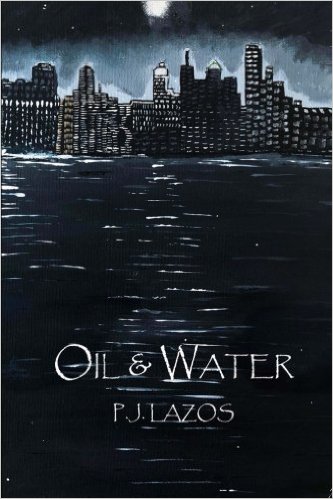

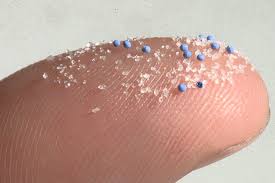
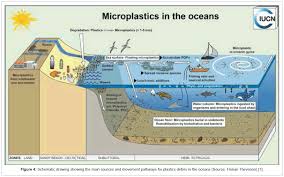
























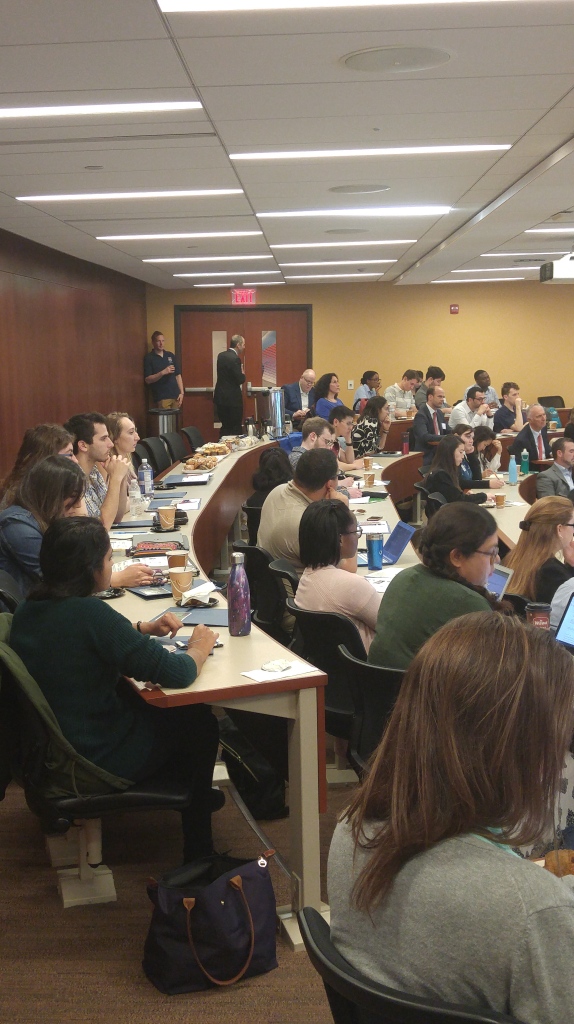
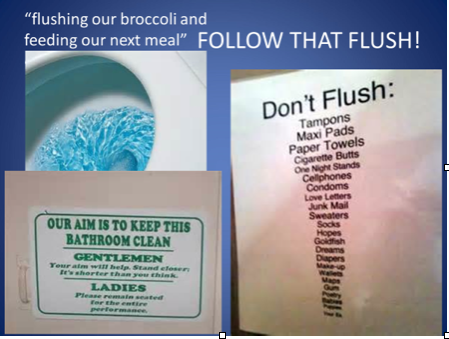




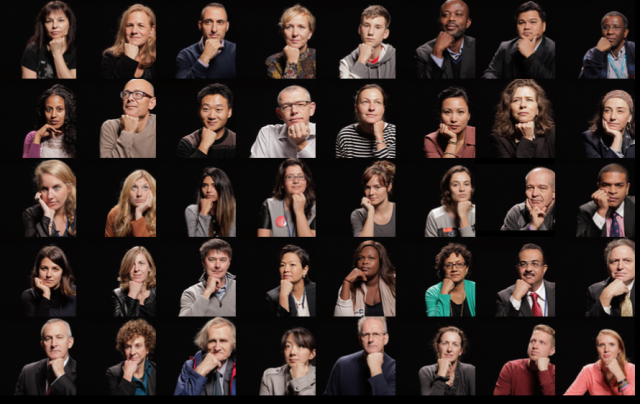
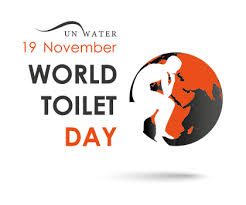
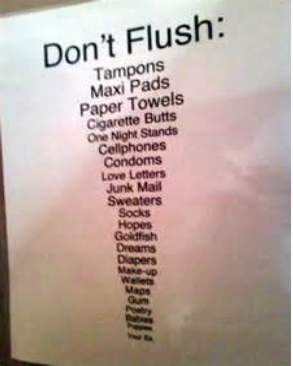
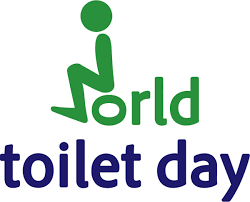
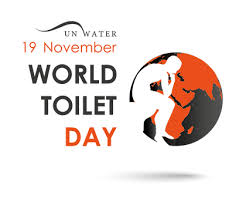
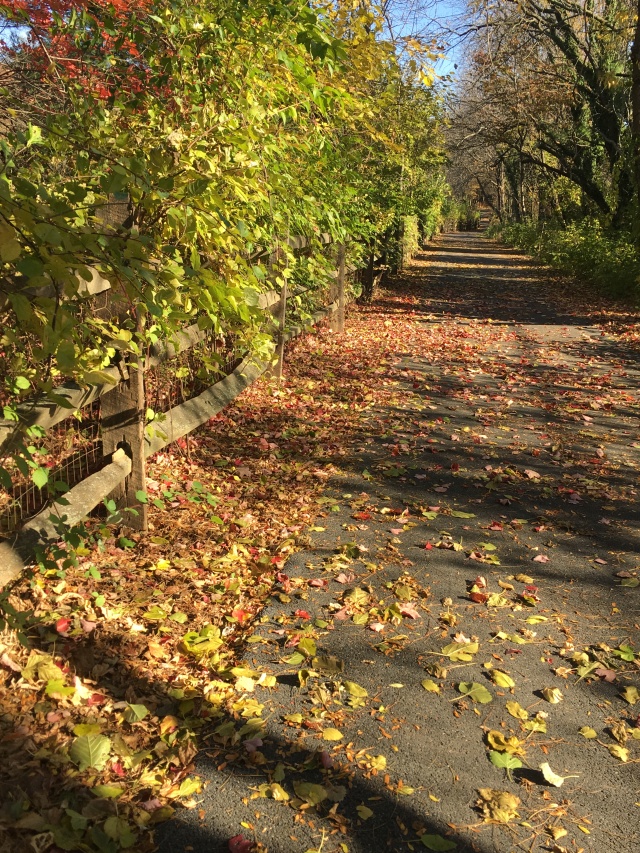
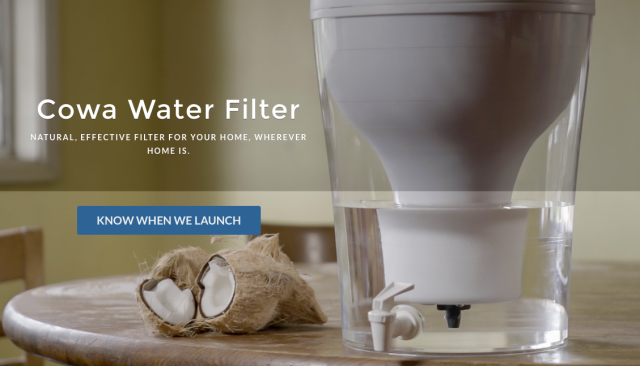
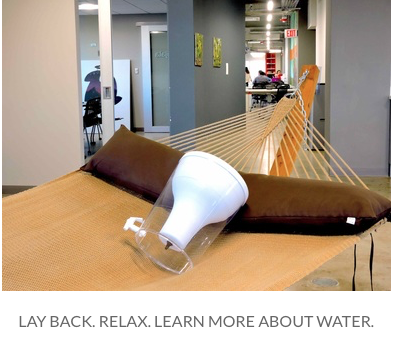
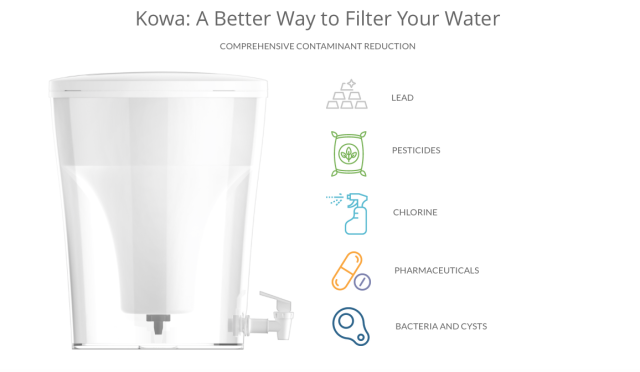


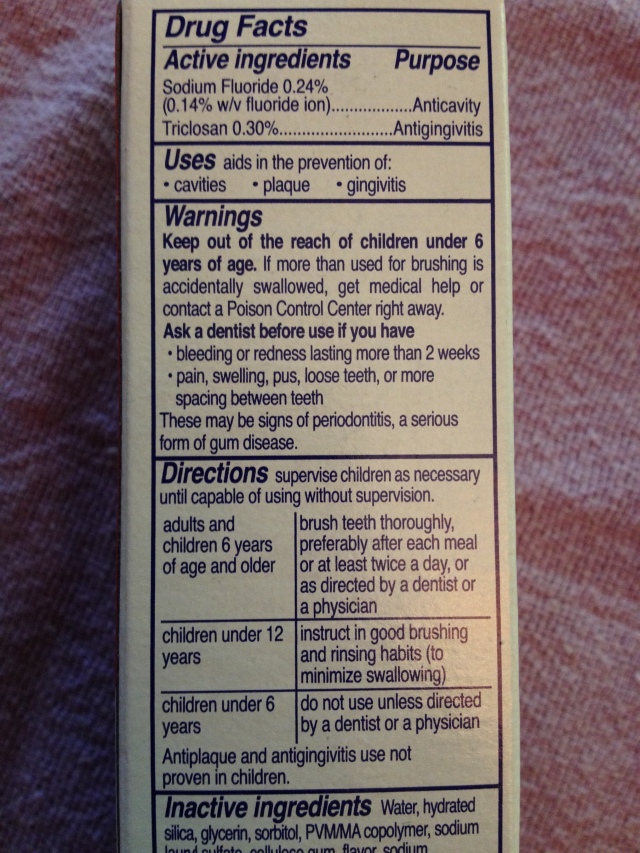

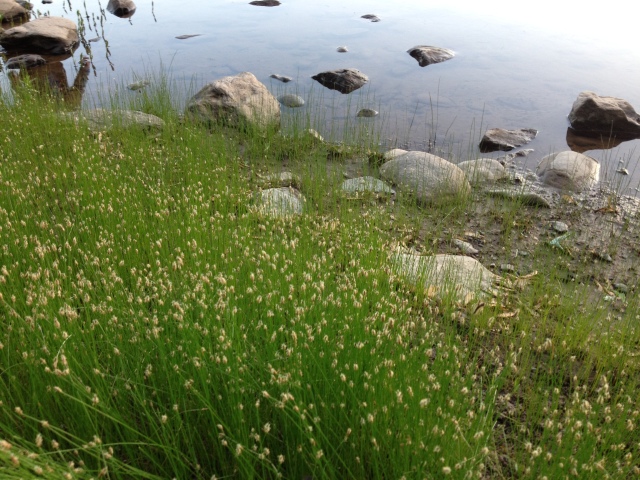
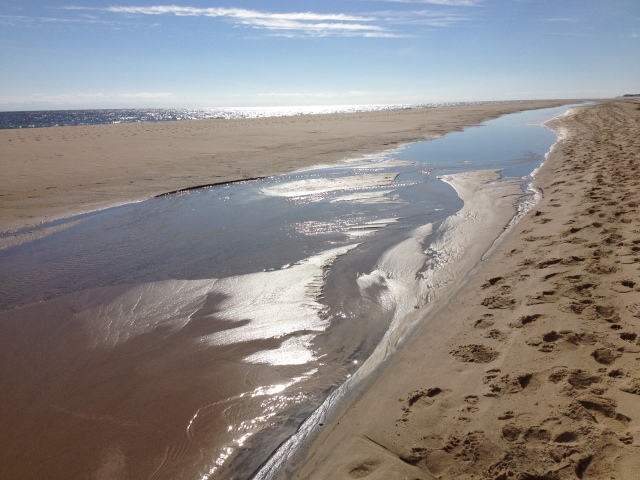


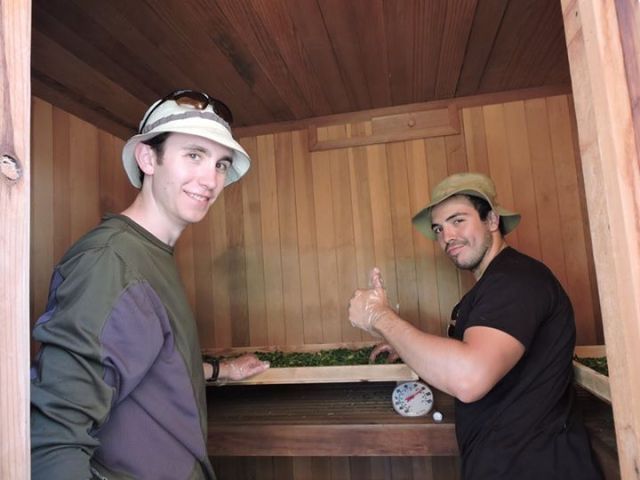

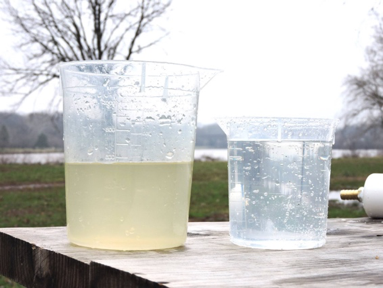

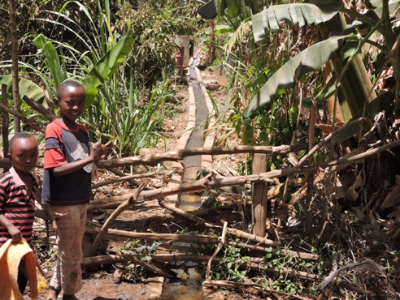
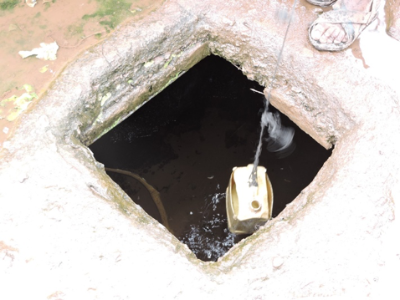
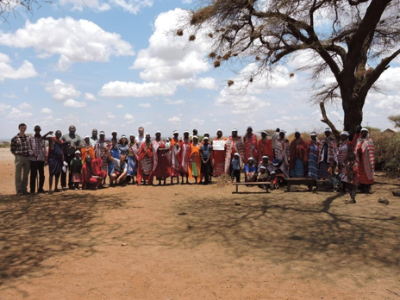
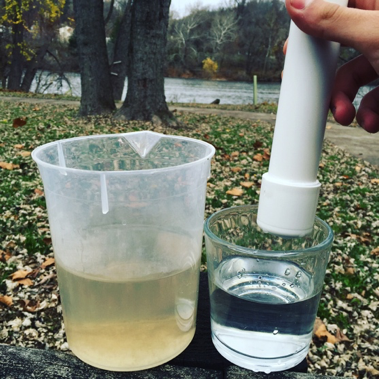
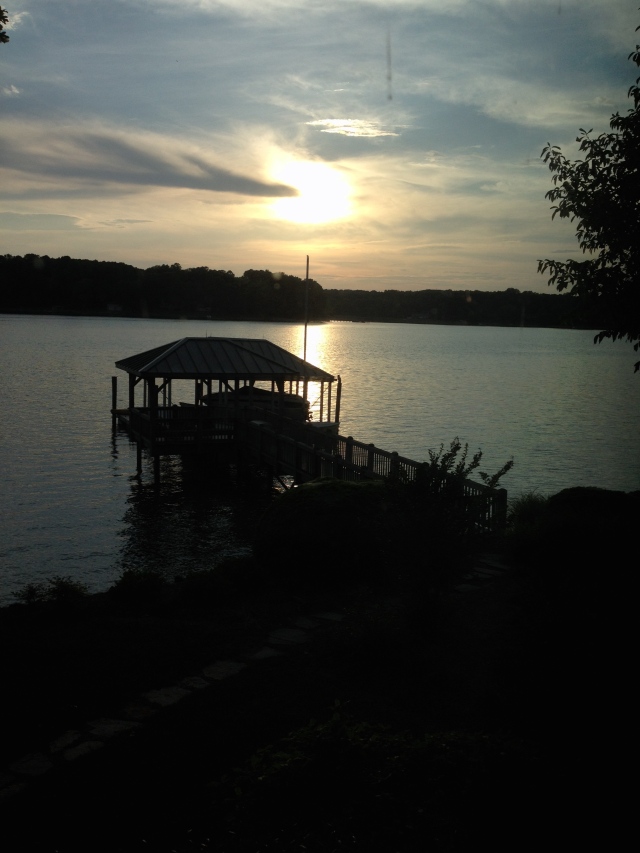

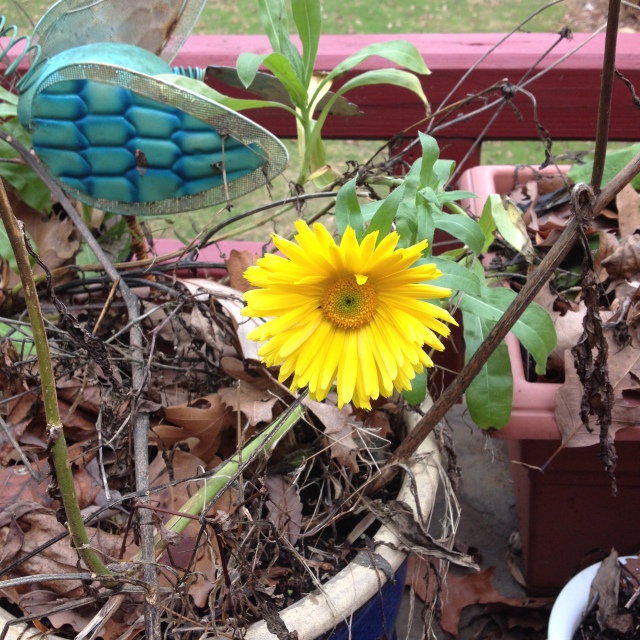
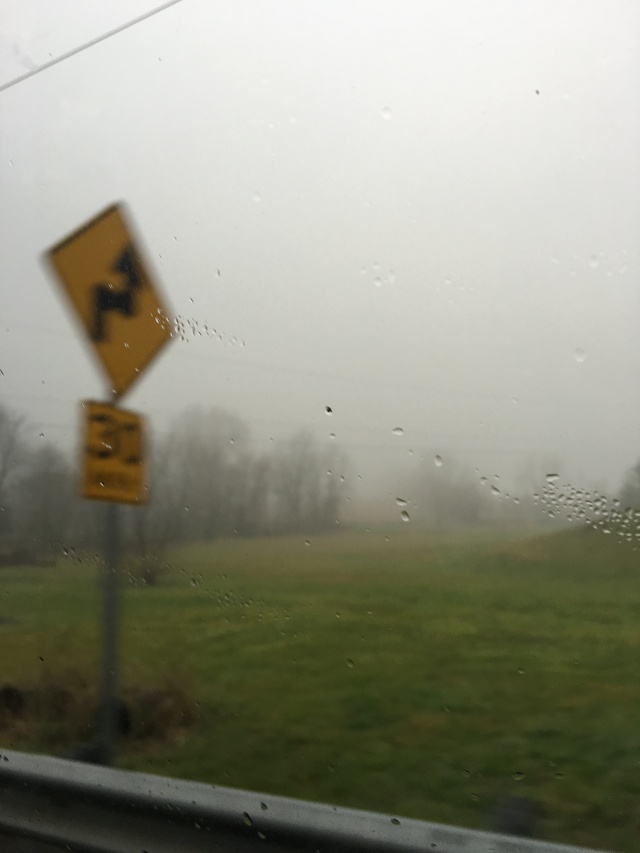
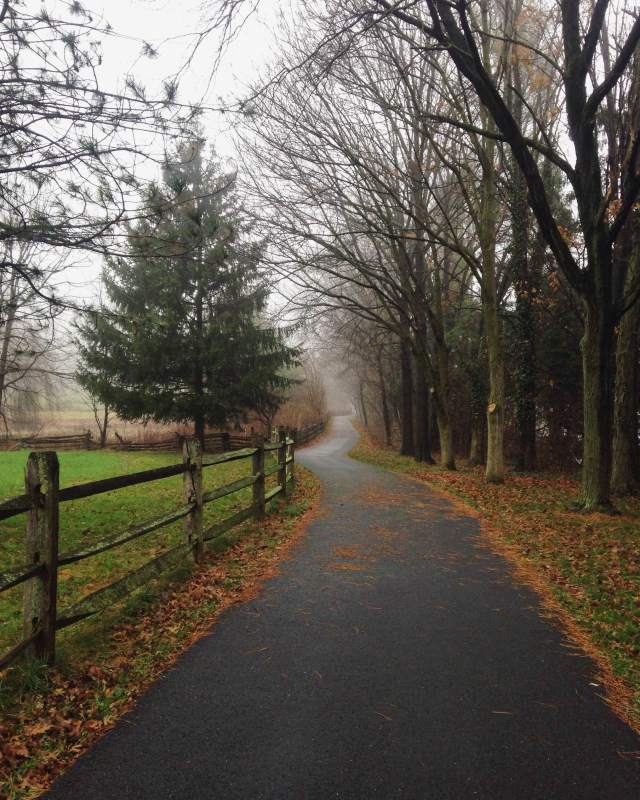
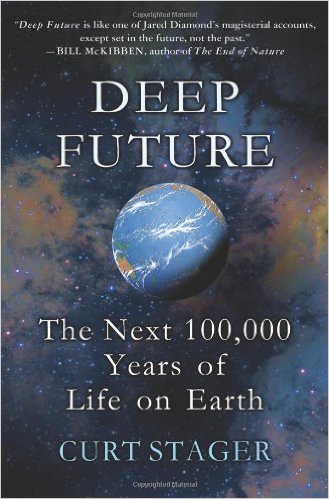

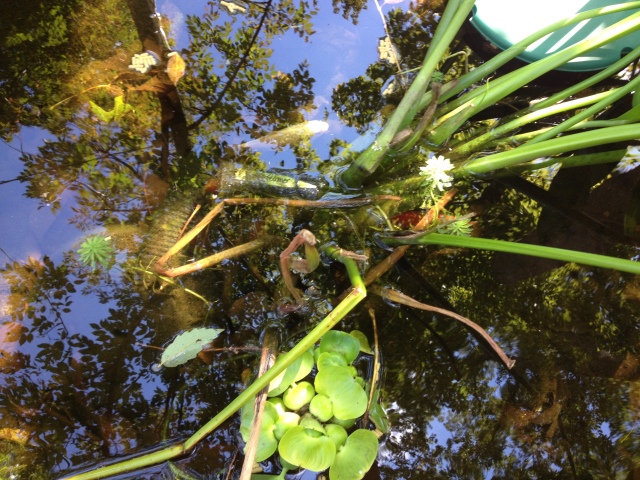
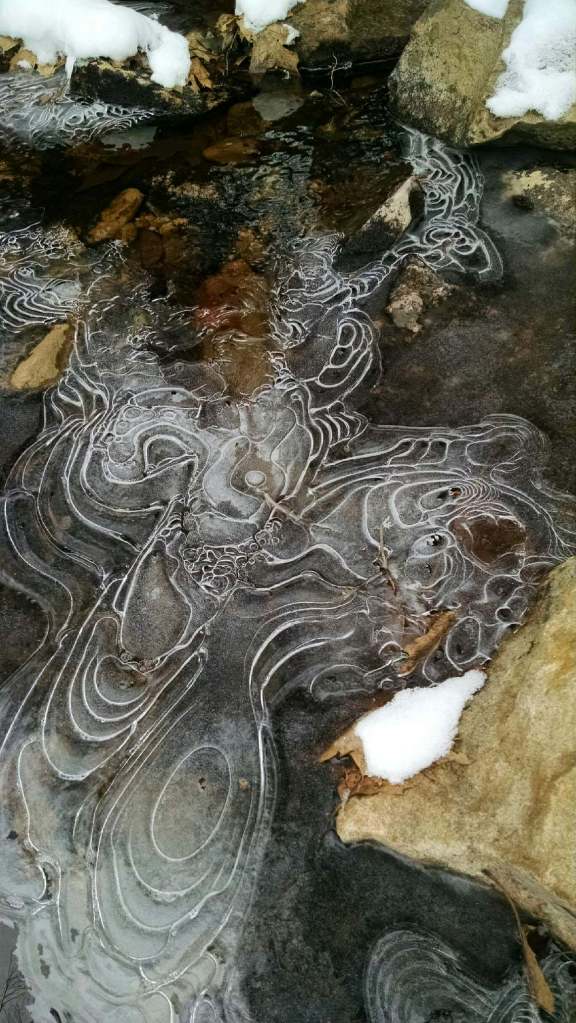
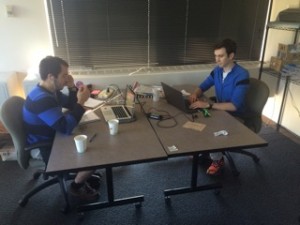

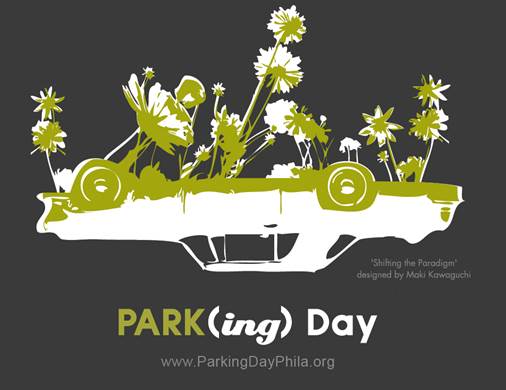
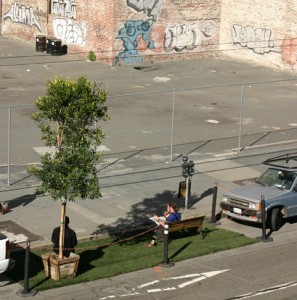

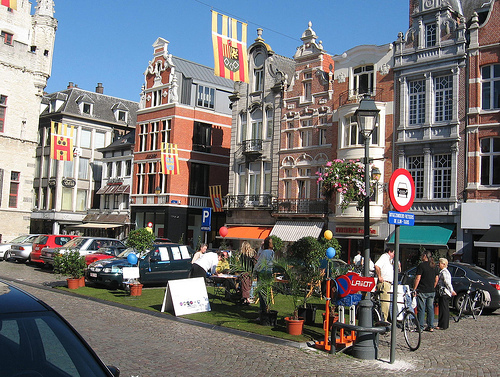
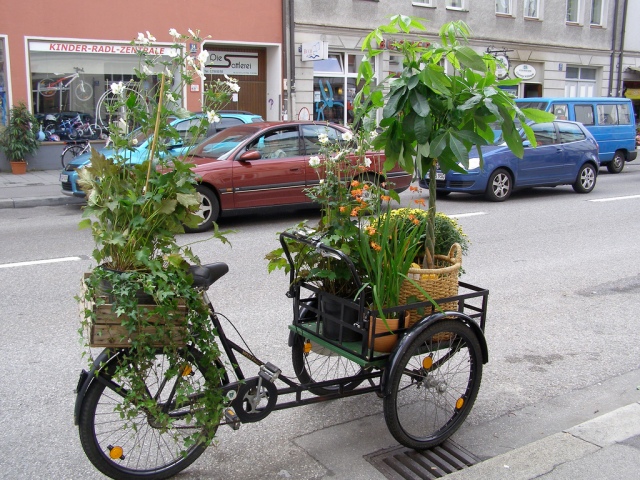
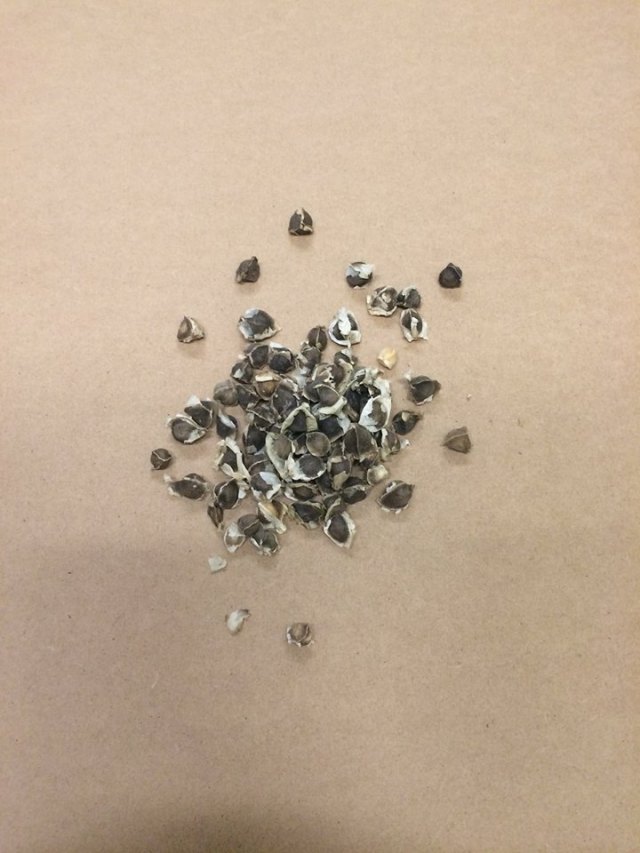
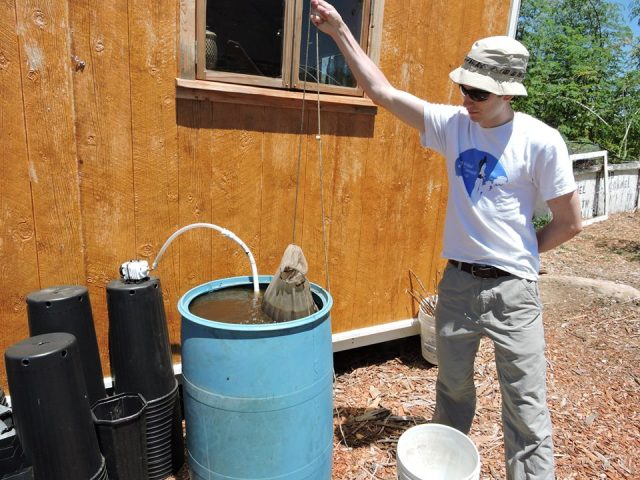

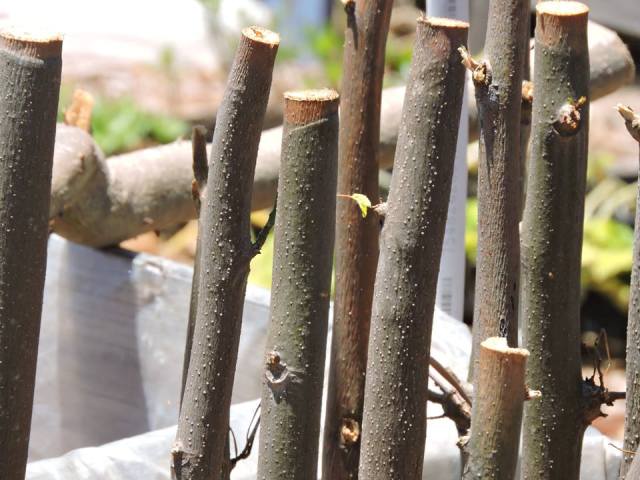
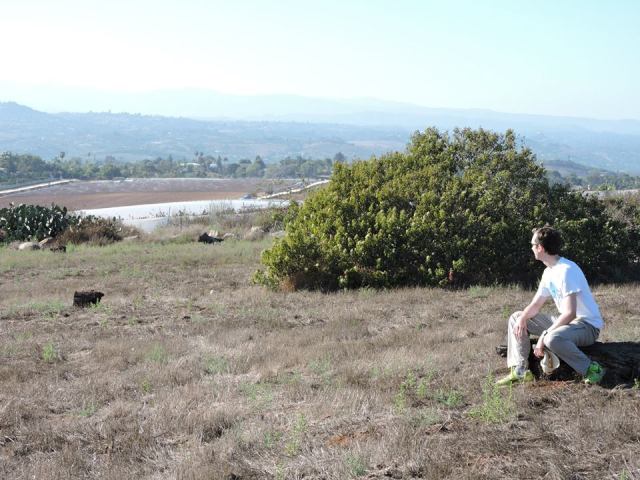
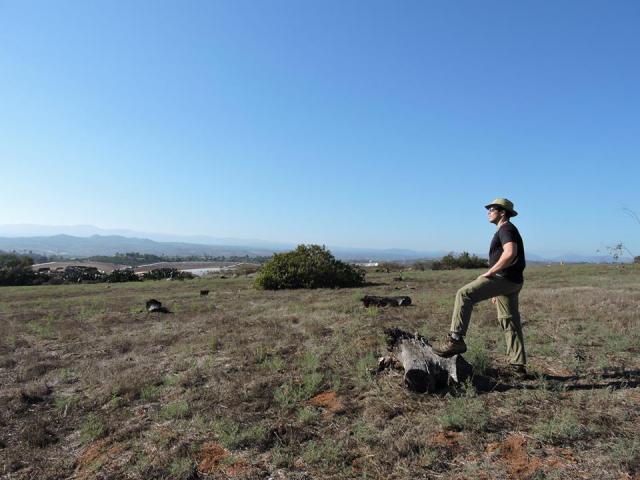
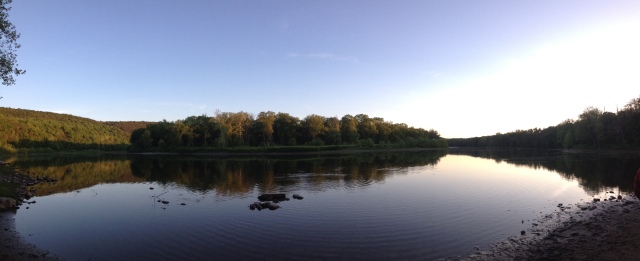
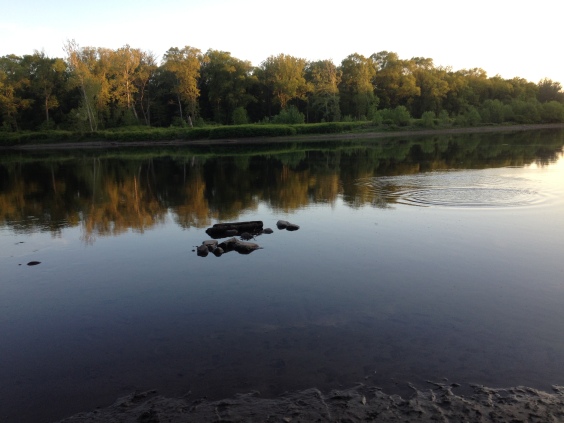

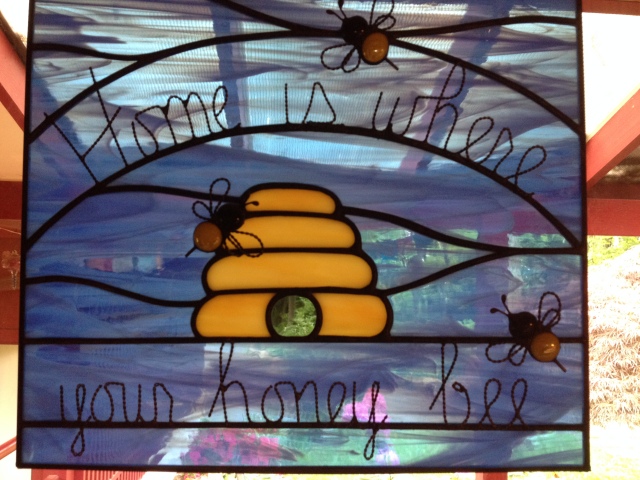

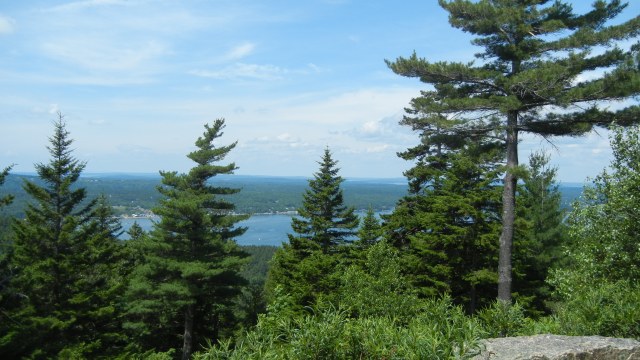
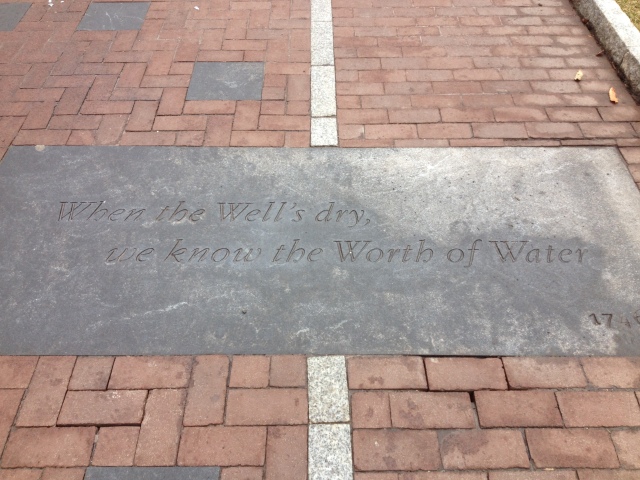
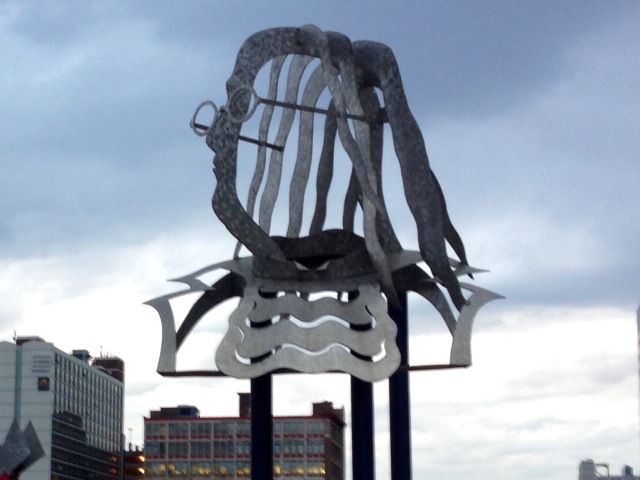
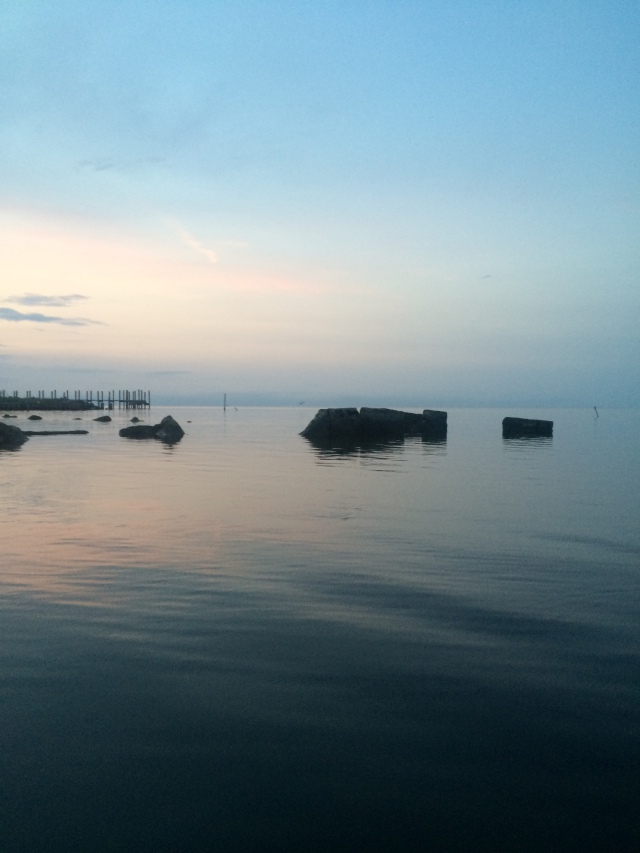






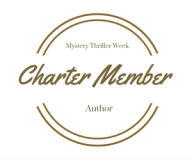




Pingback: Green Life Blue Water
Your blog is inspiring for good things.:)
LikeLiked by 2 people
Thank you!😊
LikeLiked by 1 person
Pingback: Liebster Award! – charles french words reading and writing
Thanks so much!!
LikeLike
I was talking to my daughter about such things yesterday. WALL-E is a favorite with the kids, but Blondie, being of a very nonfictional mind, stated matter of factly, “This isn’t real.”
Me: “No, but they told this story because the world COULD be like this if people don’t take care of it.”
Blondie: (pause) “This happened a long time ago.”
Me: “No, it didn’t happen, it COULD happen in the future if people aren’t nice to the planet.”
Blondie: (pause) “This is another planet.”
Me: (sigh) “This is earth, and people make LOADS of garbage, Blondie. If people don’t change, Earth could be like this.”
Blondie: (pause) “It’s Wall-e!”
Ah, well.
LikeLiked by 2 people
Actually, I wonder if she might be right about the part where it happened a long time ago. Sometimes it just feels like we’ve been around this block before, perhaps again and again. Let’s hope Blondie’s vision is more on point than ours!
LikeLiked by 2 people
Indeed! I want her to realize that humanity IS capable of doing this, but you’re right that it’s also good for her to know we’re capable of doing the right thing, too, and help the planet be better.
LikeLiked by 1 person
Amen to that! My son decided to go into environmental science even though I haven’t ever mentioned that as a career. I think they pick things up through osmosis sometimes.
LikeLiked by 2 people
Neat! Yes, there’s a good deal simply absorbed by little ones. Sometimes it’s lovely stuff, and sometimes, it’s, you know, language they heard when Mommy broke the casserole dish and sent ceramic and food bits everywhere. 🙂
LikeLiked by 1 person
Haha! I have definitely done that before. 🙂
LikeLiked by 2 people
Thank you, jeanleesworld, for writing what seems to be an allegory of some sort.
Well done, pjlazos, for giving us a detailed introduction to the various projects, teams and communities contributing to Lancaster’s new era of sustainability.
I would like to inform you that the YouTube video entitled “kiribati Will Drown In A Rising Pacific Ocean By 2030” cannot be played. It displays the message “This video is unavailable.”
Happy November to both of you very soon!
LikeLike
Thanks, soundeagle. I will check to see why the link is broken. Happy November back at you. ;0)
LikeLiked by 1 person
You are very welcome, pjlazos. 🙂
LikeLiked by 1 person
Wow, this is amazing! I am going to need a week to read it though it’s very extensive (in a good way).
LikeLiked by 1 person
Aw, thanks! I hope that there’s a take-away in there for you to make it worth your while. One world, one water, eh? 🙂
LikeLiked by 2 people
Thanks Rupert, this comes just in the appropriate time/ Open defecation is a wide non discrete practices in both urban cities and rural areas in Cameroon. Nearly all sources of water have been contaminated by this cruel human behaviour. This is so because more than 2 billion people in the world largely lack access to public and individuals toilets. Again, this has been largely affected by the fact that policy do not match practice. Laws (water and environment) are desecrated with impunity. People constructing along the river banks and directing their sewage into the running streams at the detriment of those at the lower course. Can Voice of Grace Foundation which has worked since 2006 on this communal issue to change the negative perception and mindsets be part of this project?
Waiting to hear from you, We’ll love to be part of the project.
Thanks
Pastor, Dr. Ndonwi Wilfred.
CEO and Founder,
Voice of Grace Foundation
LikeLiked by 1 person
Thanks, Pastor Wilfred for all you are doing to raise awareness for this very important environmental issue and to ease the suffering of others. WASH issues are very likely the single most important issue of our times. I will make sure Rupert gets your contact information. Pam
LikeLiked by 1 person
This is accomplished blog!
Glad to have found it!
LikeLiked by 1 person
Thank you!
LikeLiked by 1 person
Pam, I truly enjoyed reading this and other articles you have written. When are you publishing my favorite, OIL AND WATER???
LikeLiked by 1 person
Thanks, John! Hope to have Oil and Water out before year’s end!
LikeLiked by 1 person